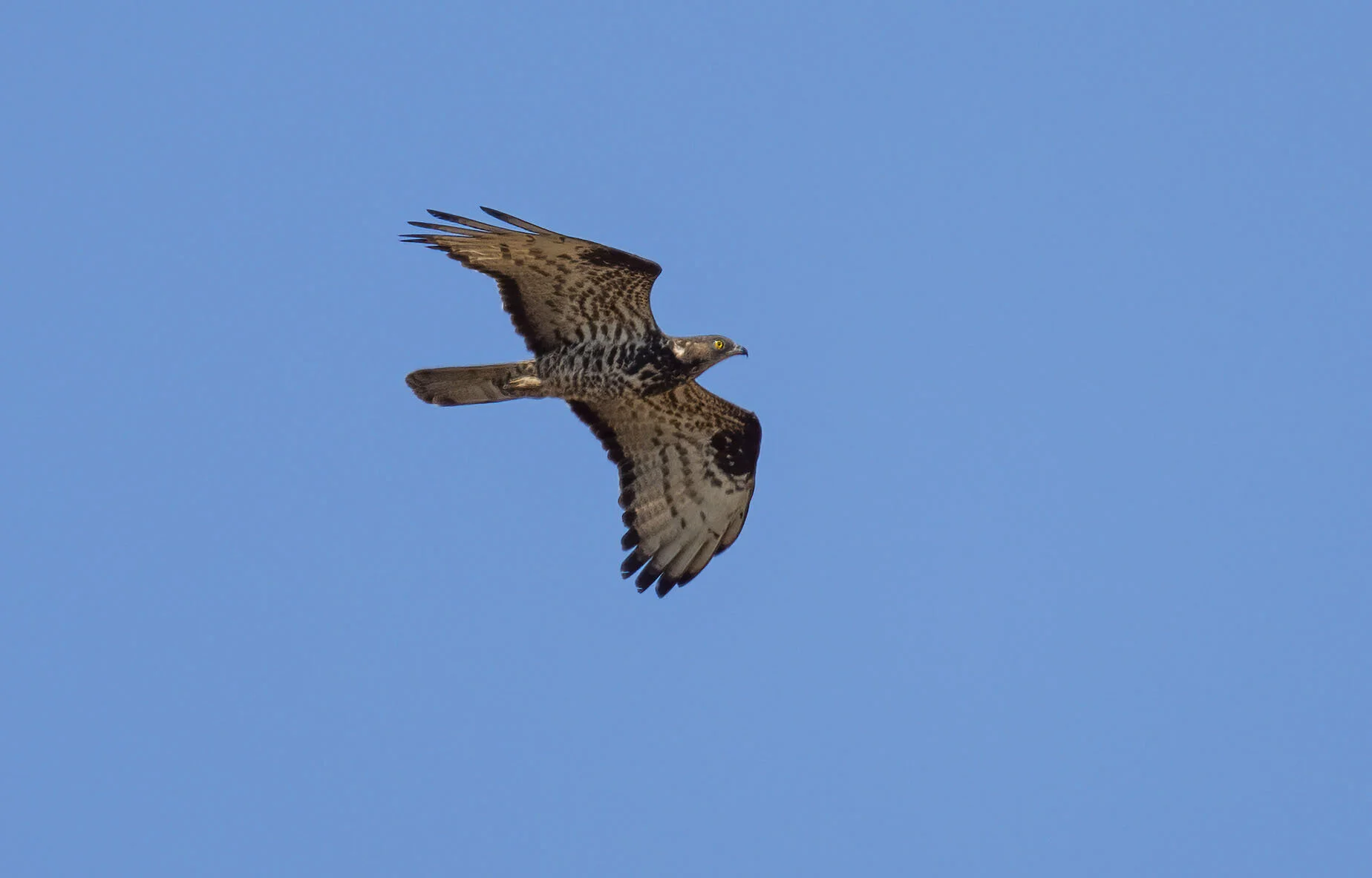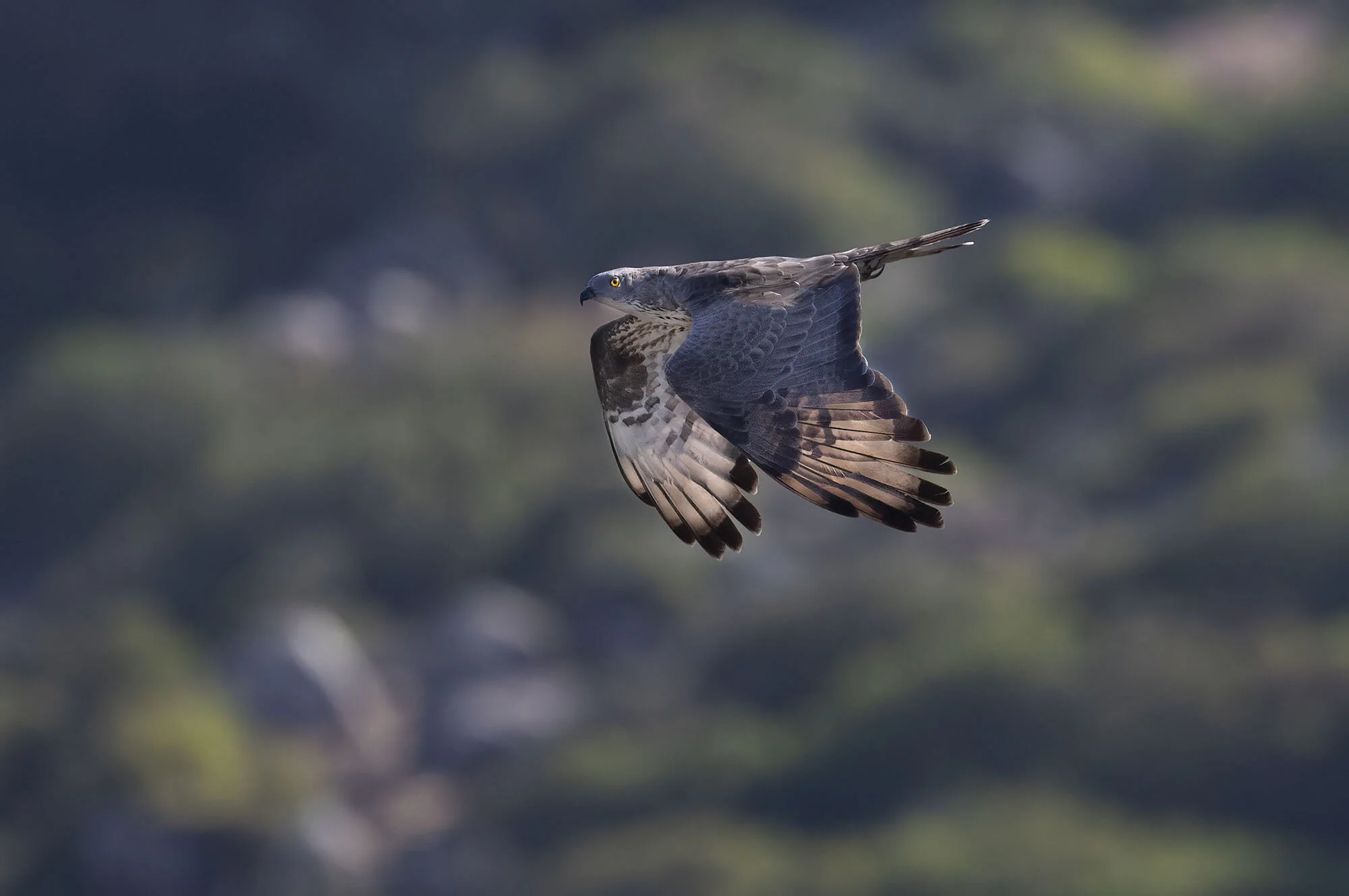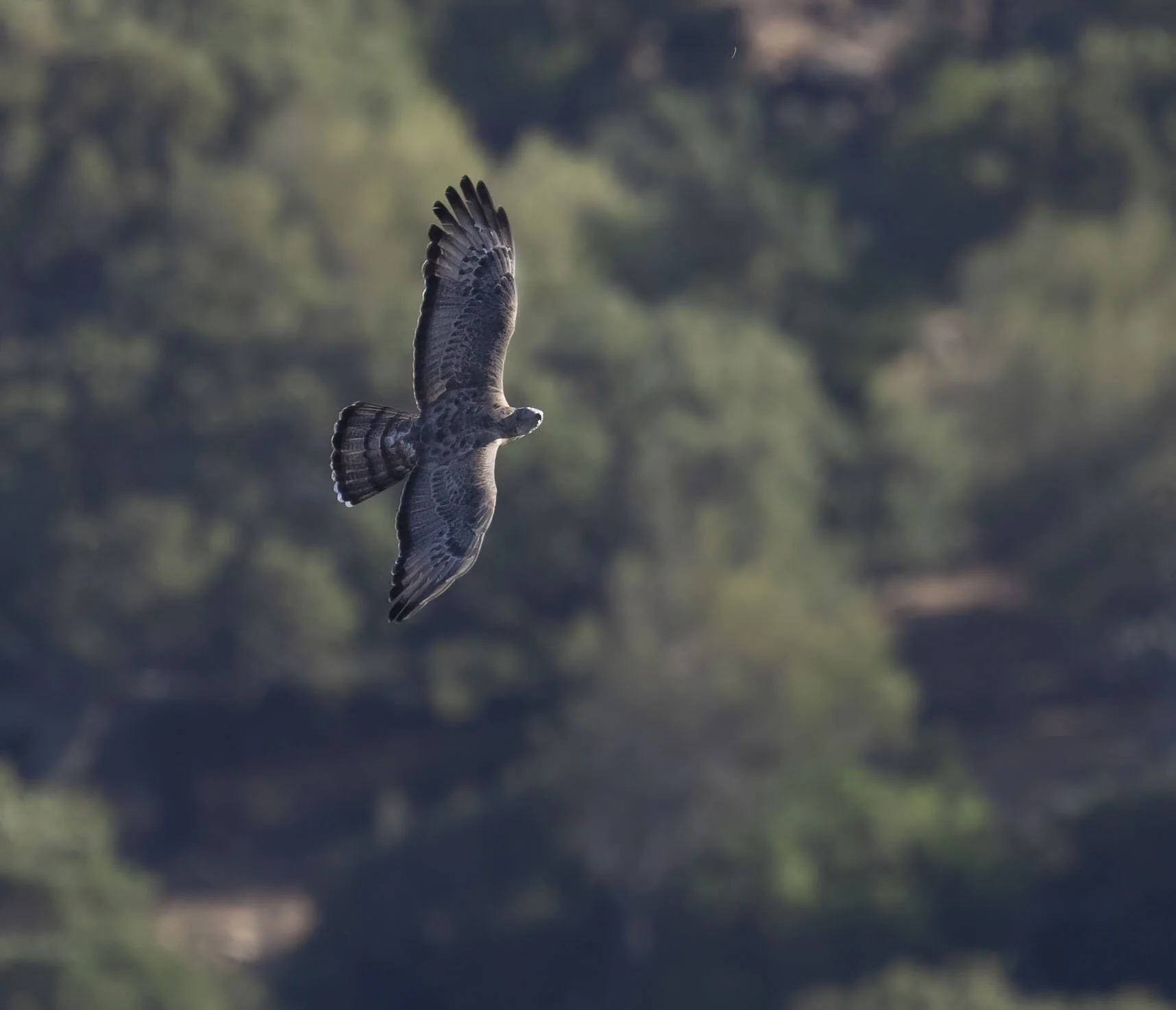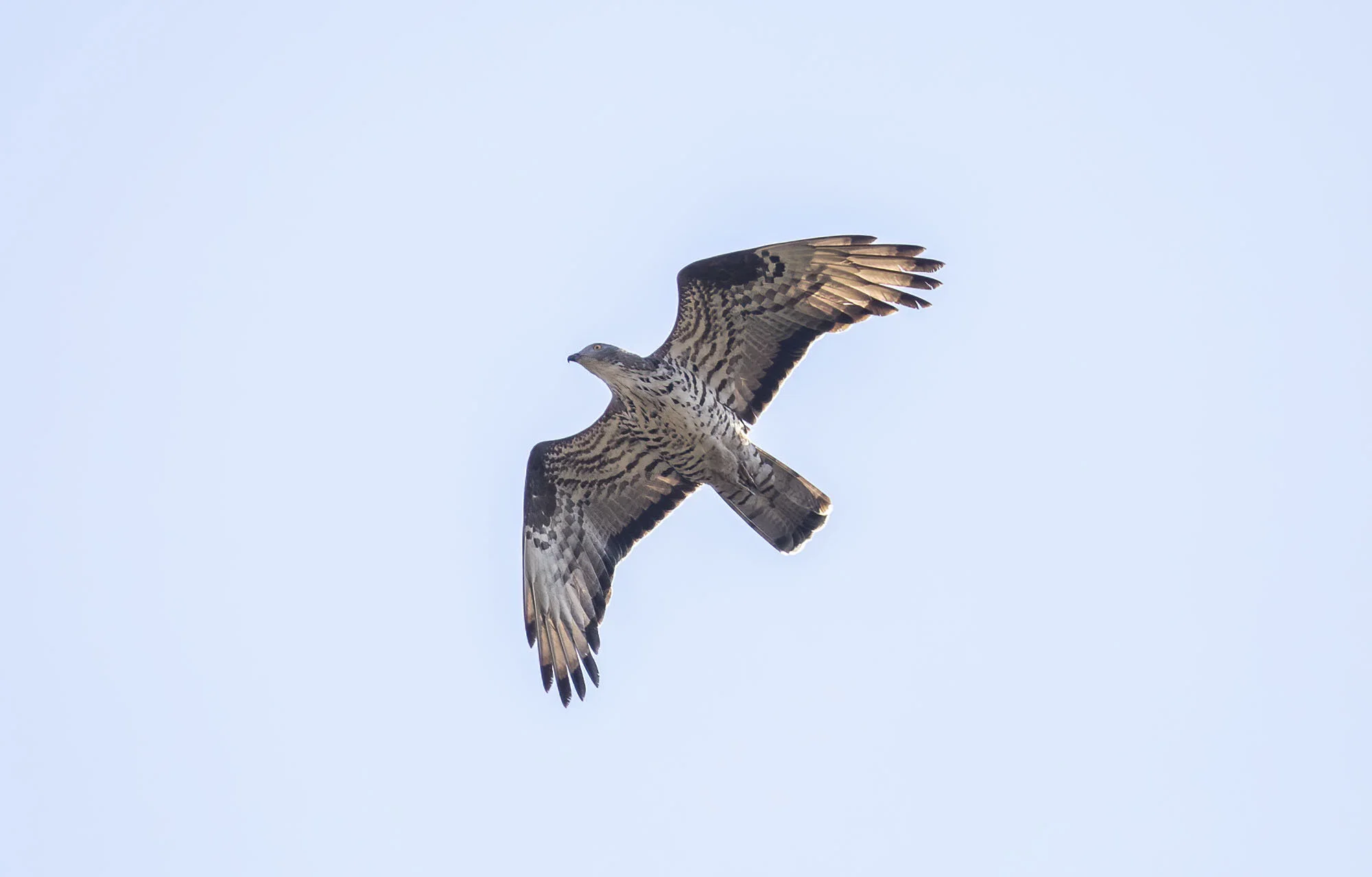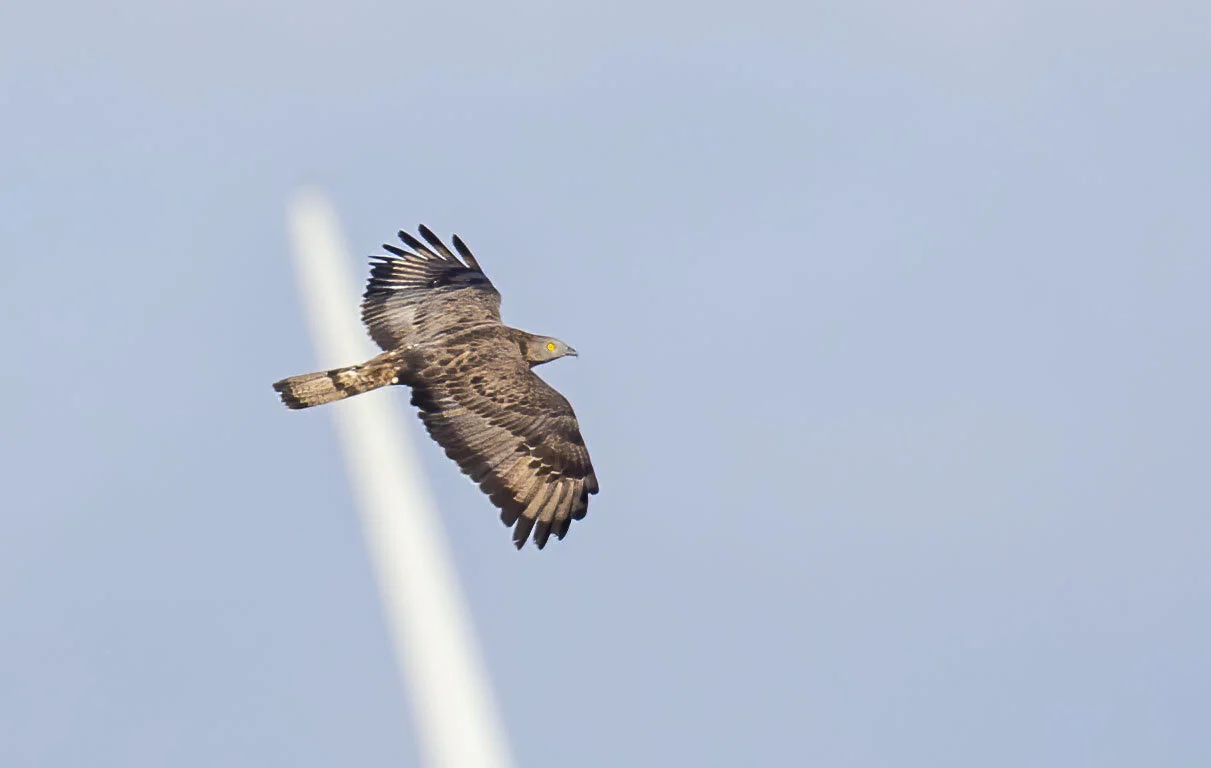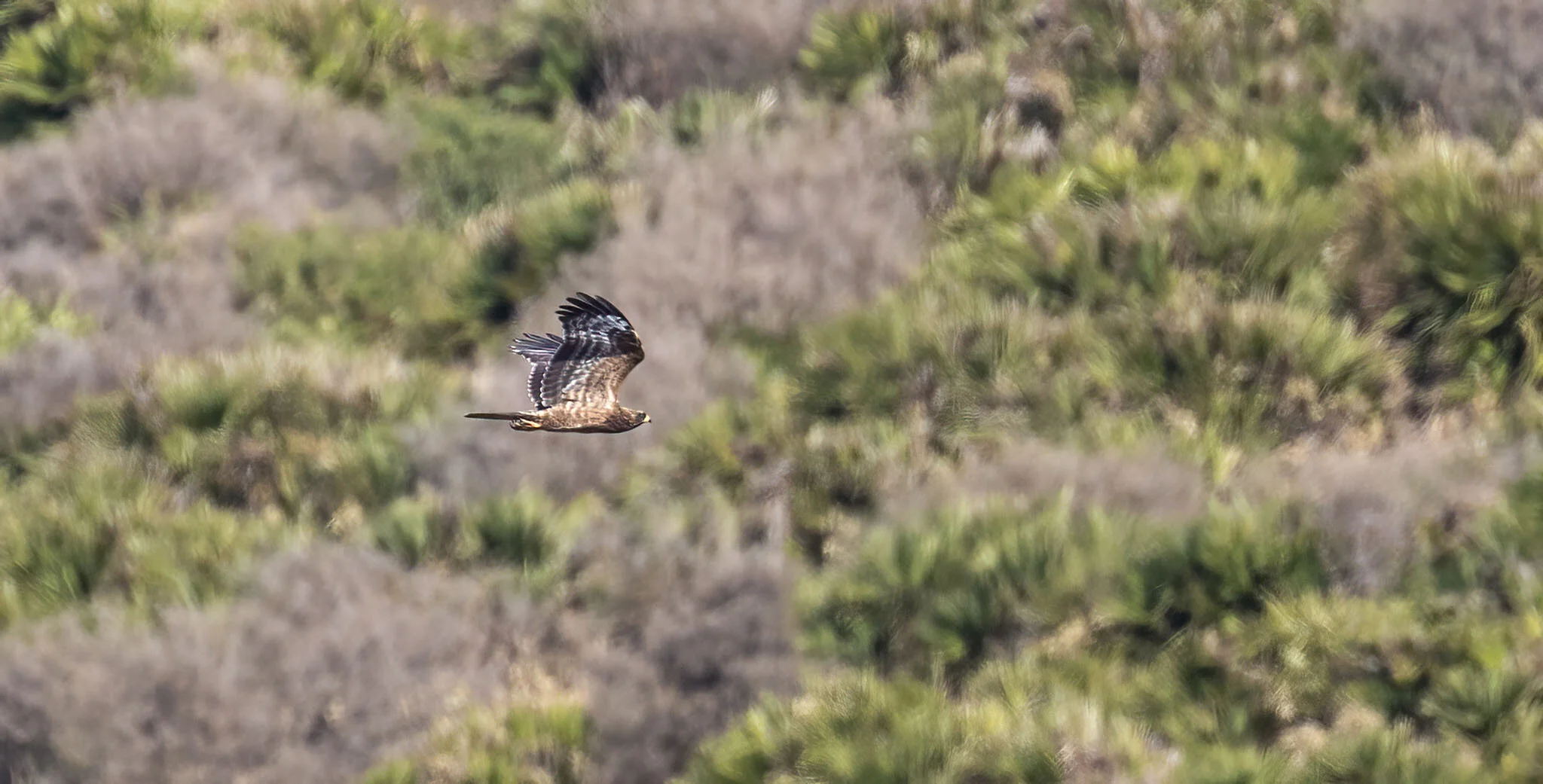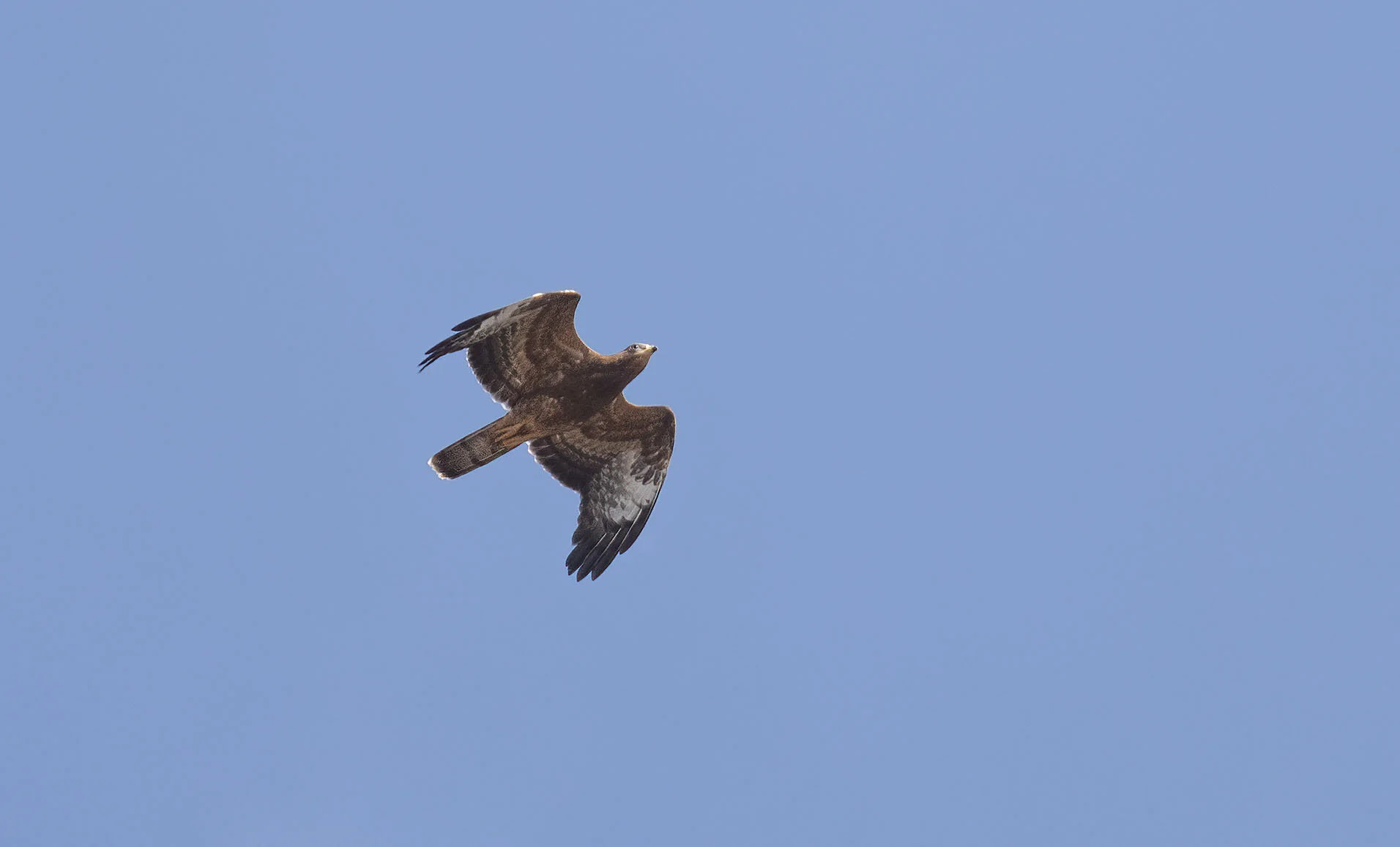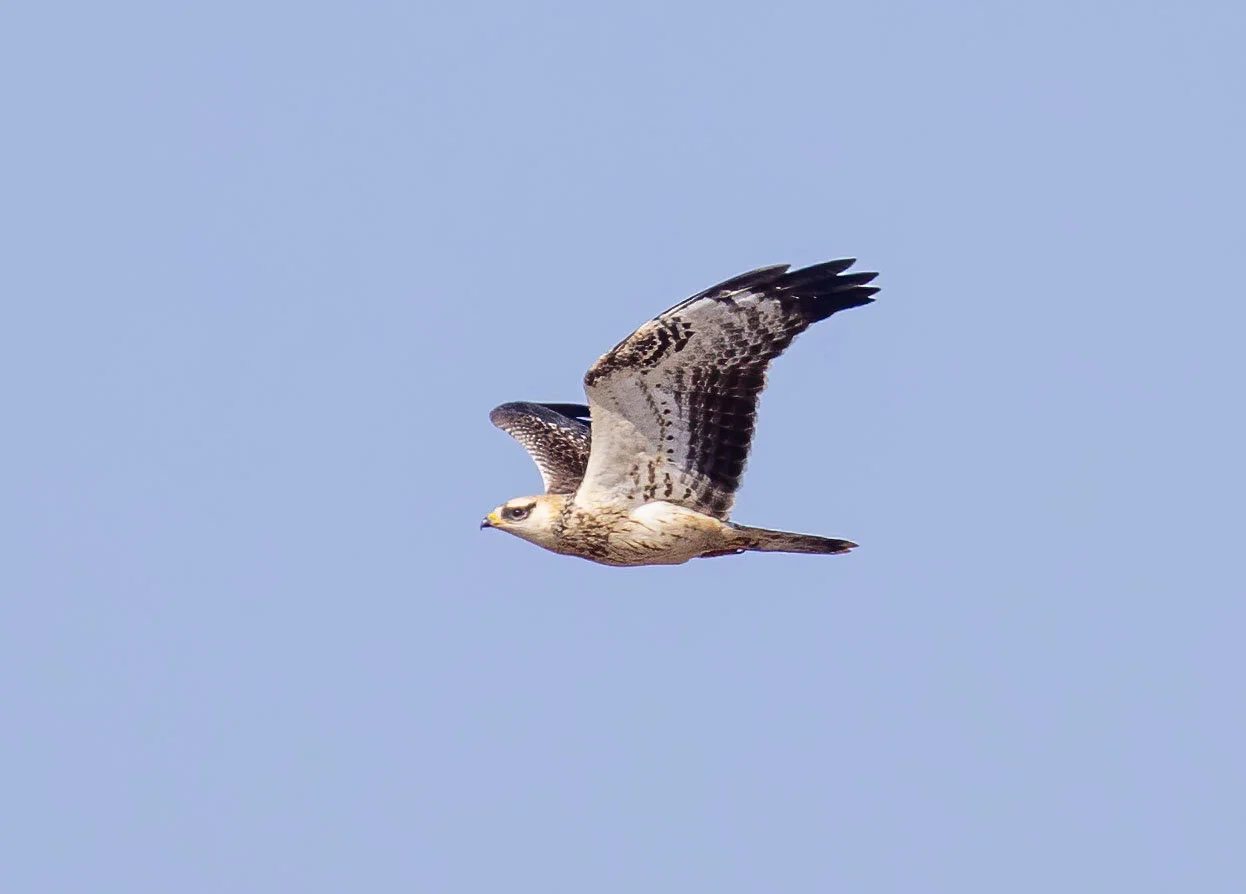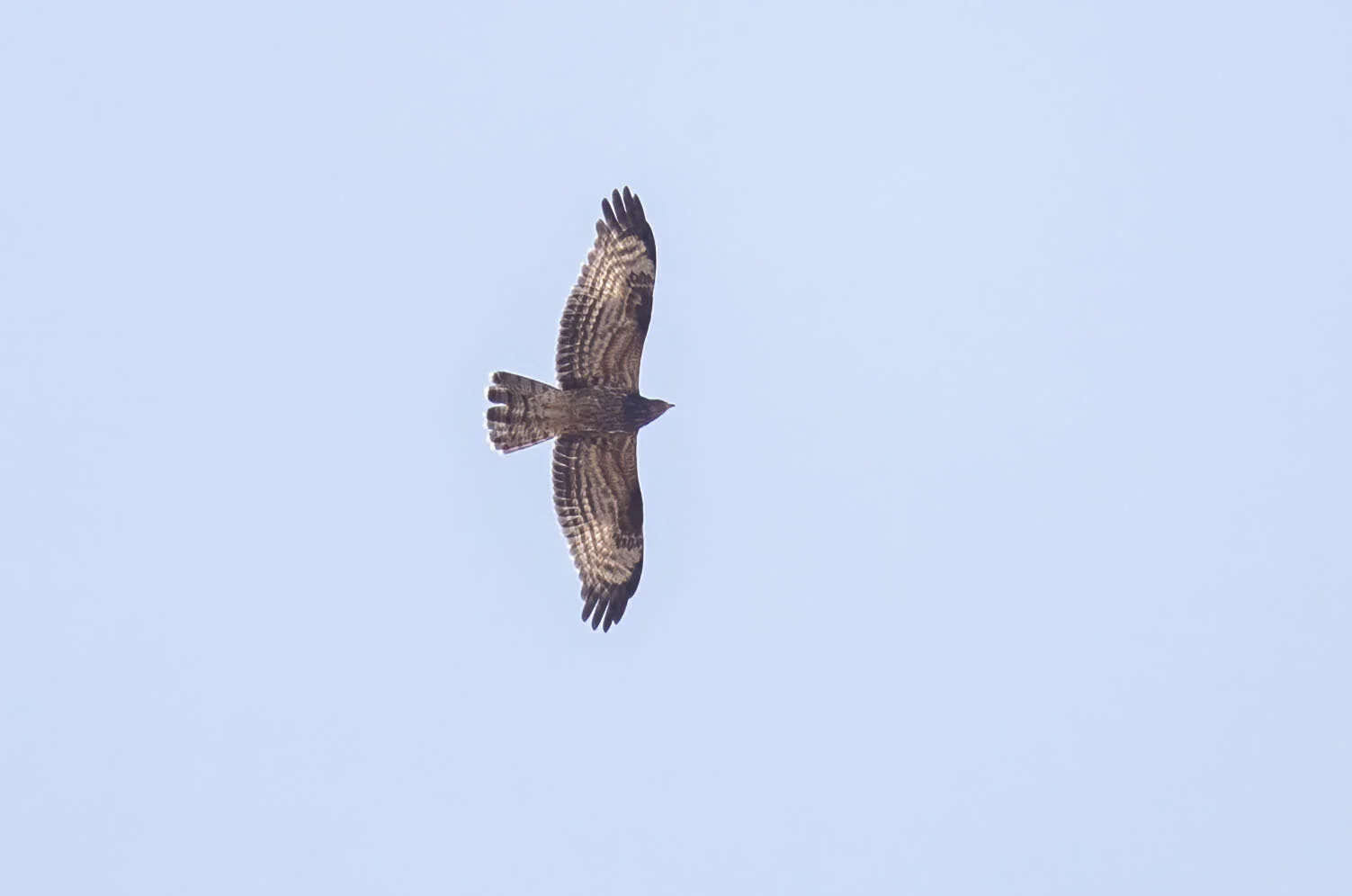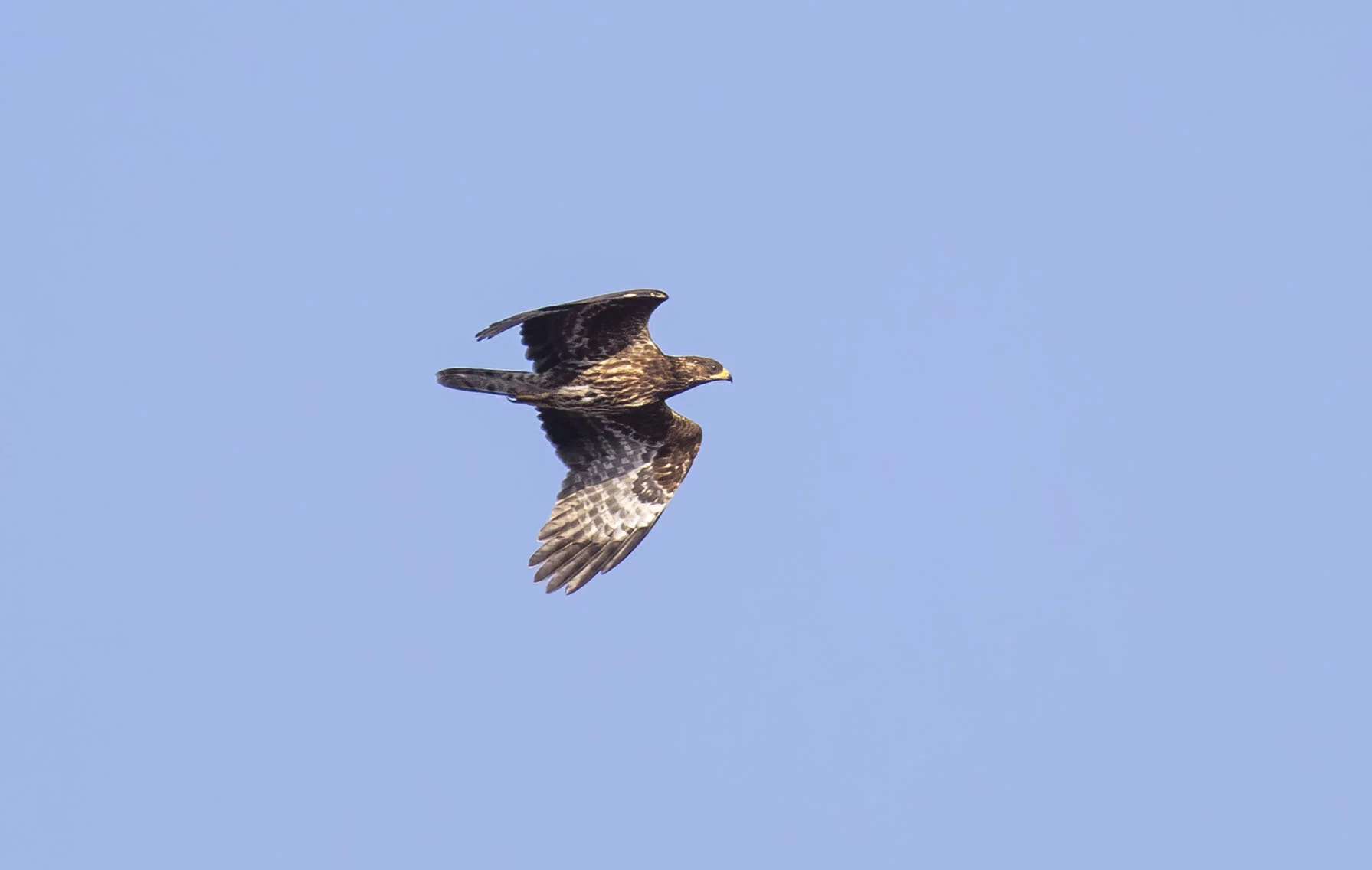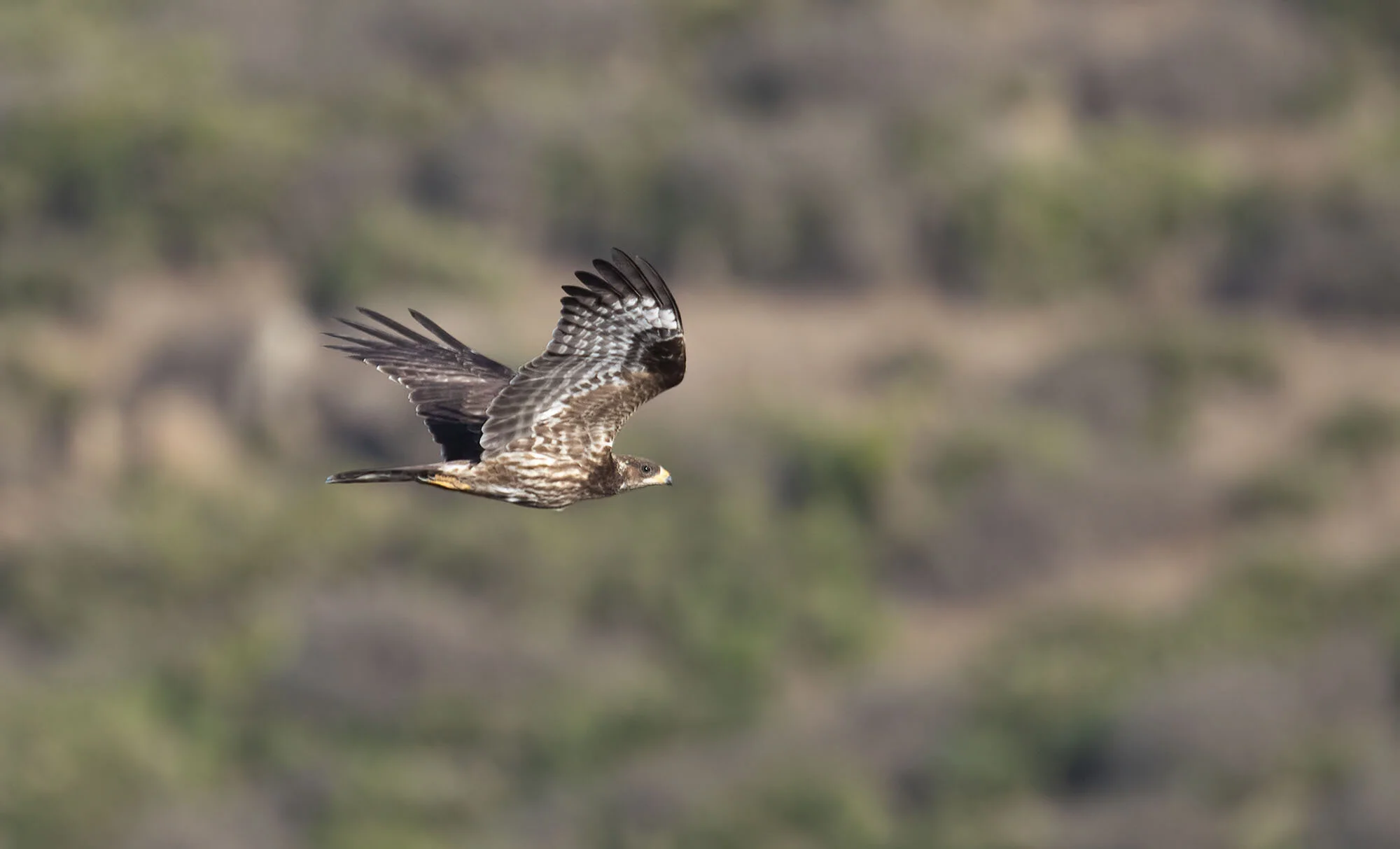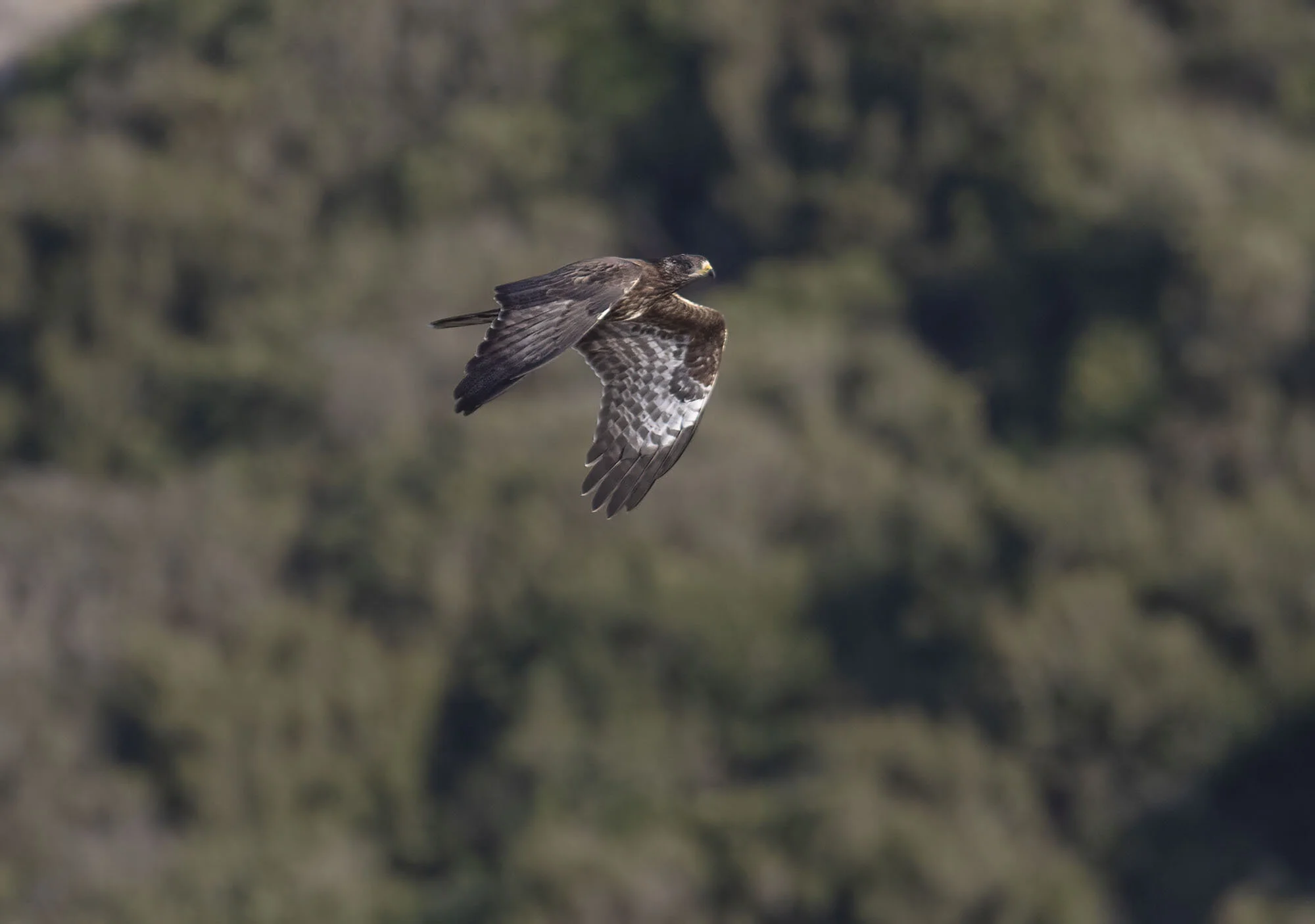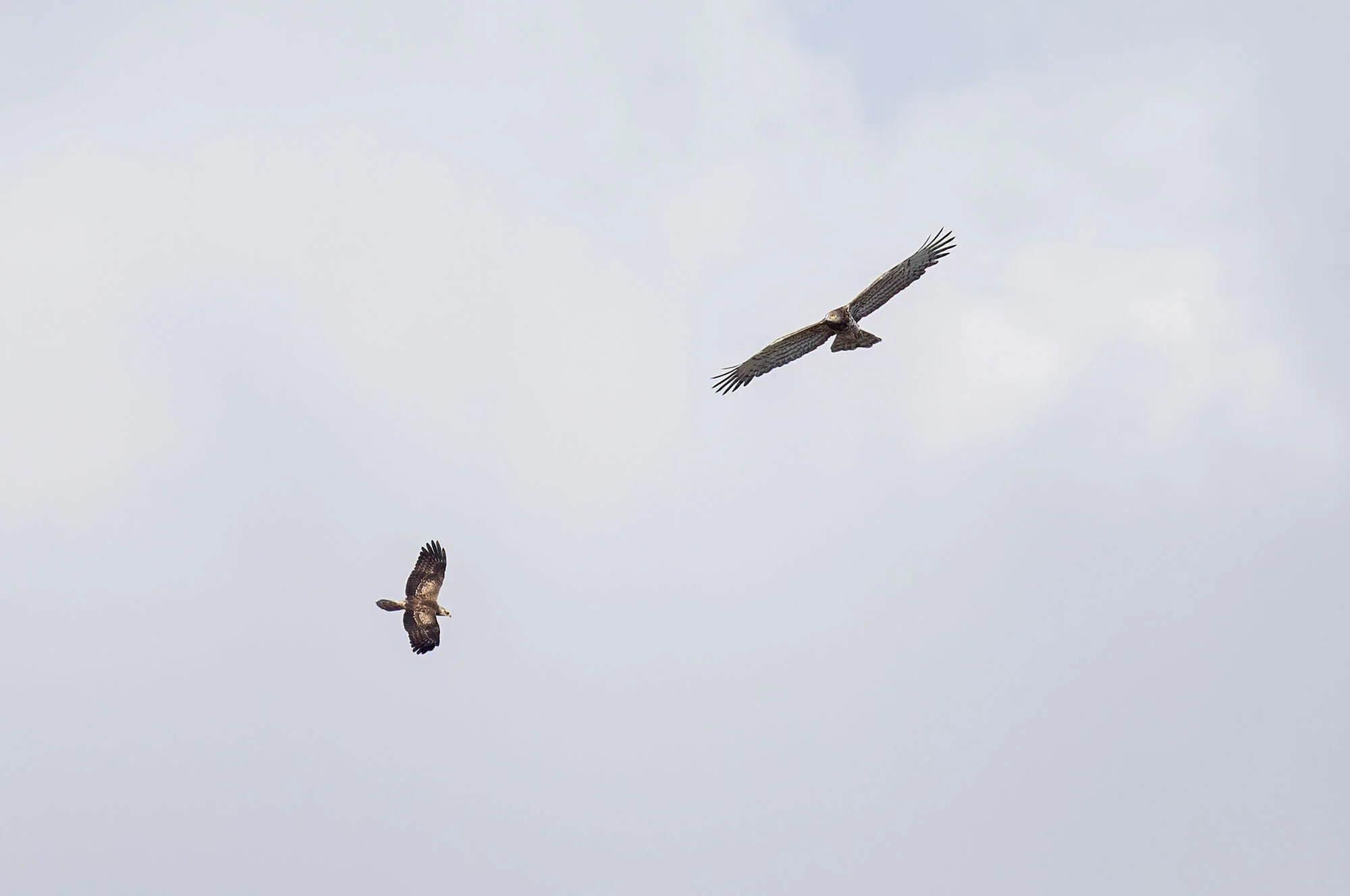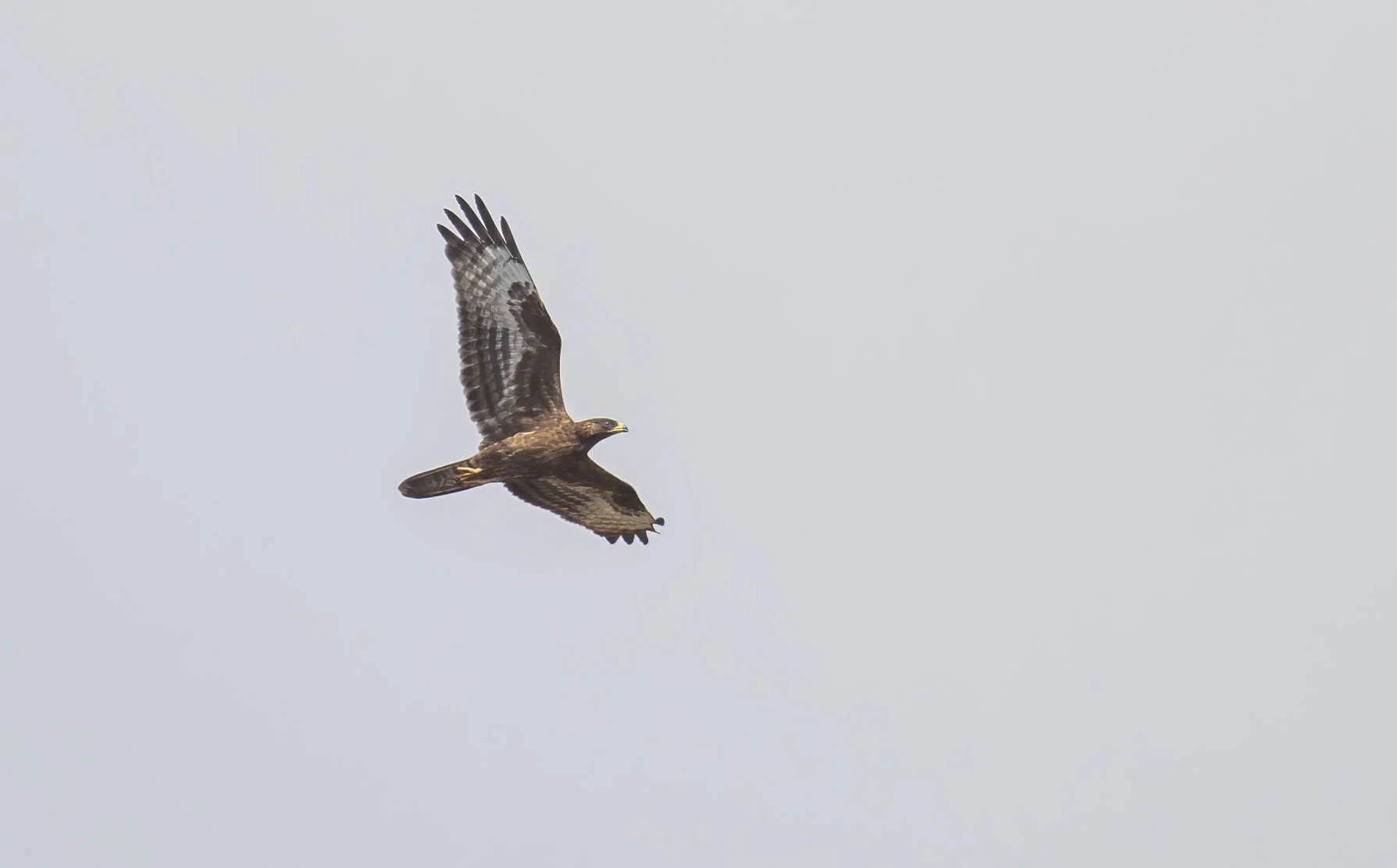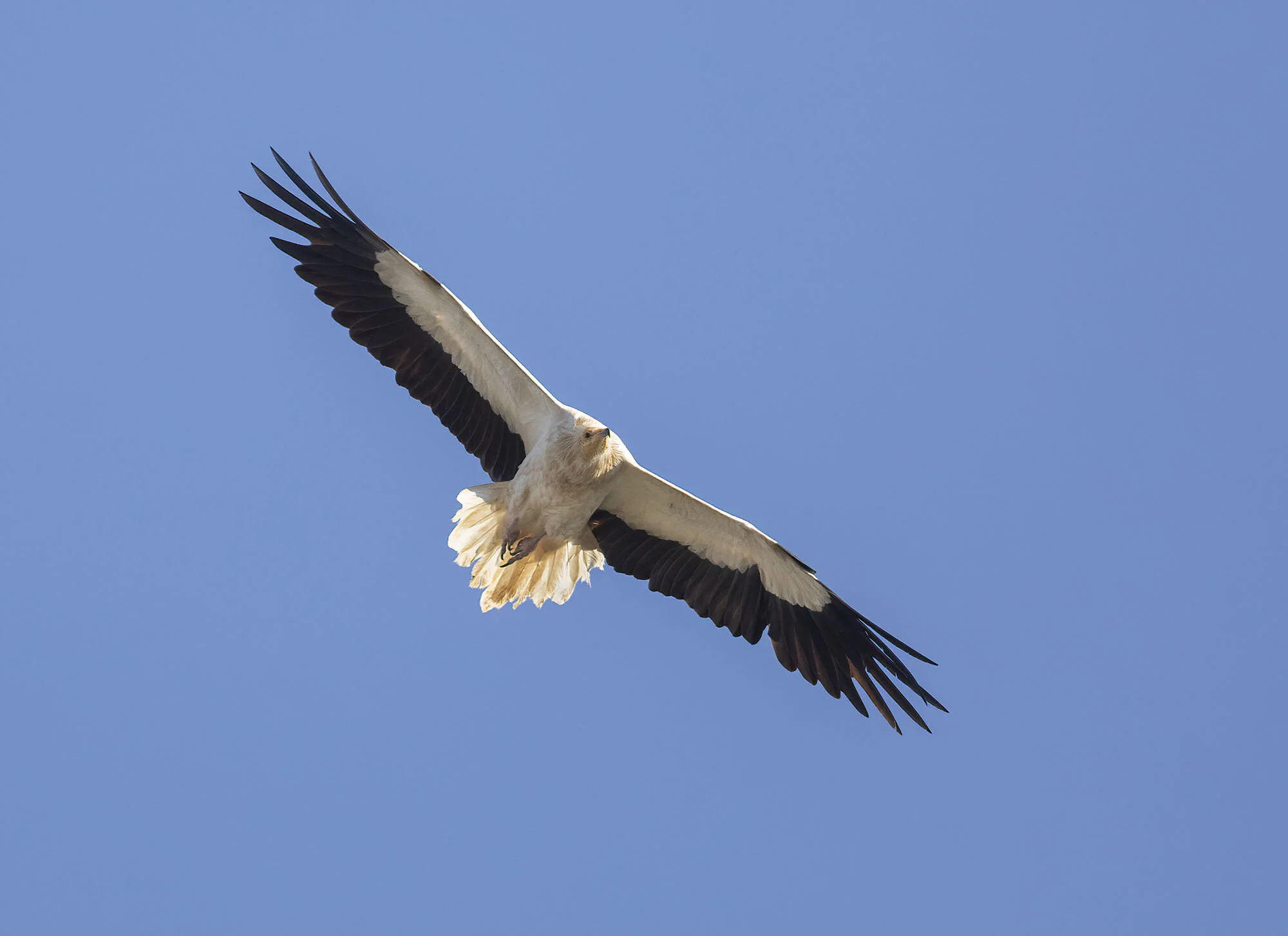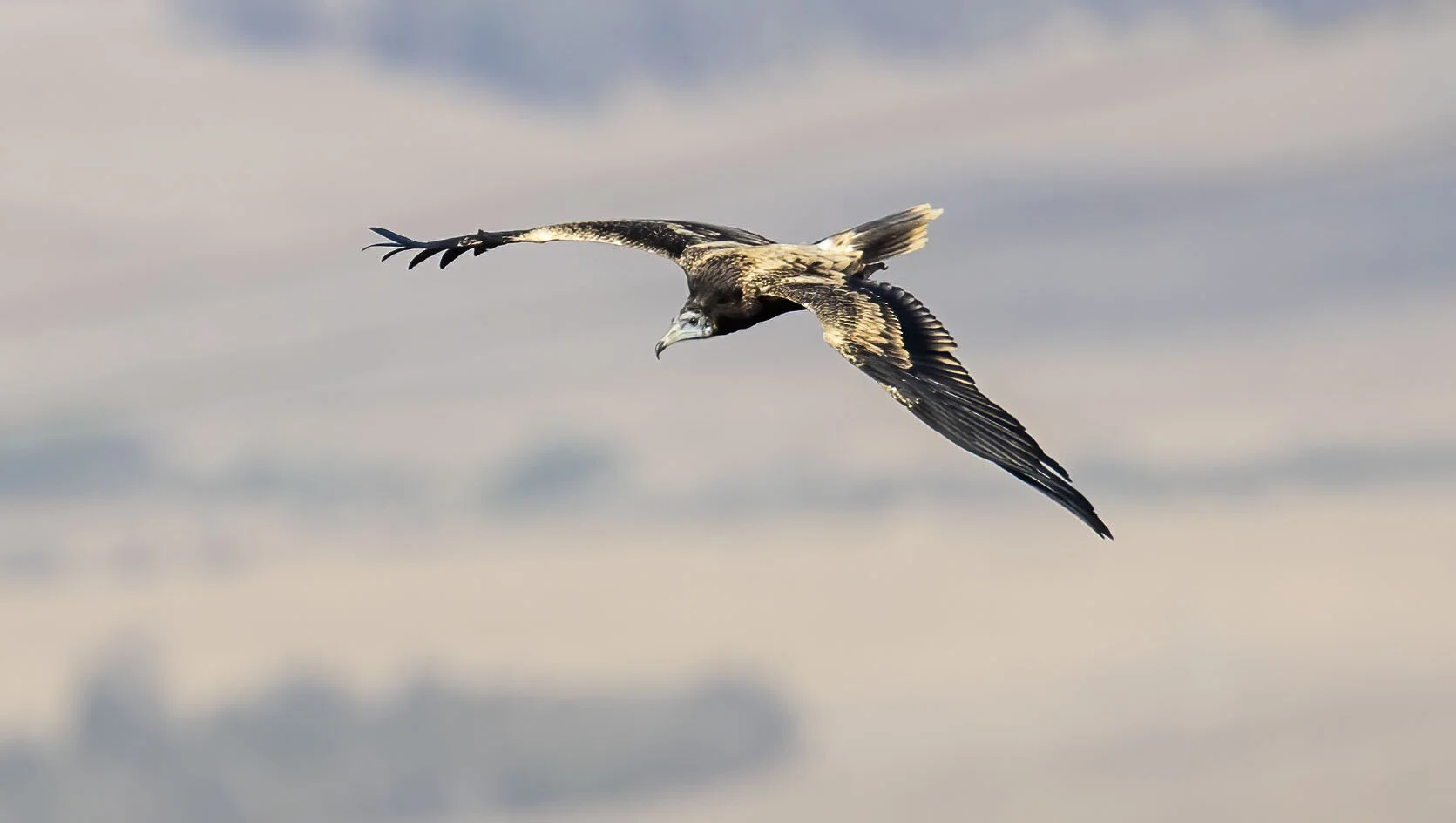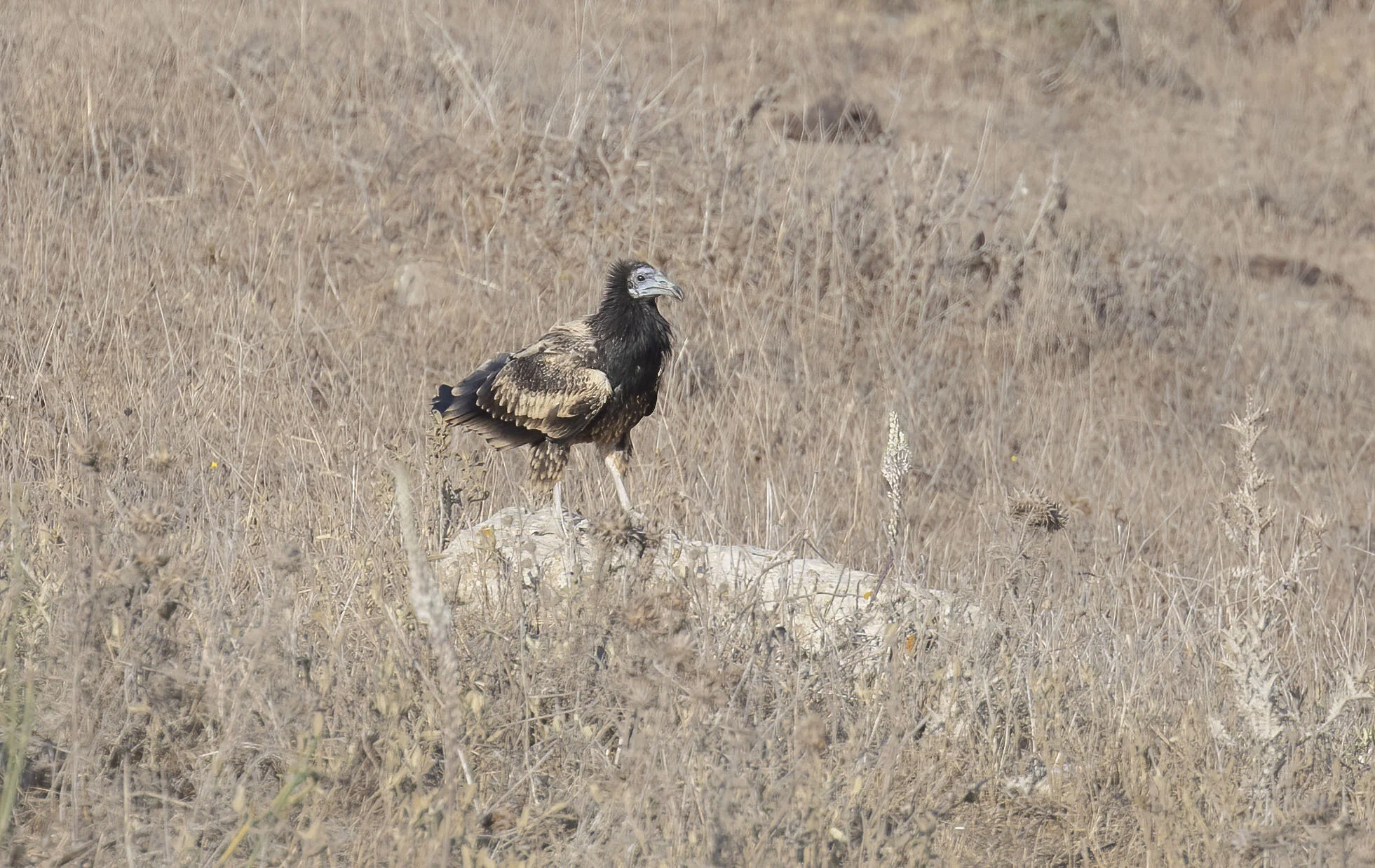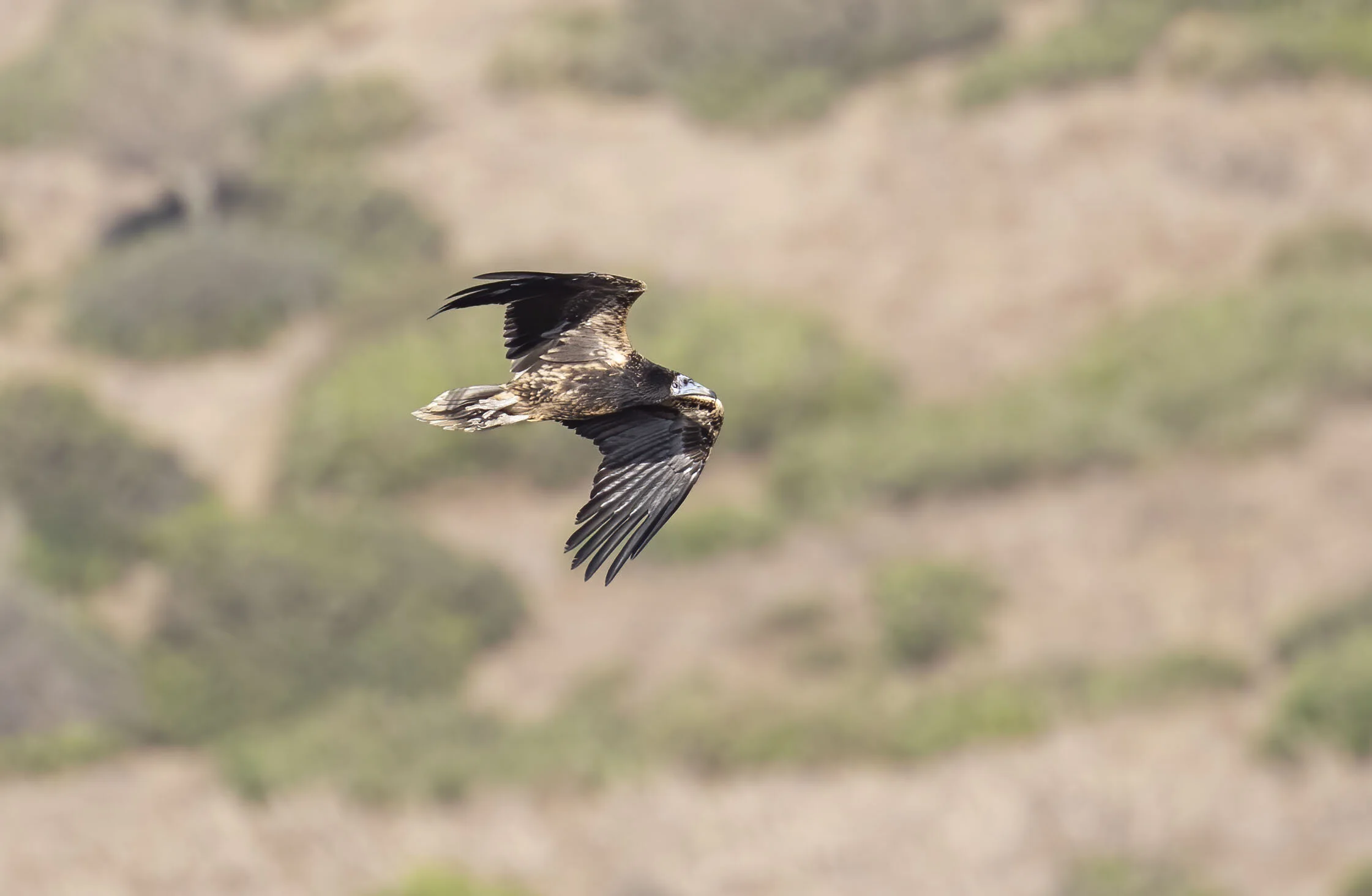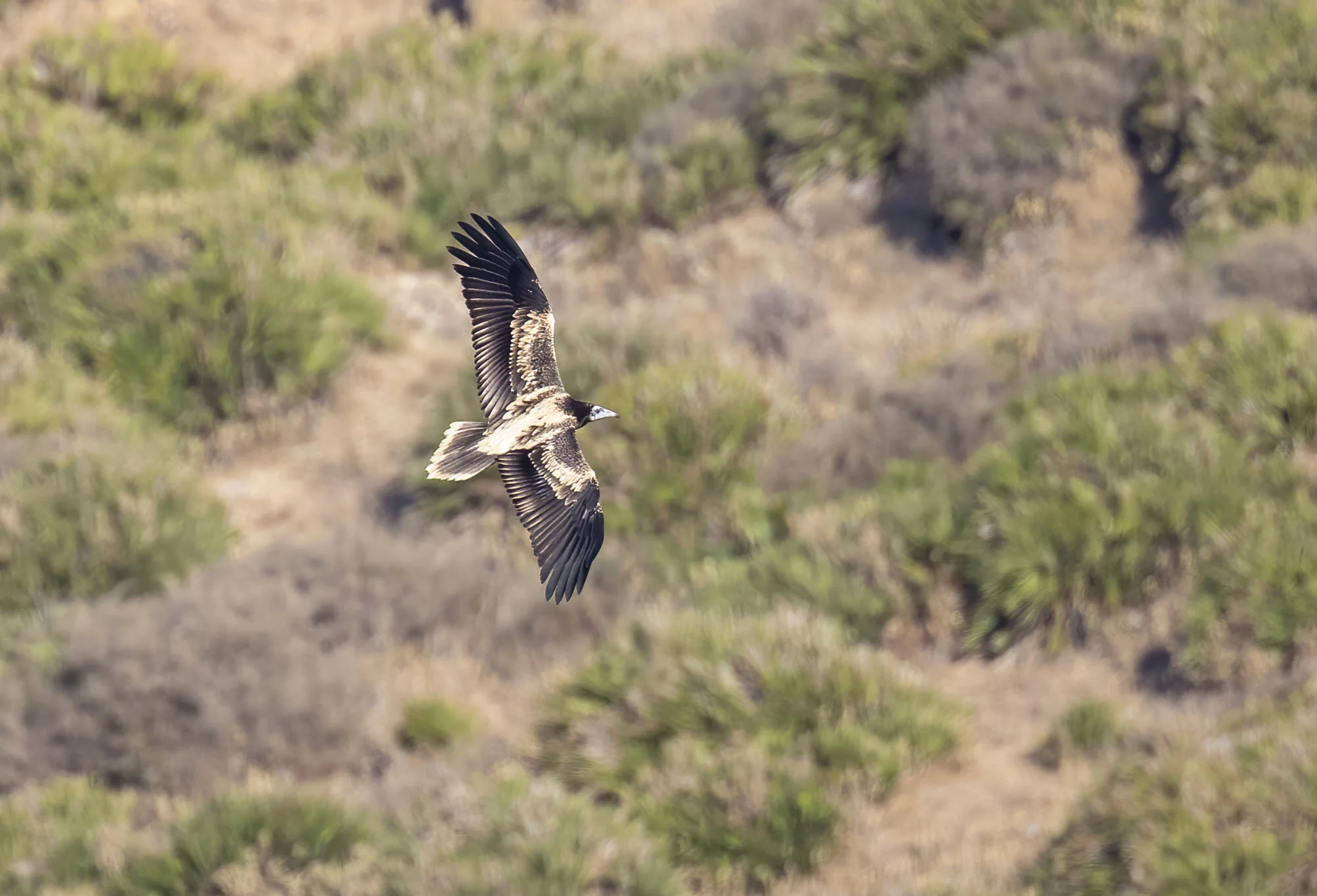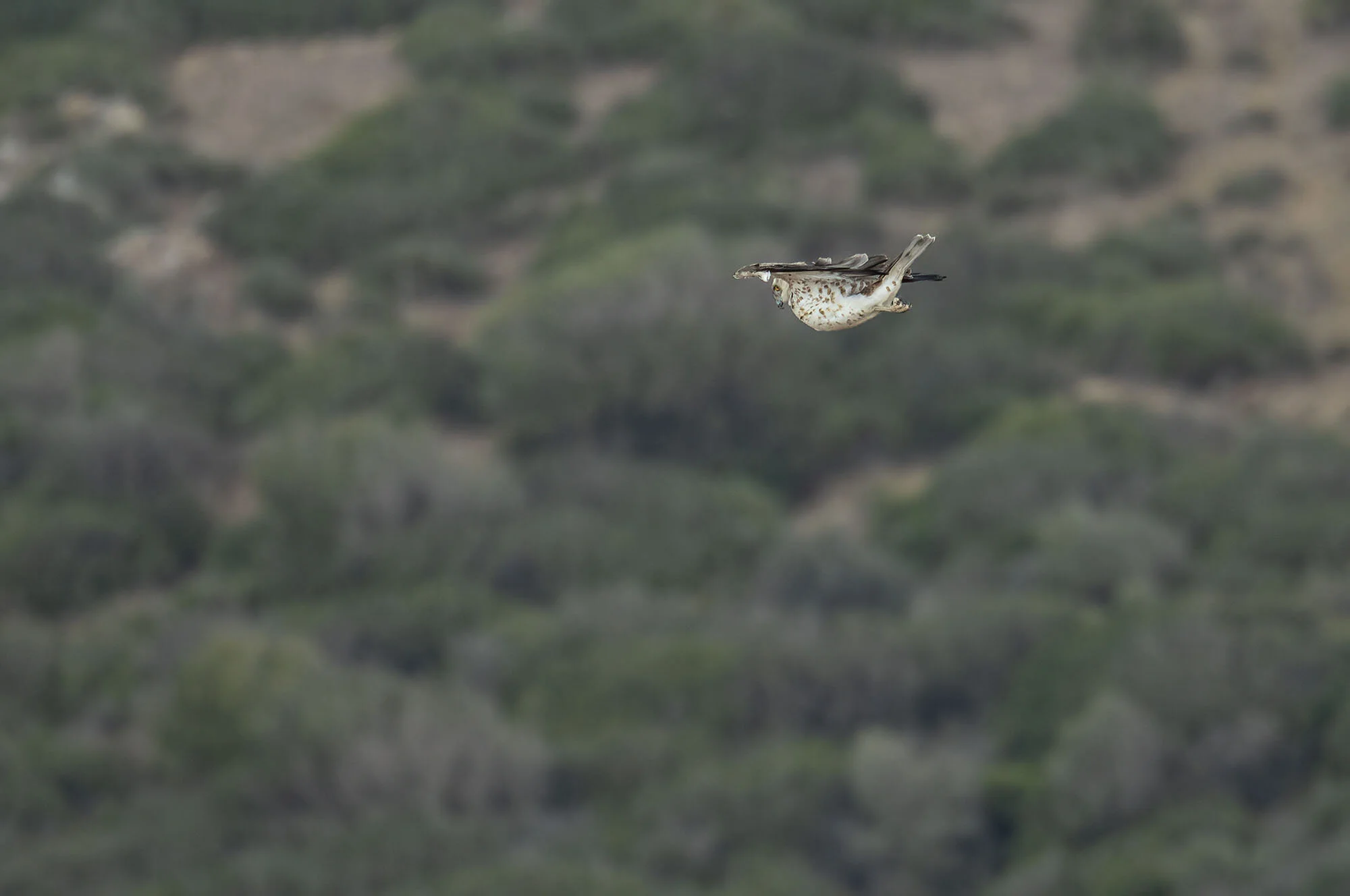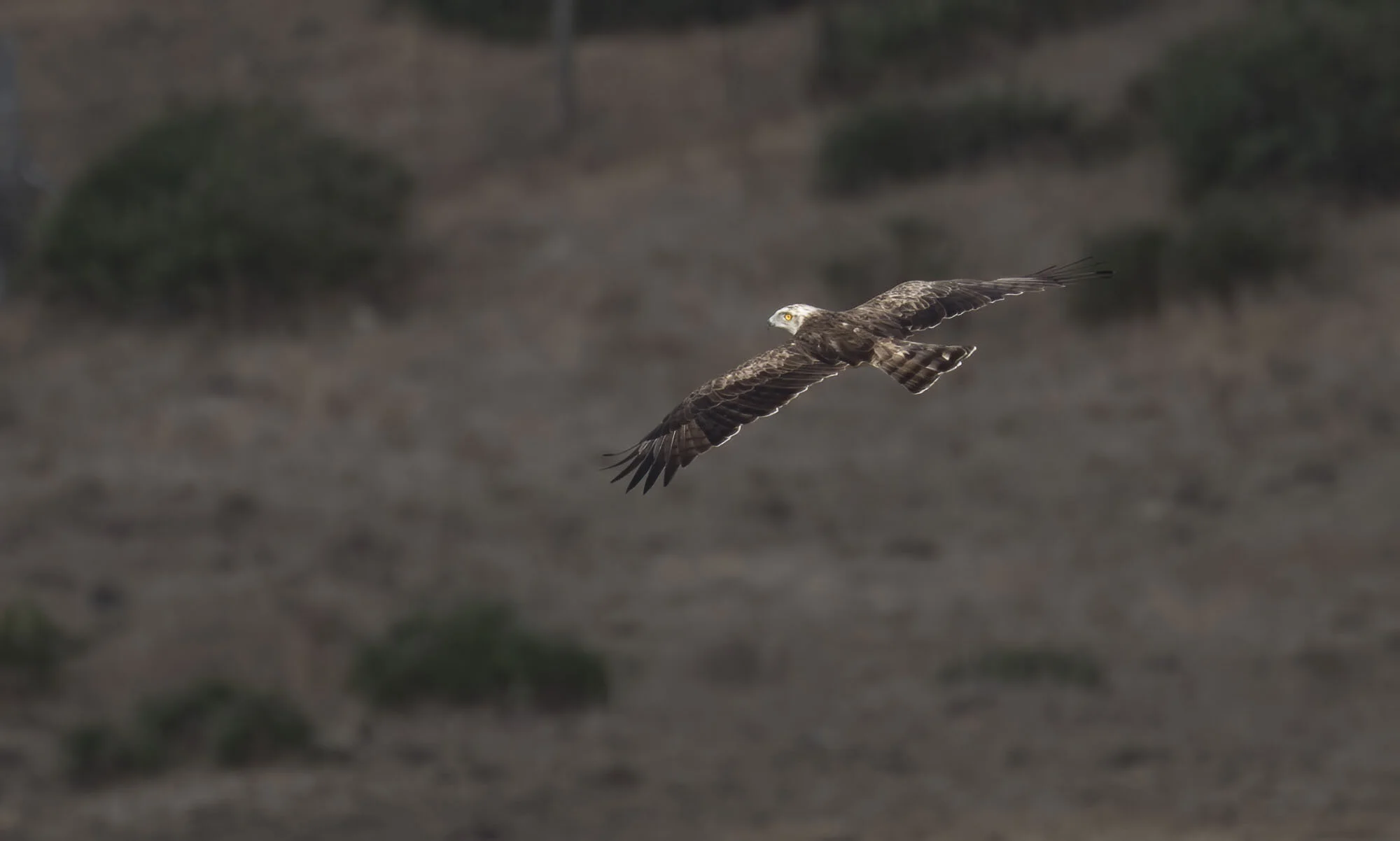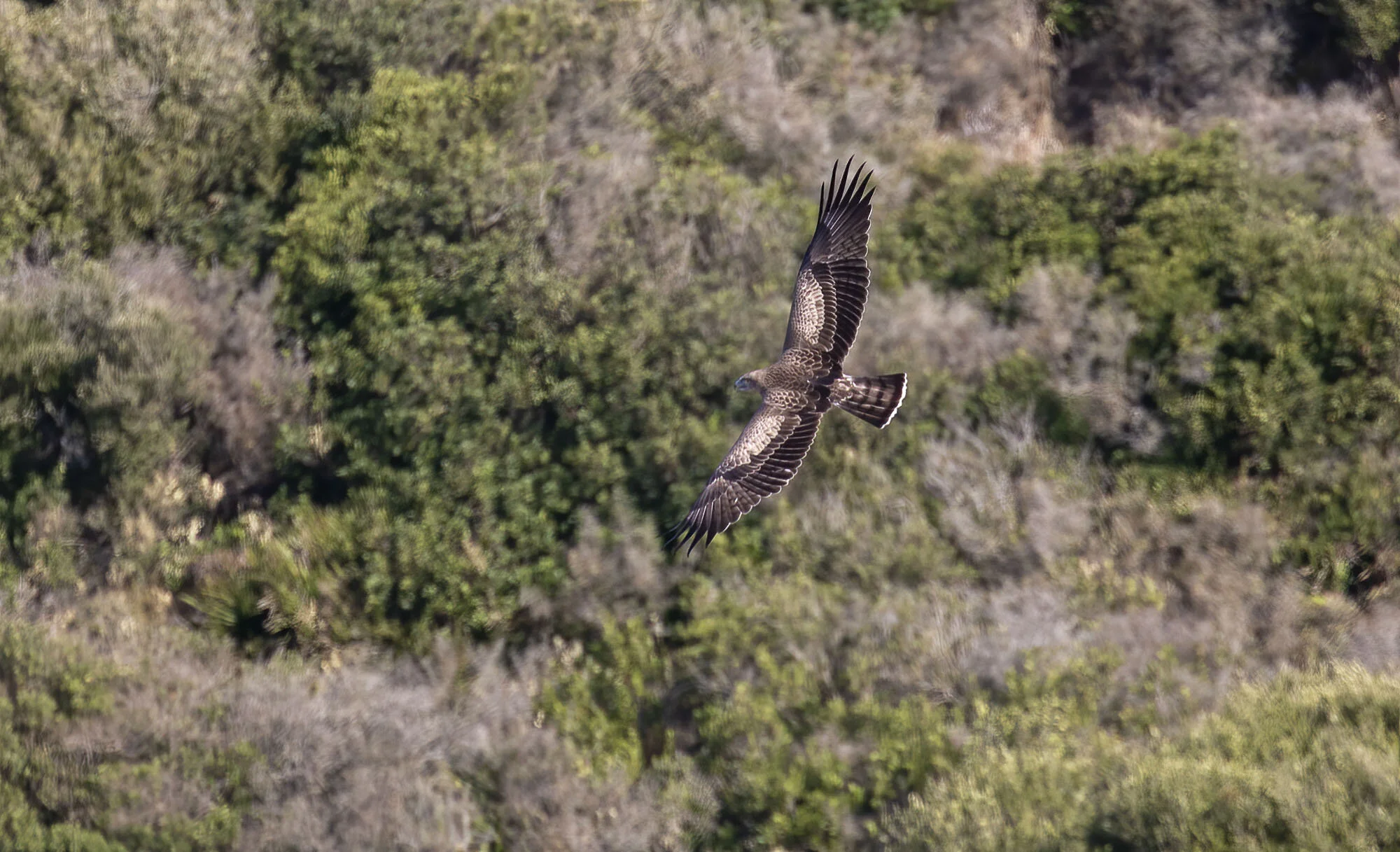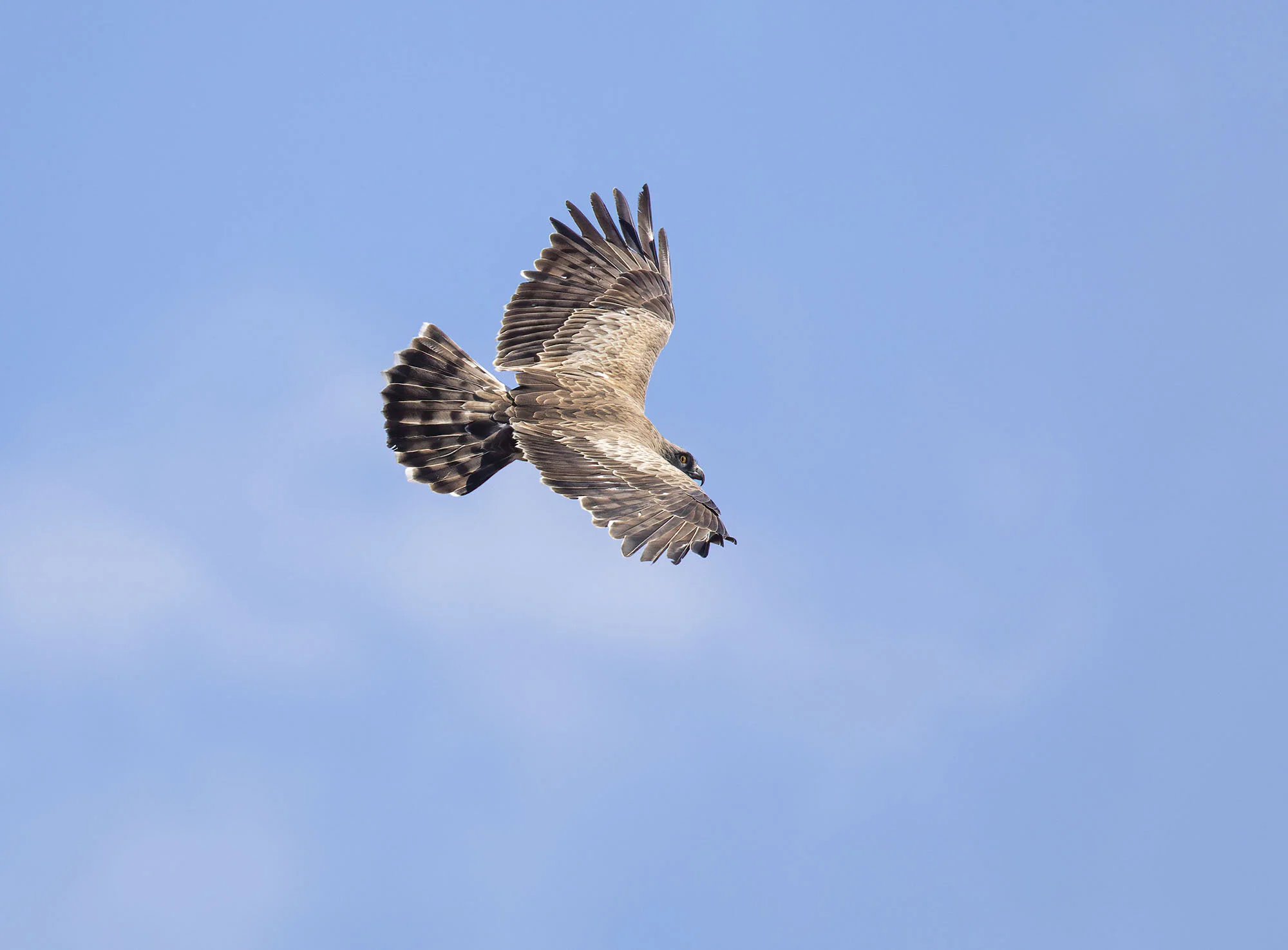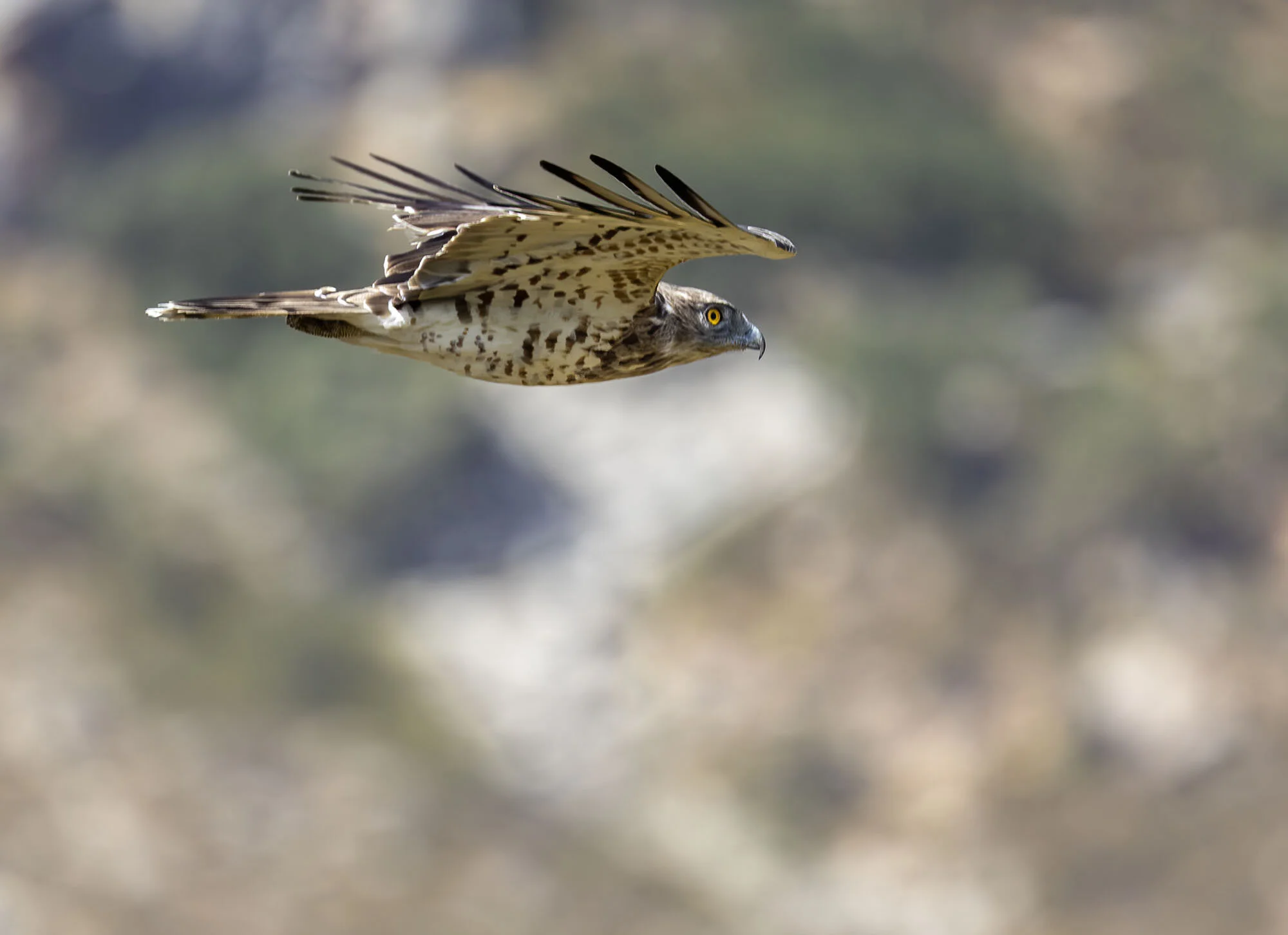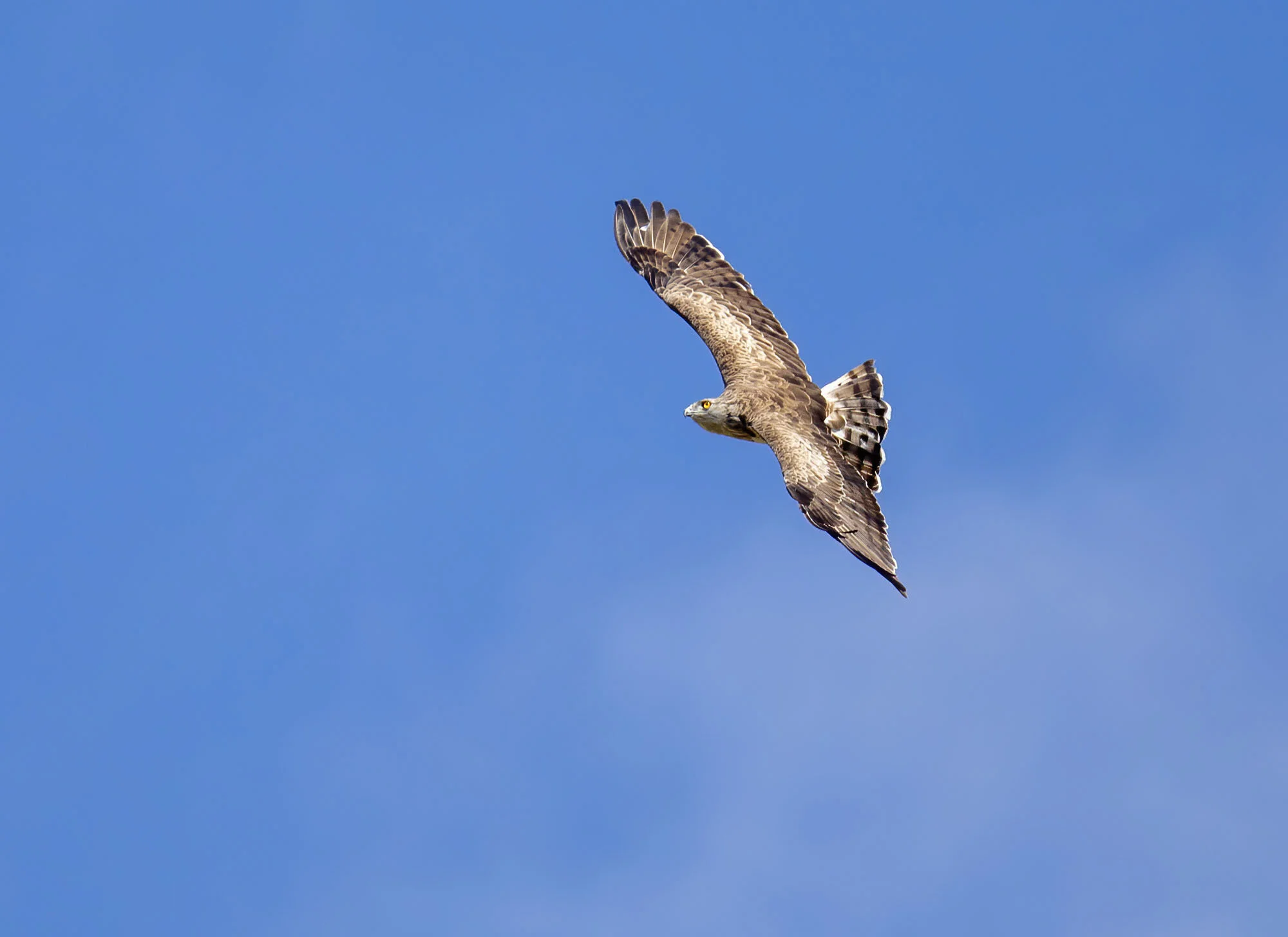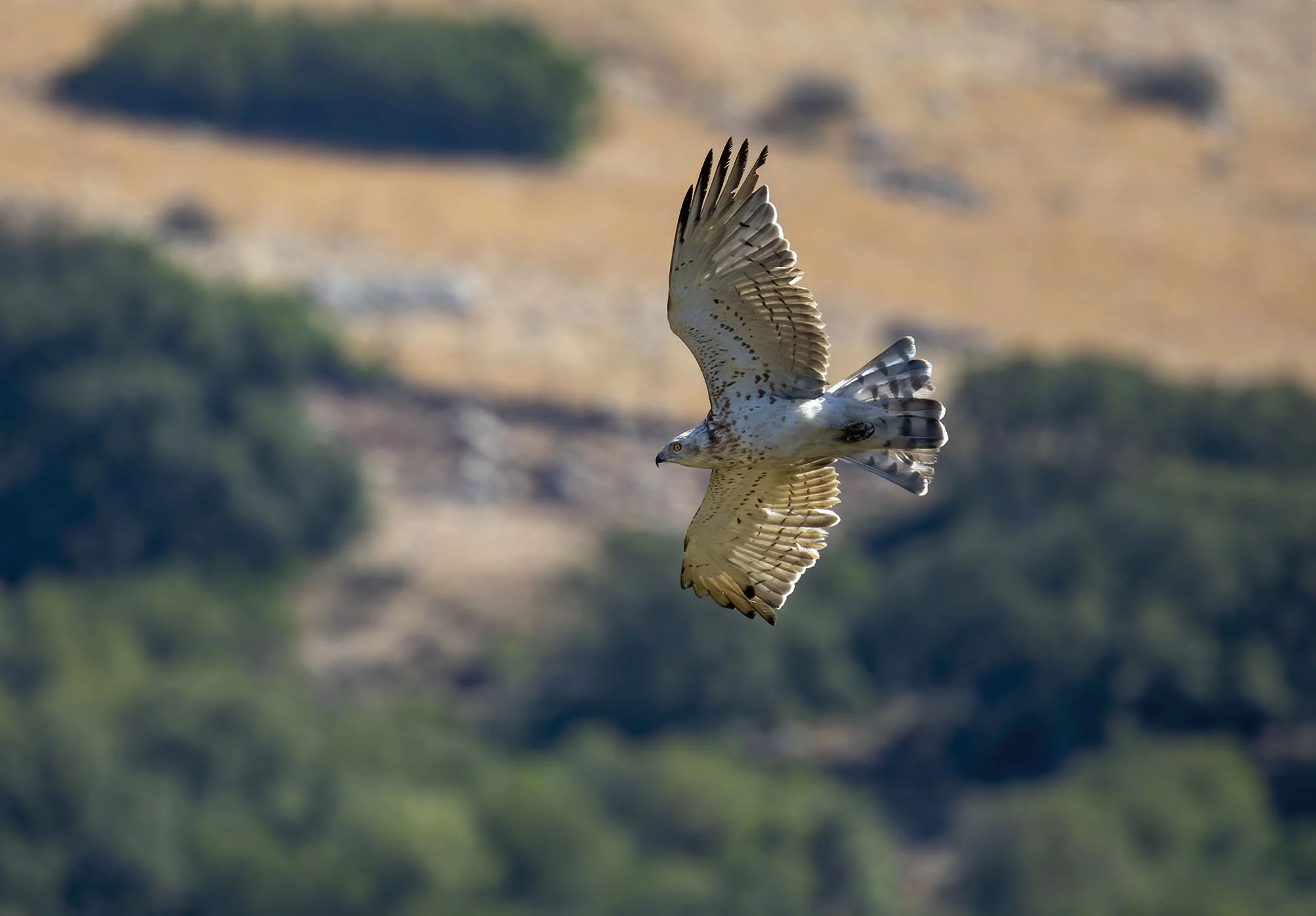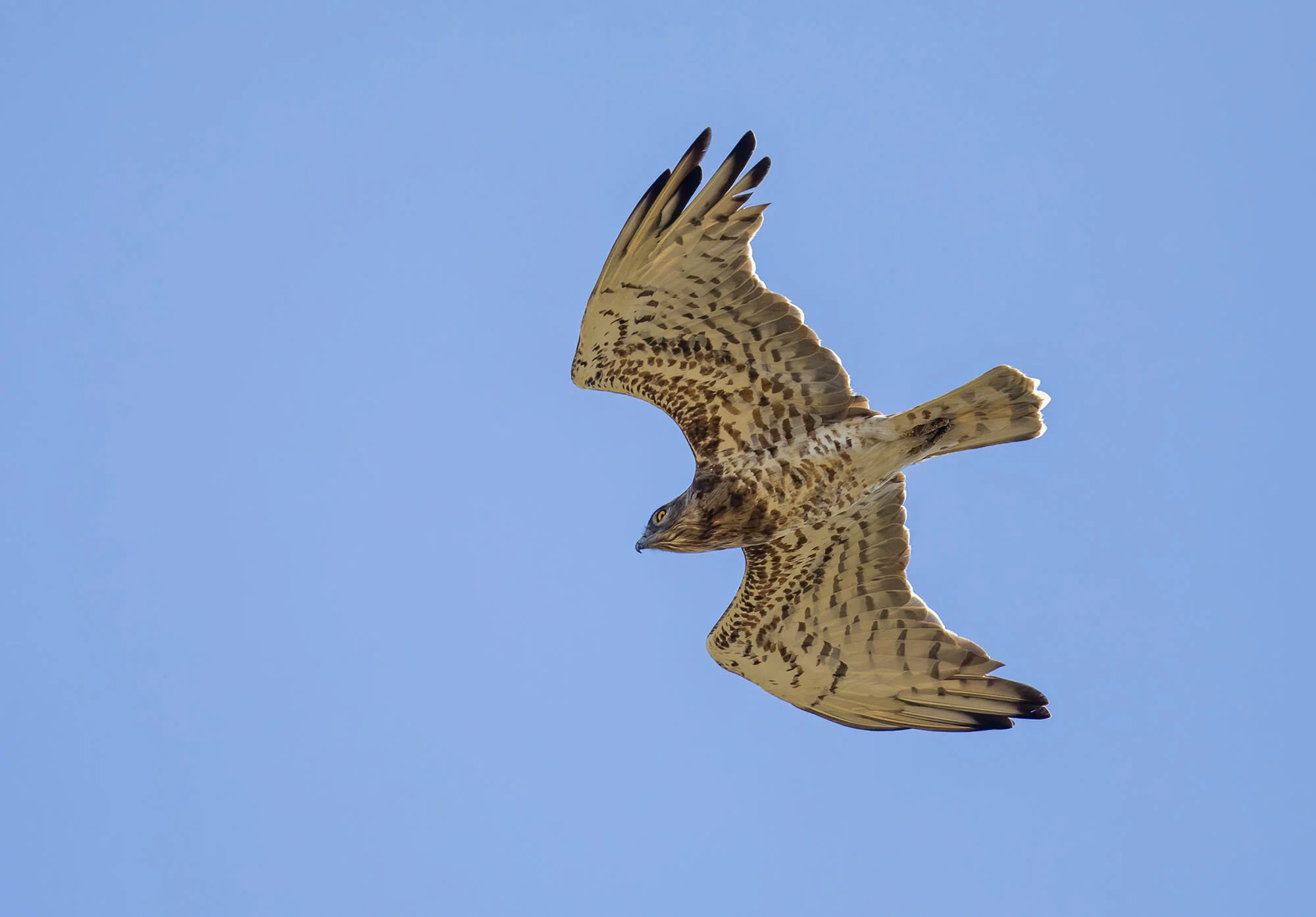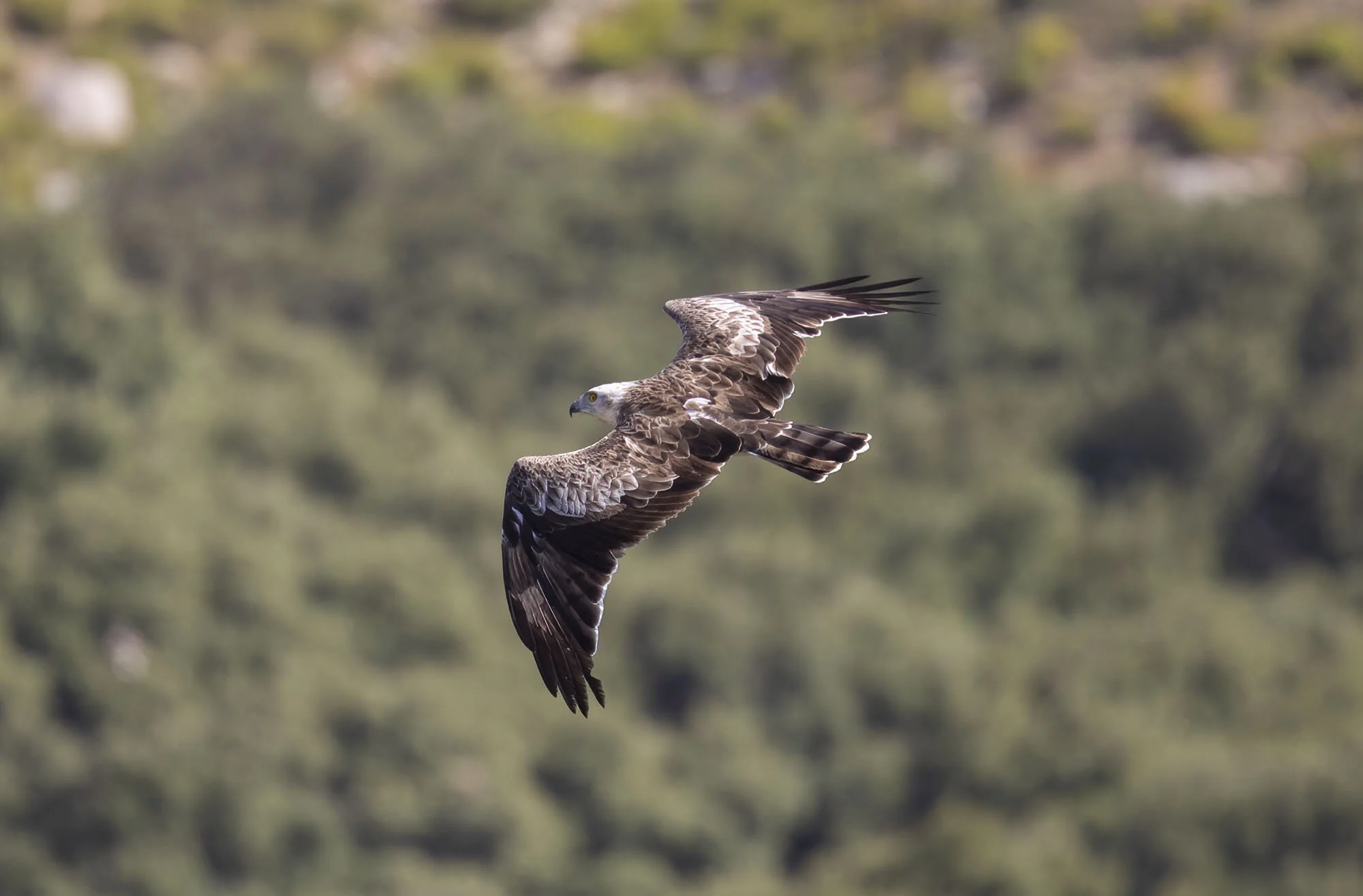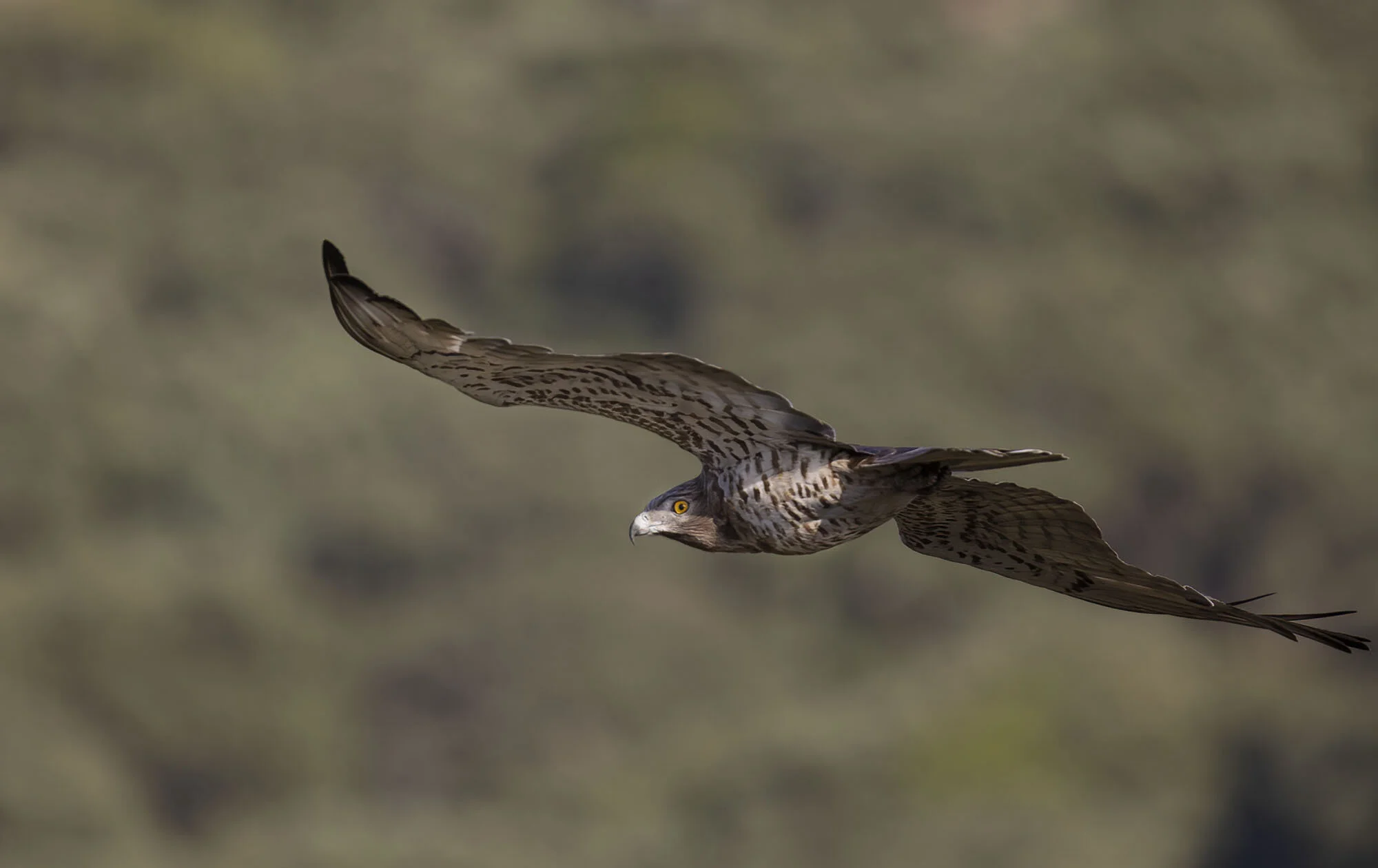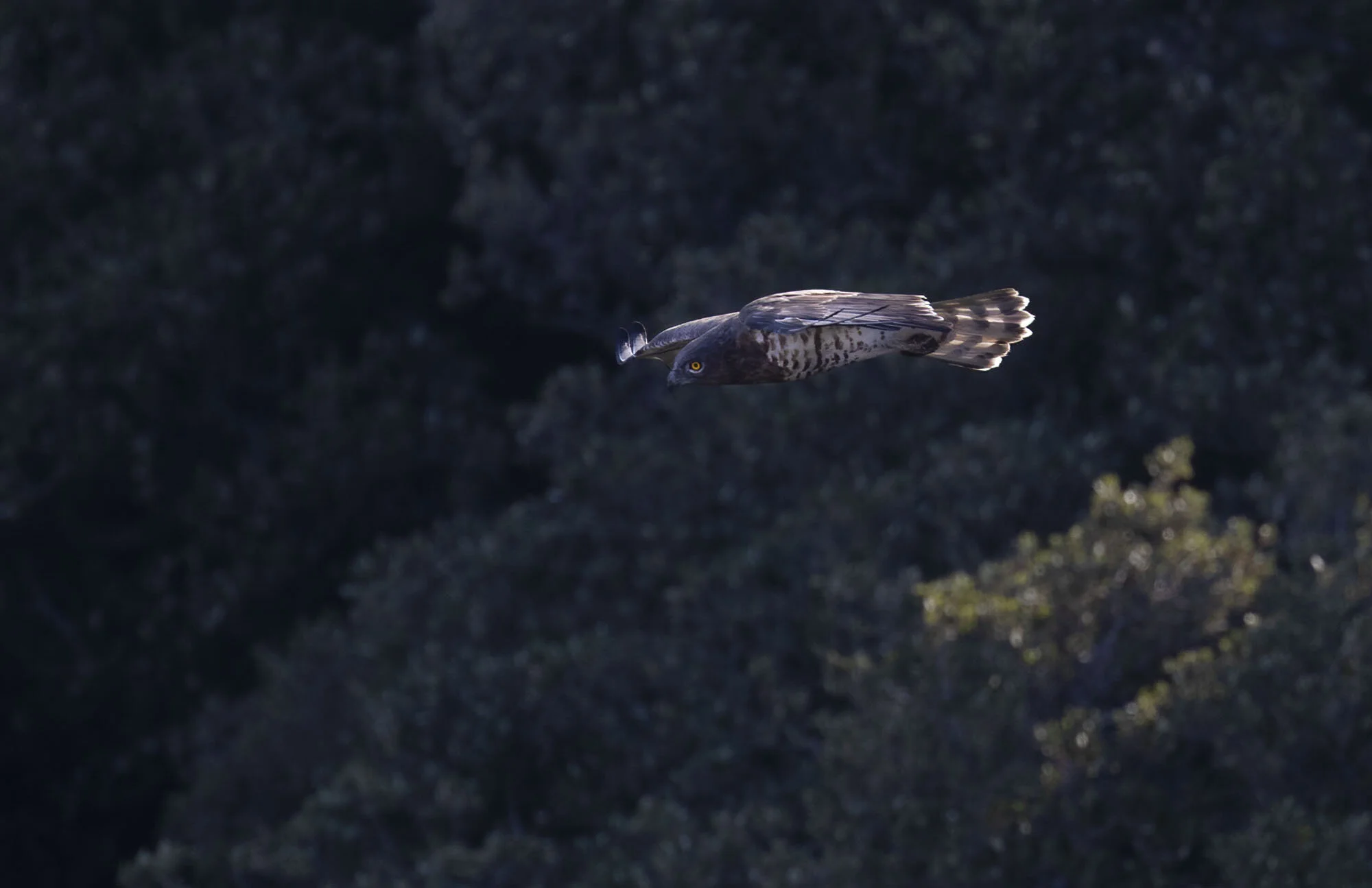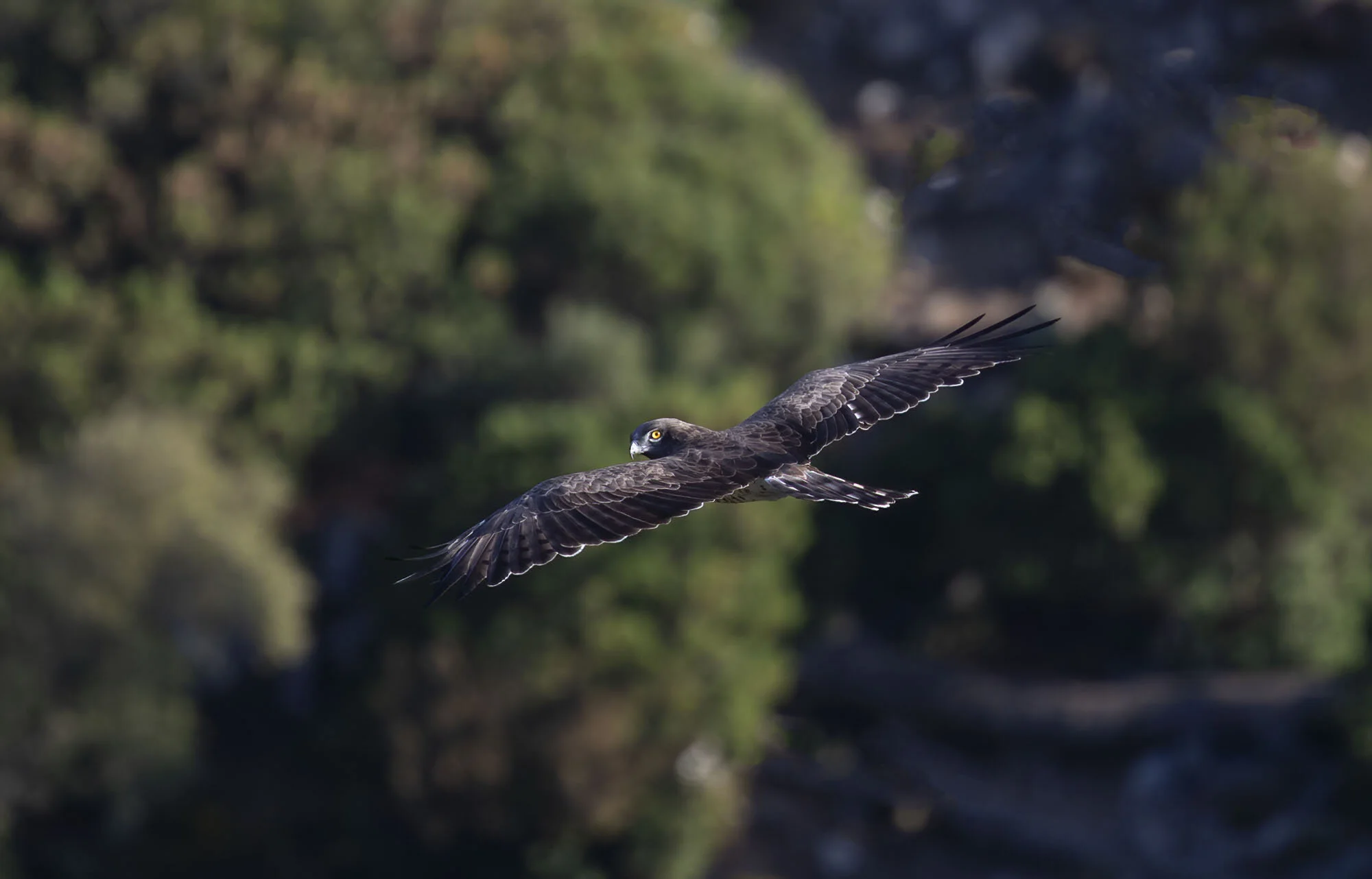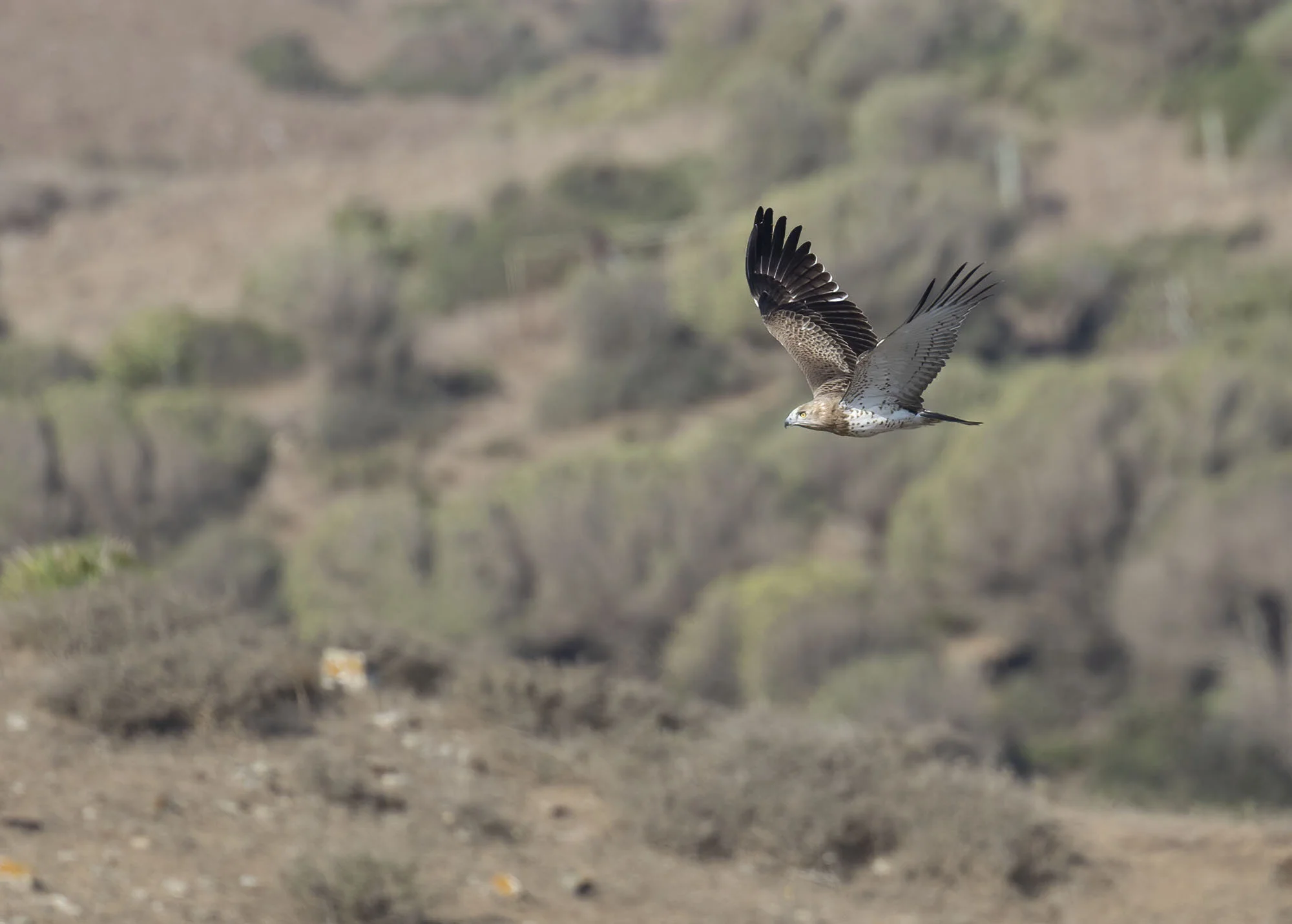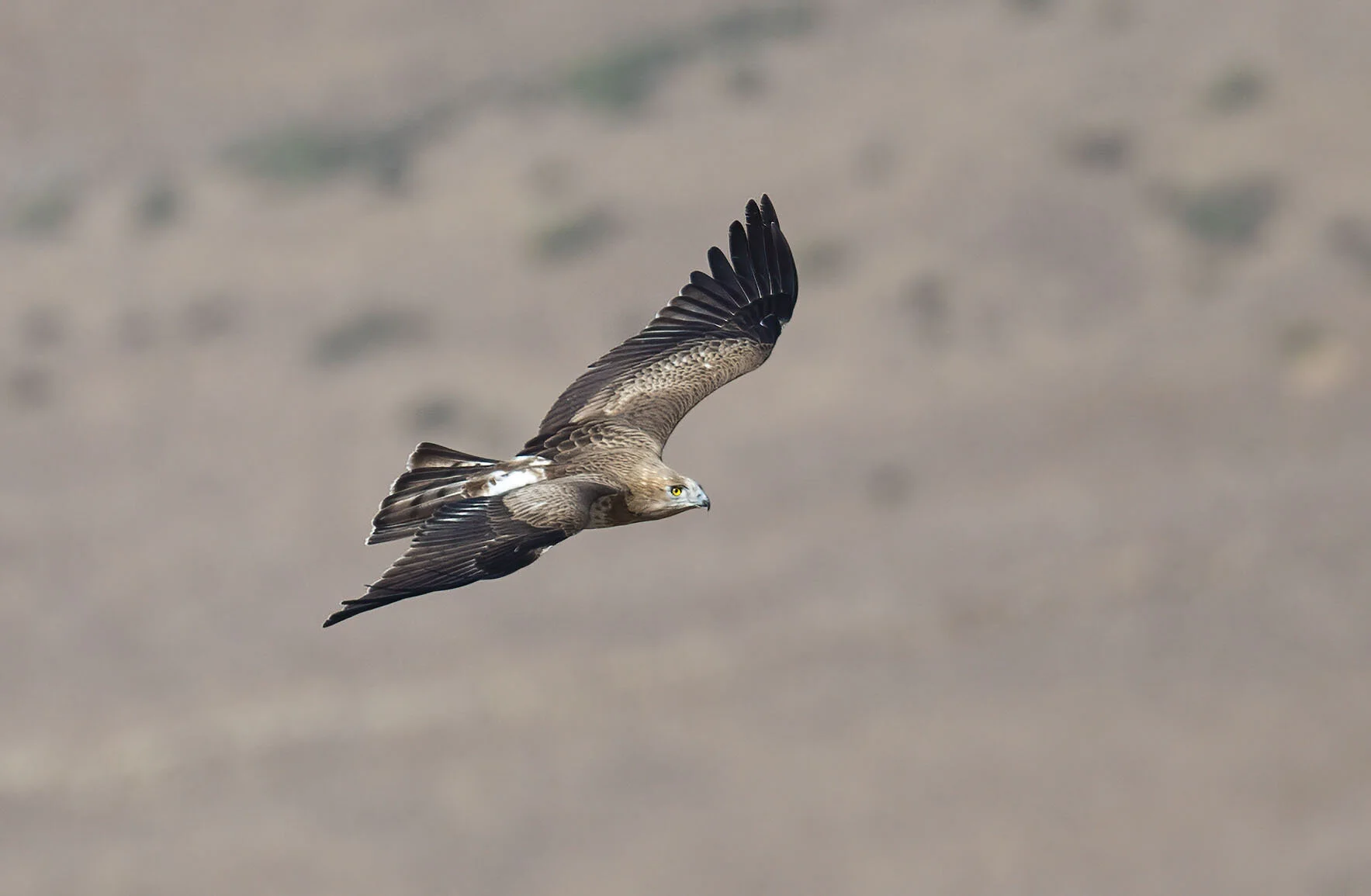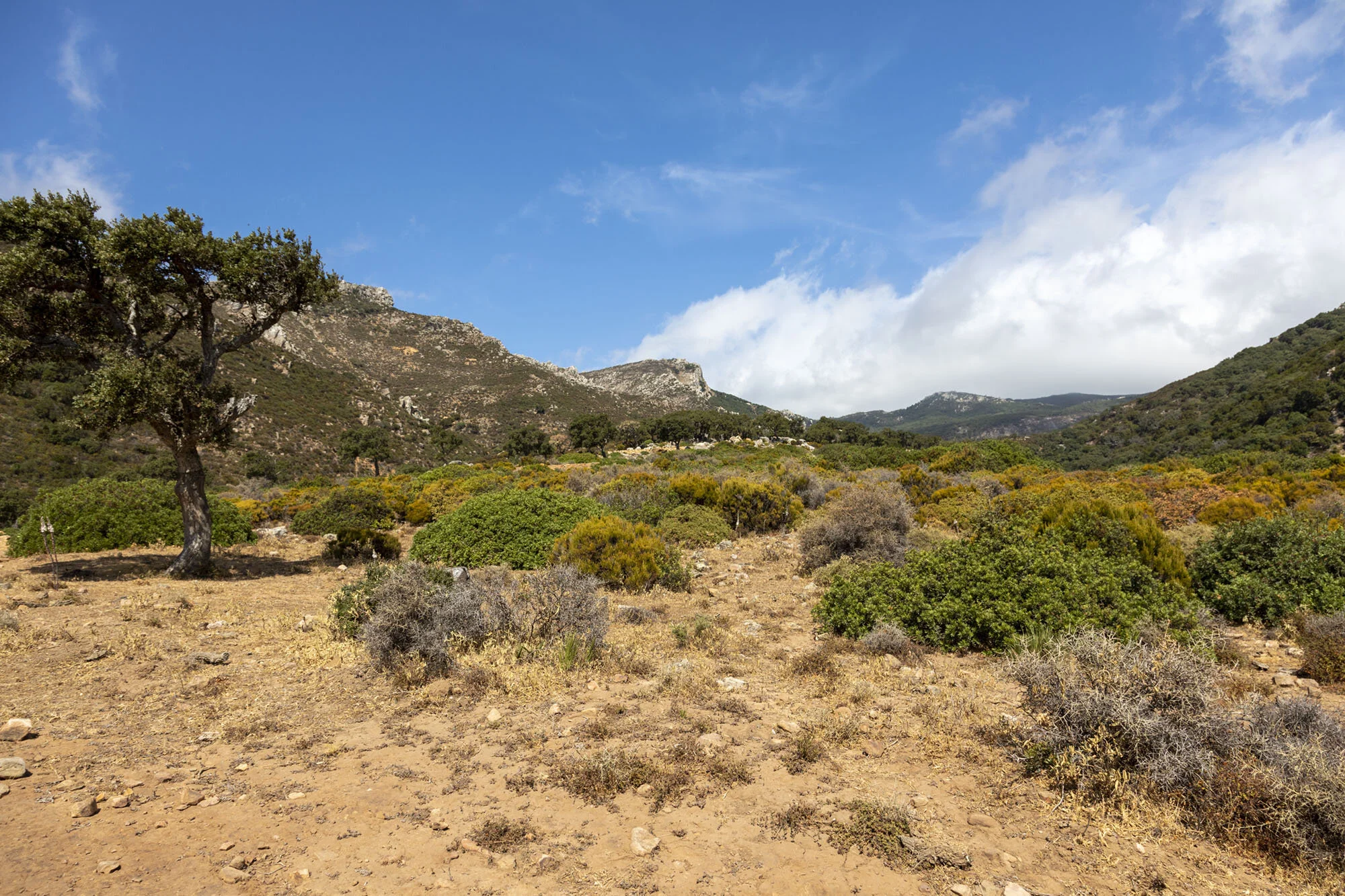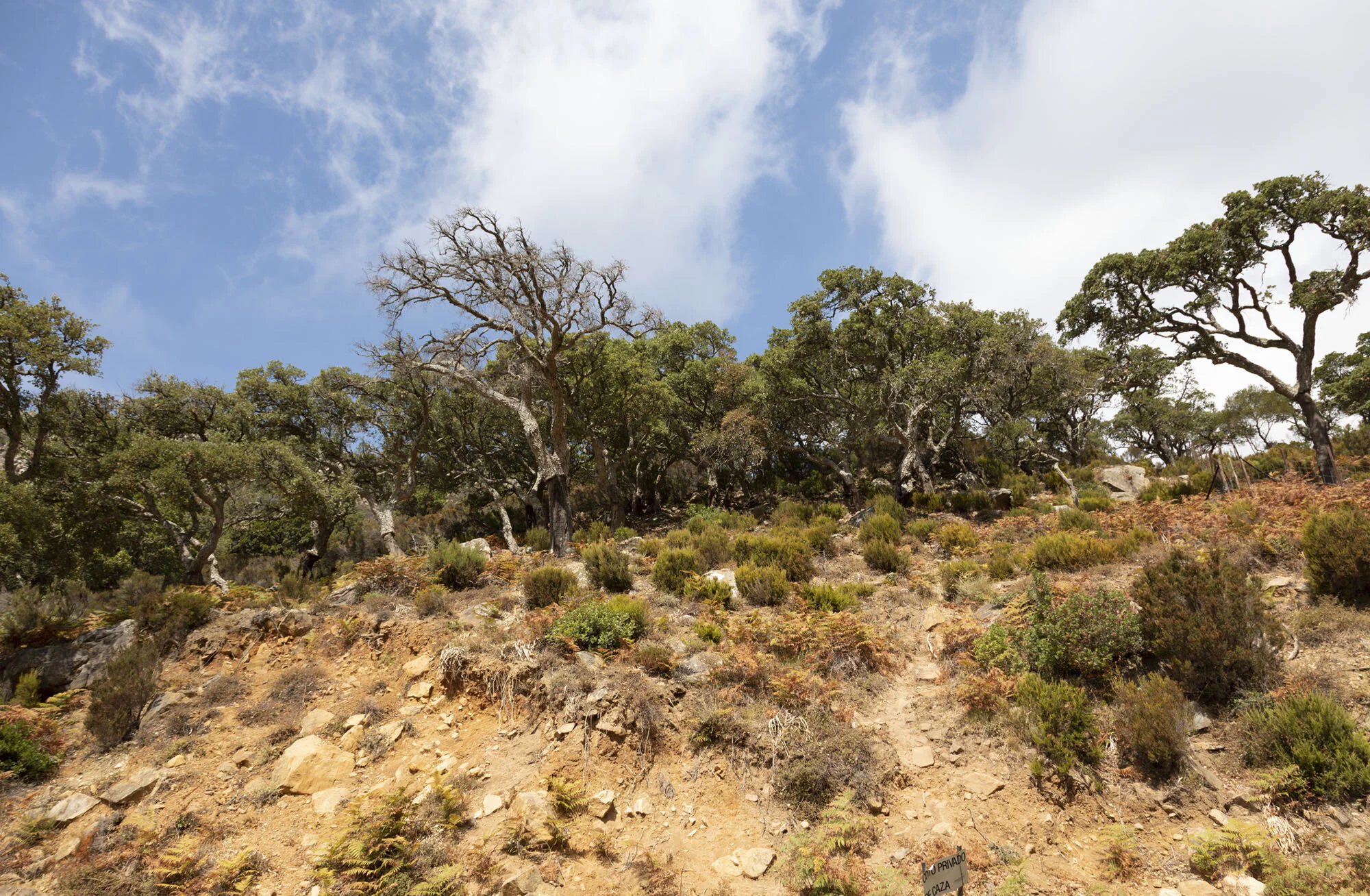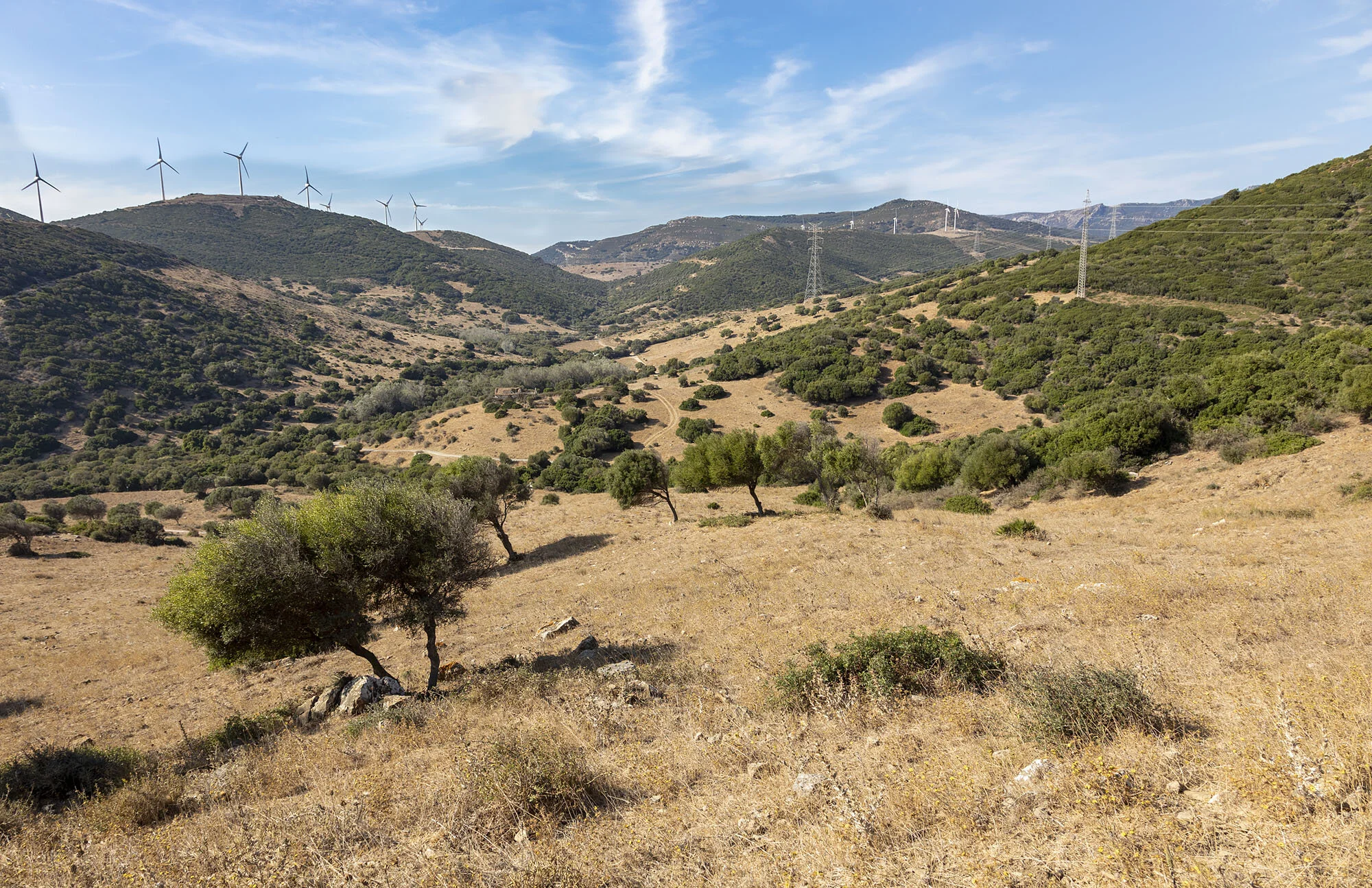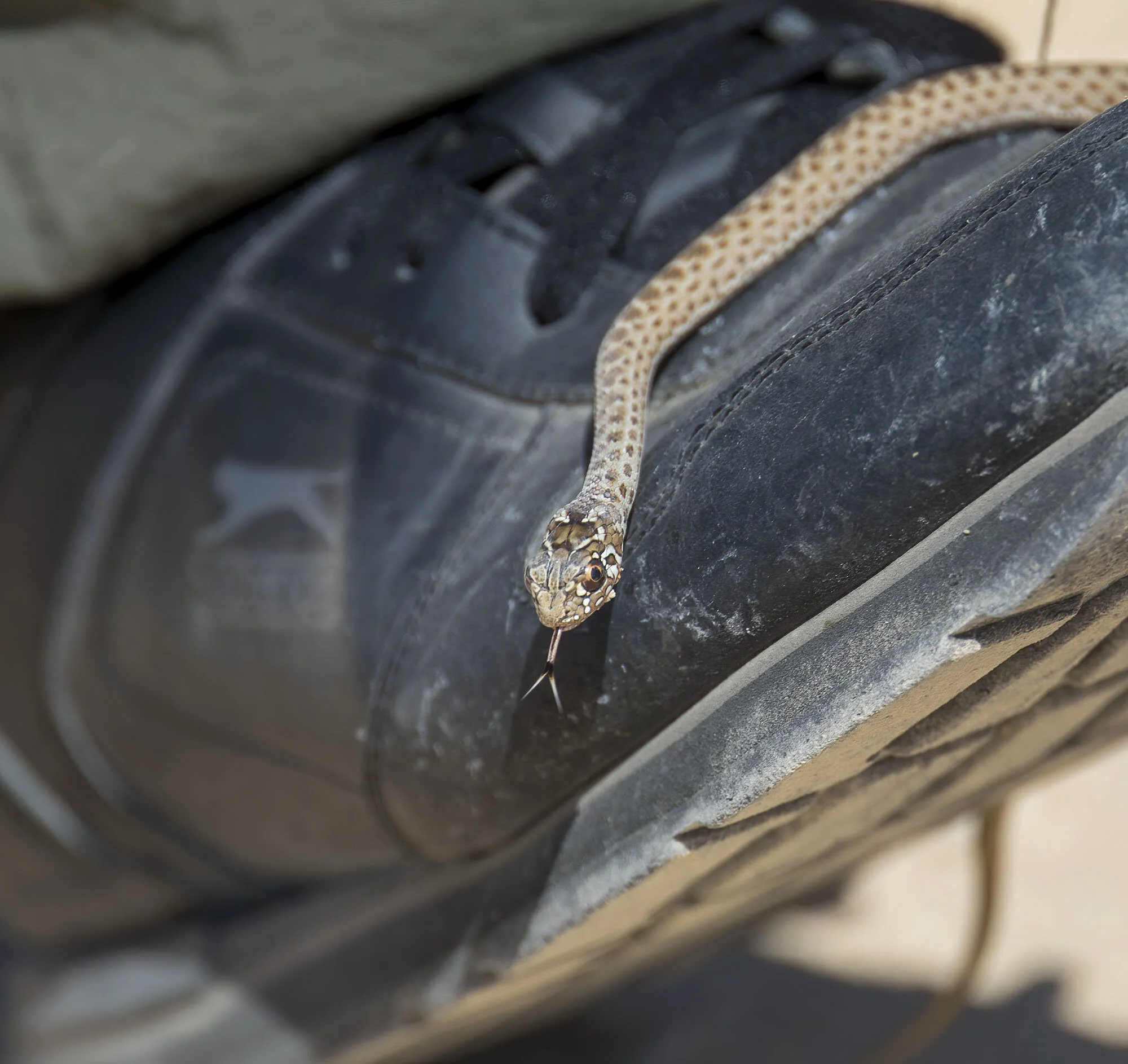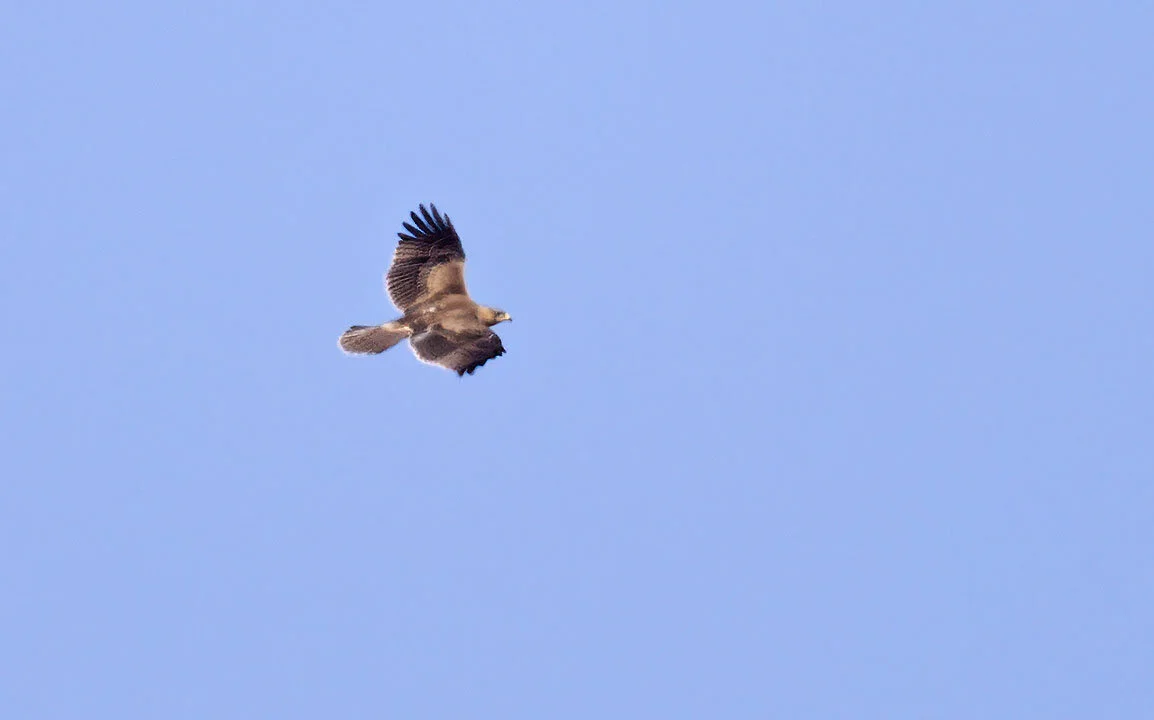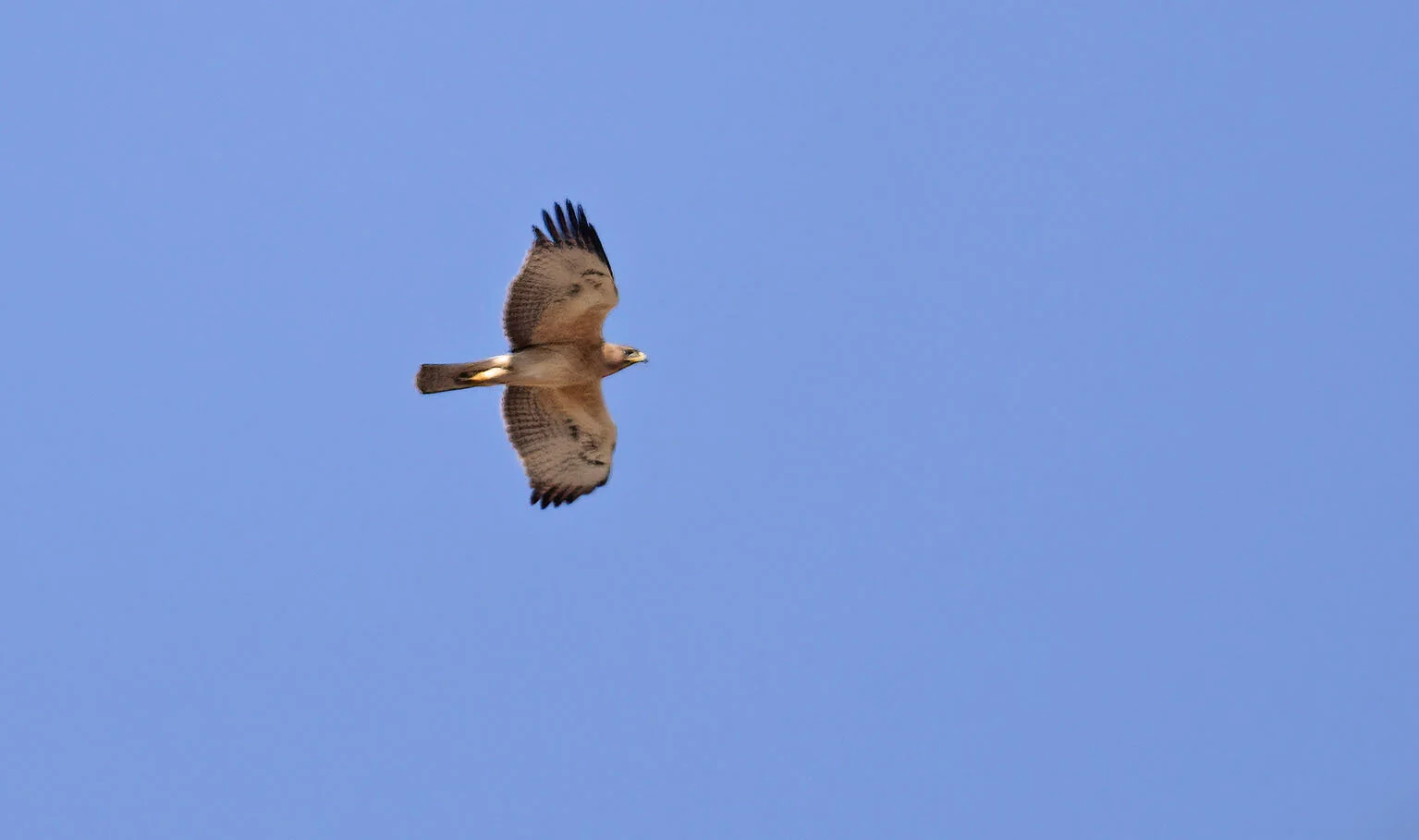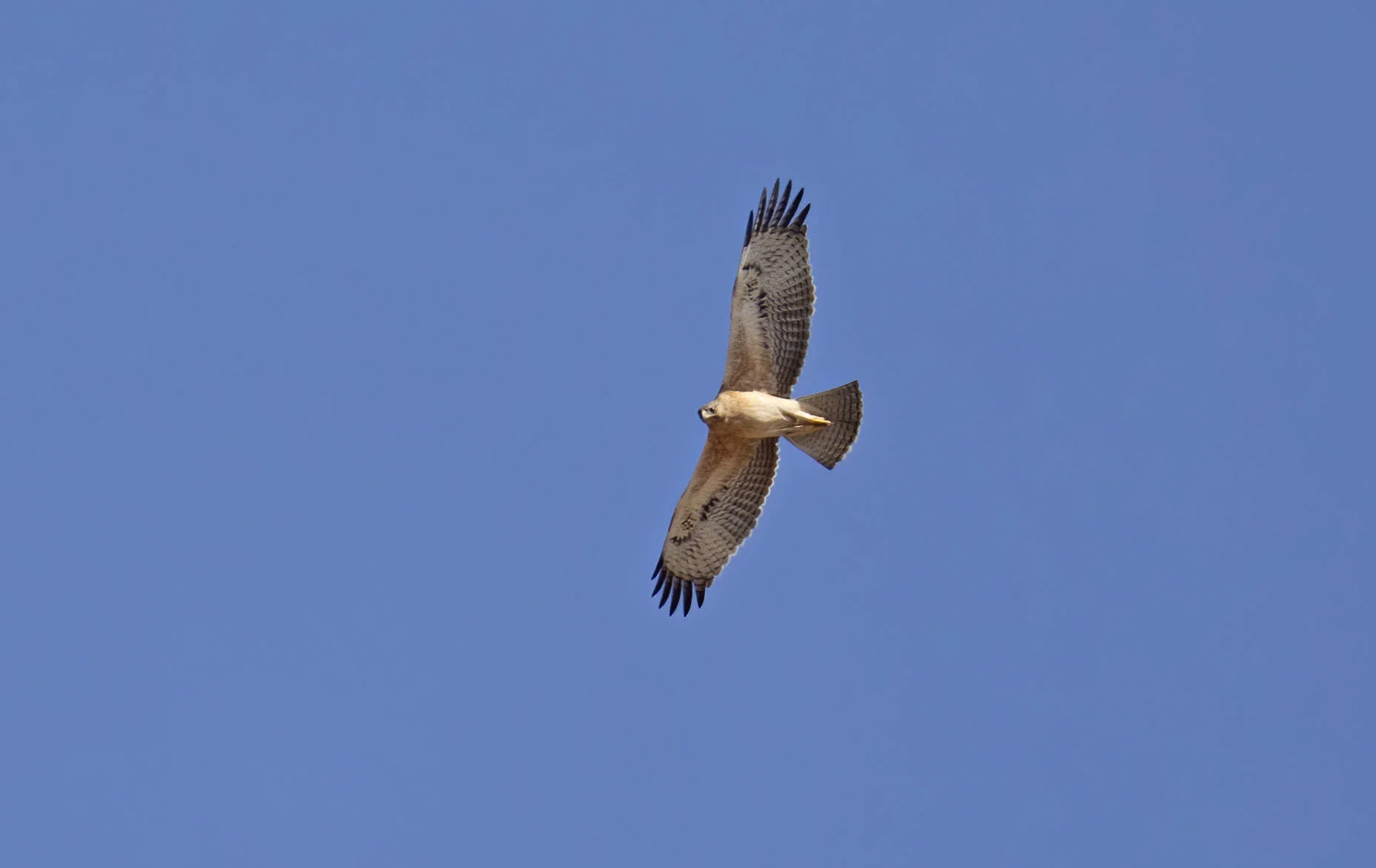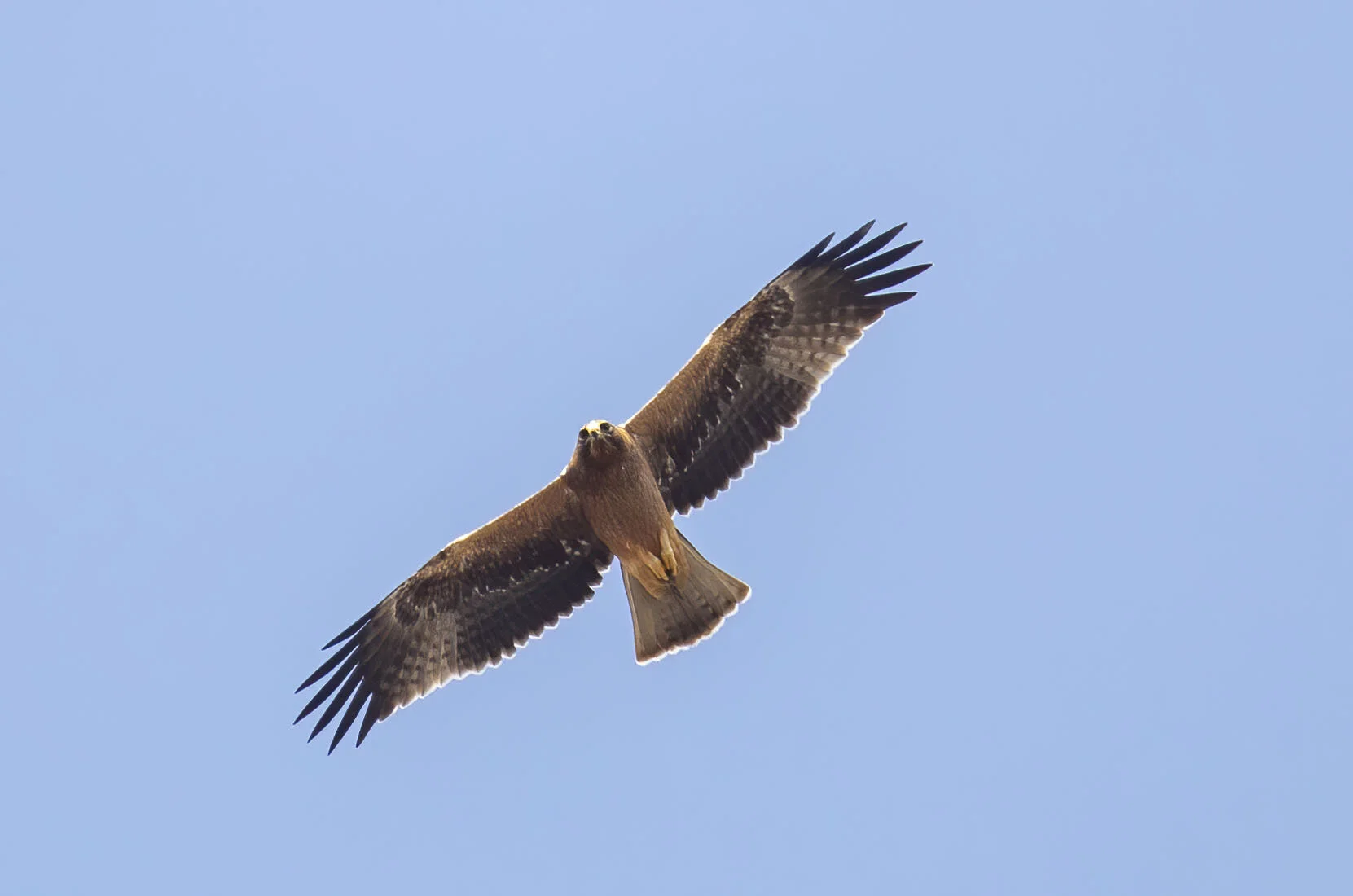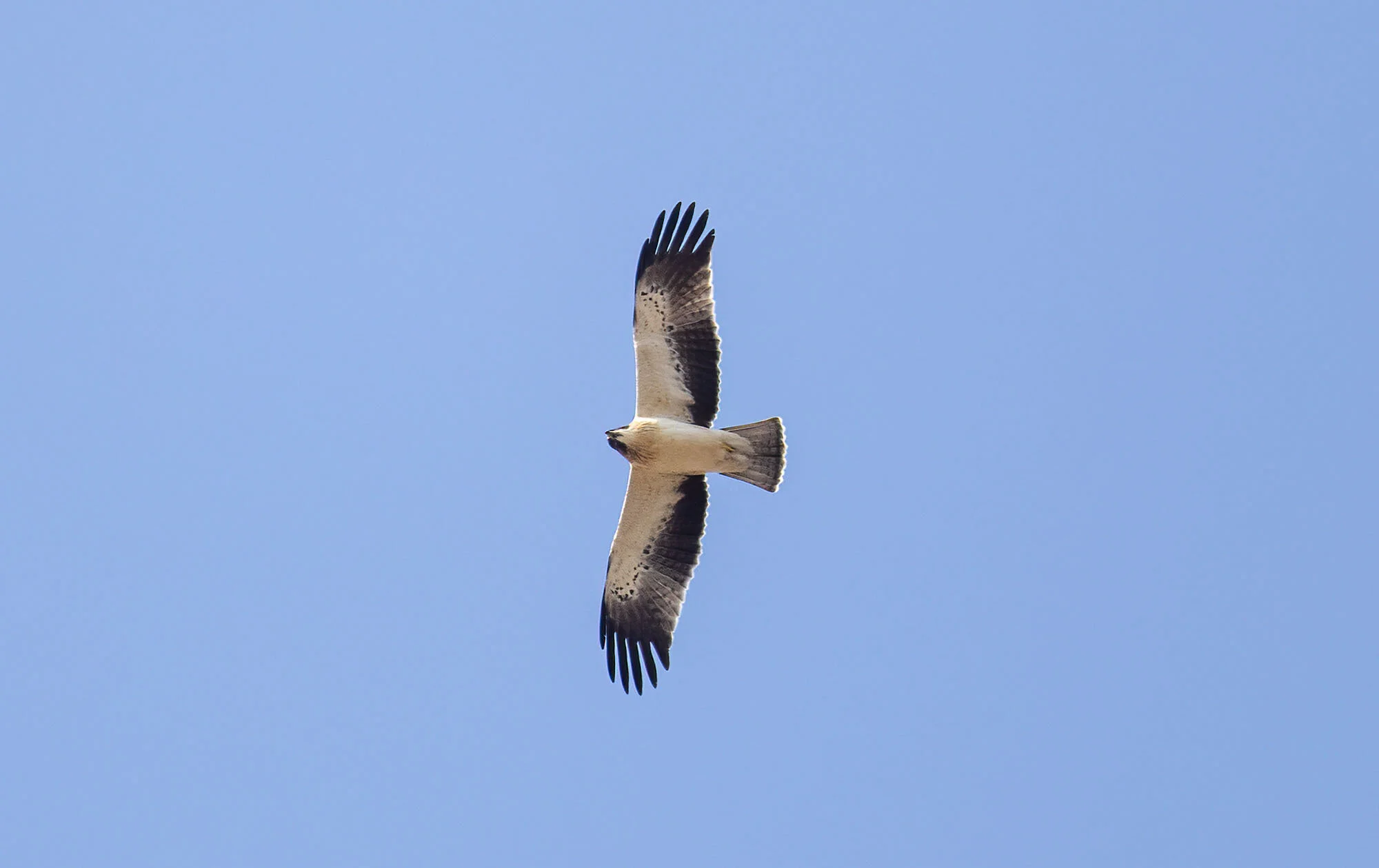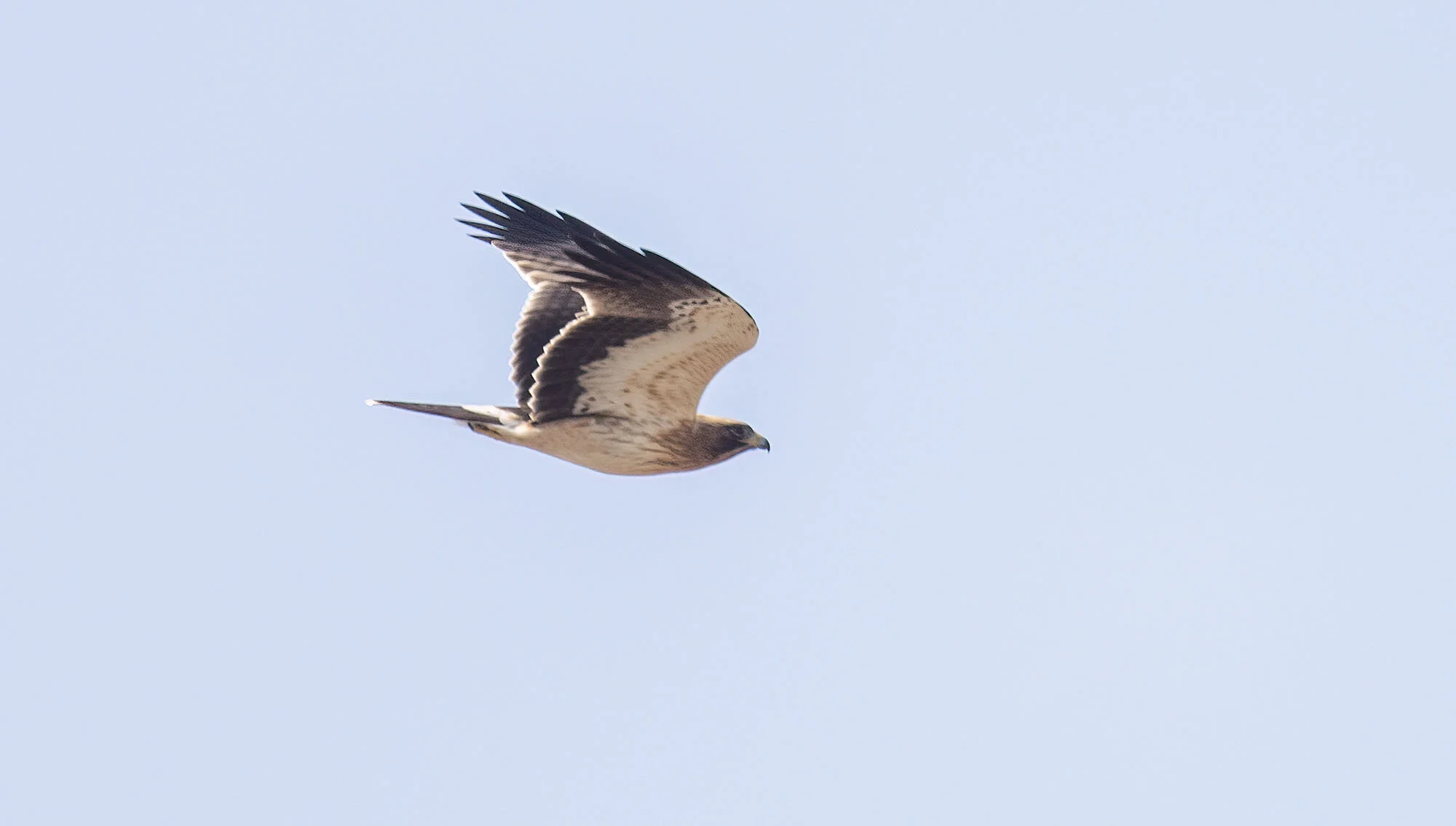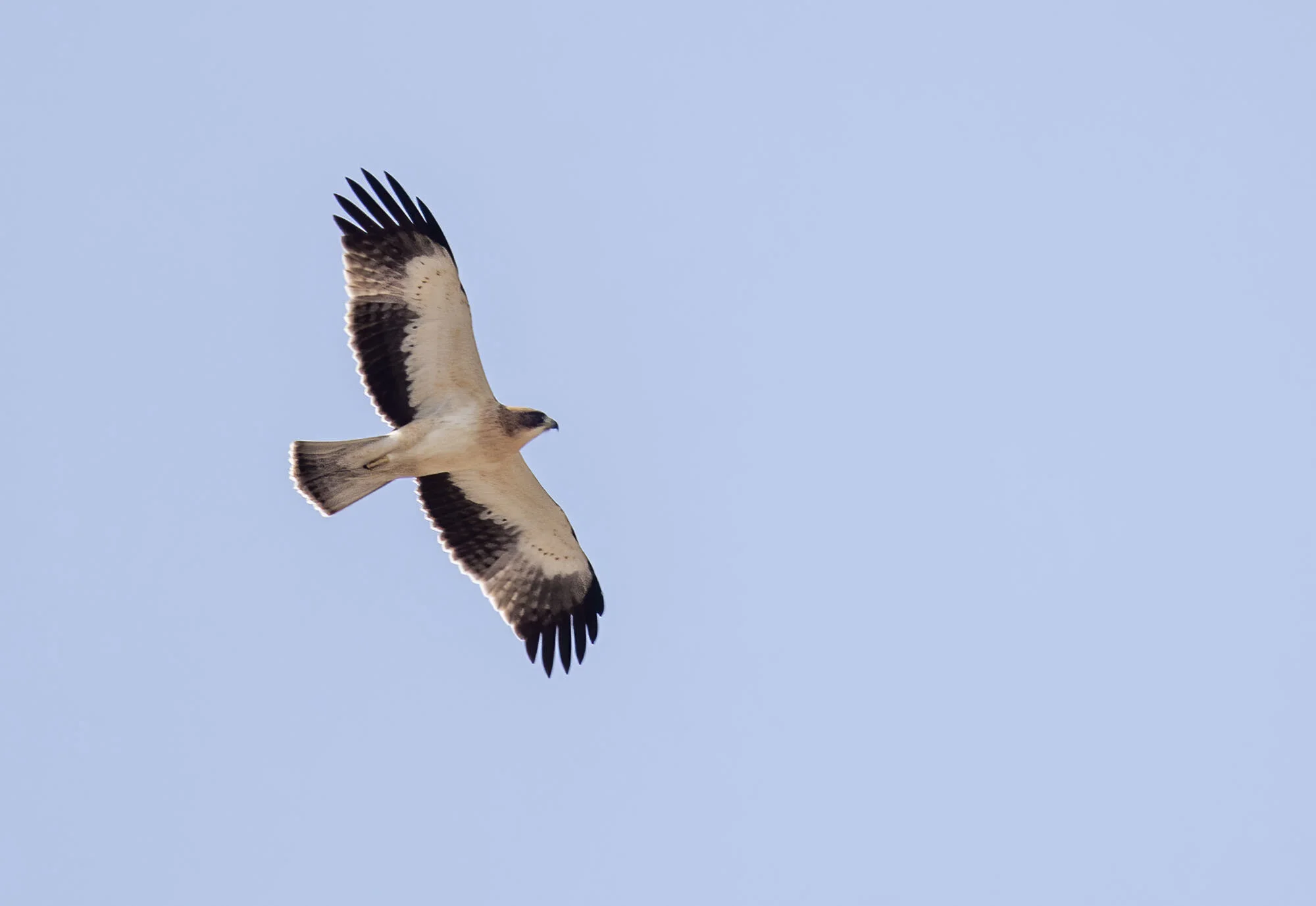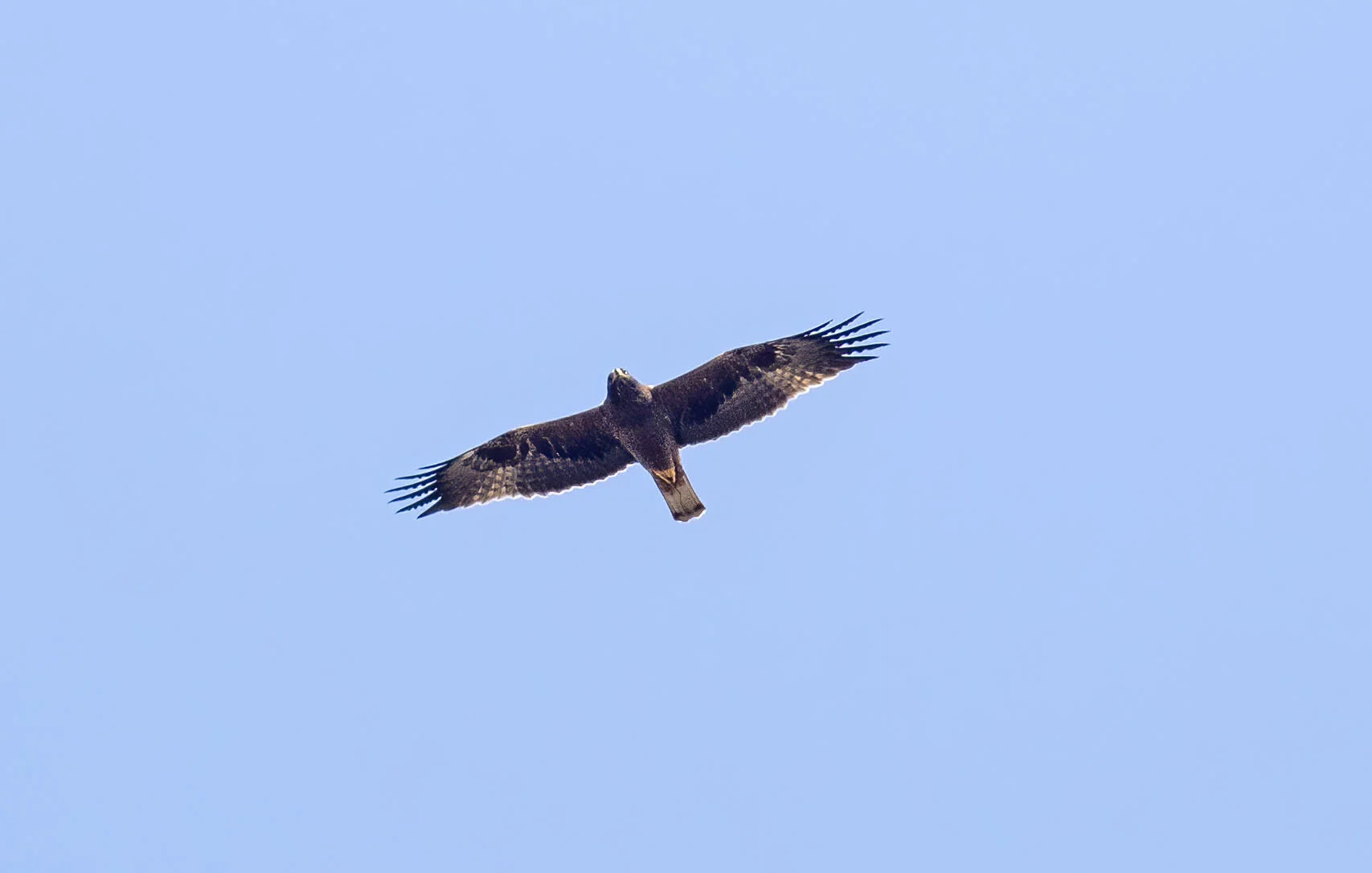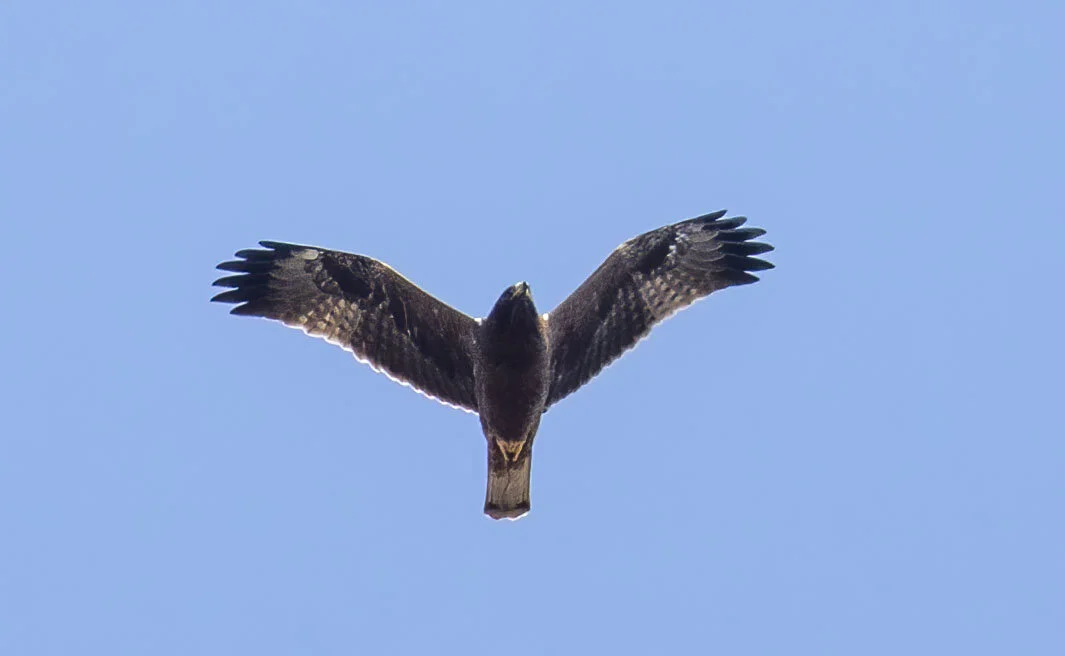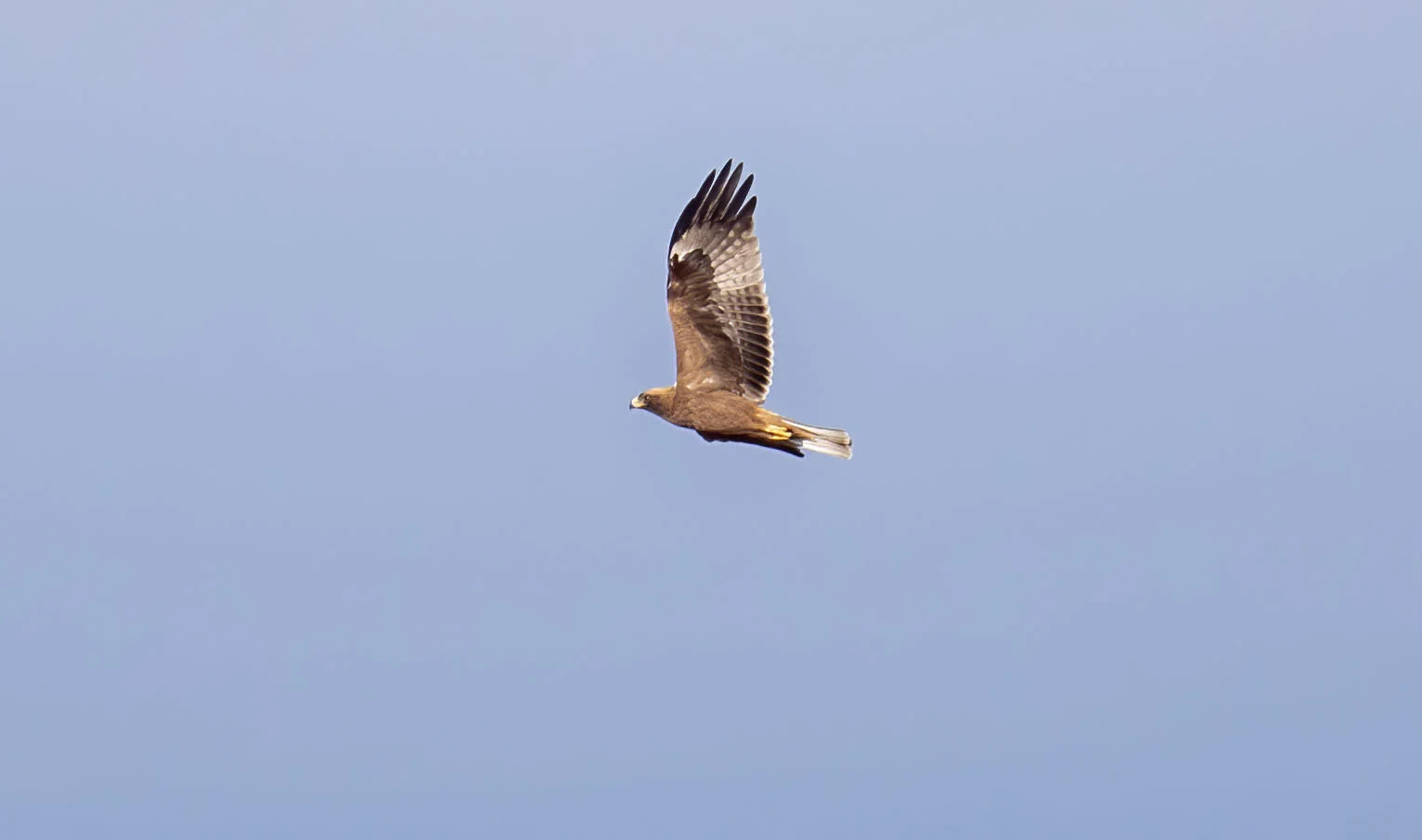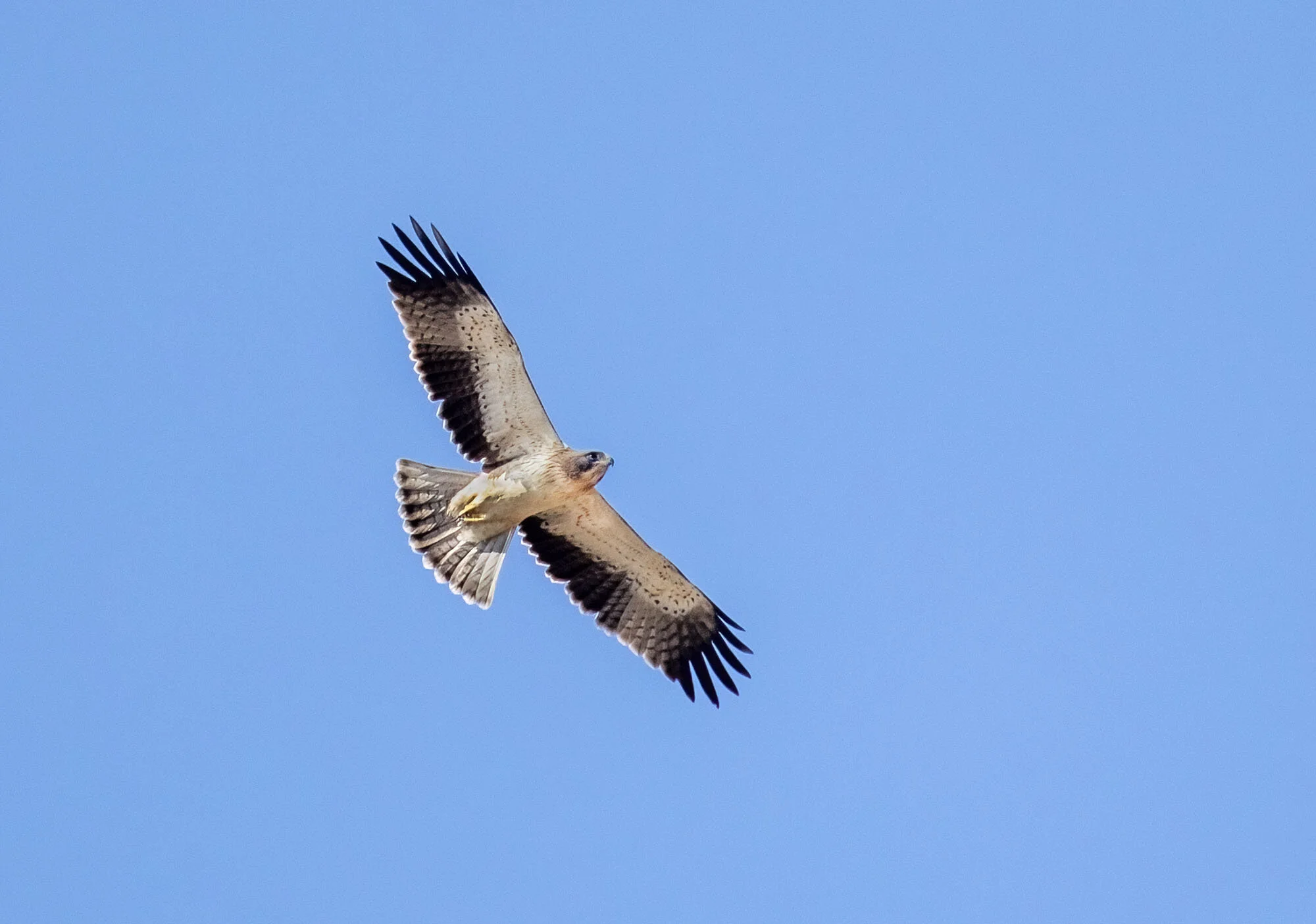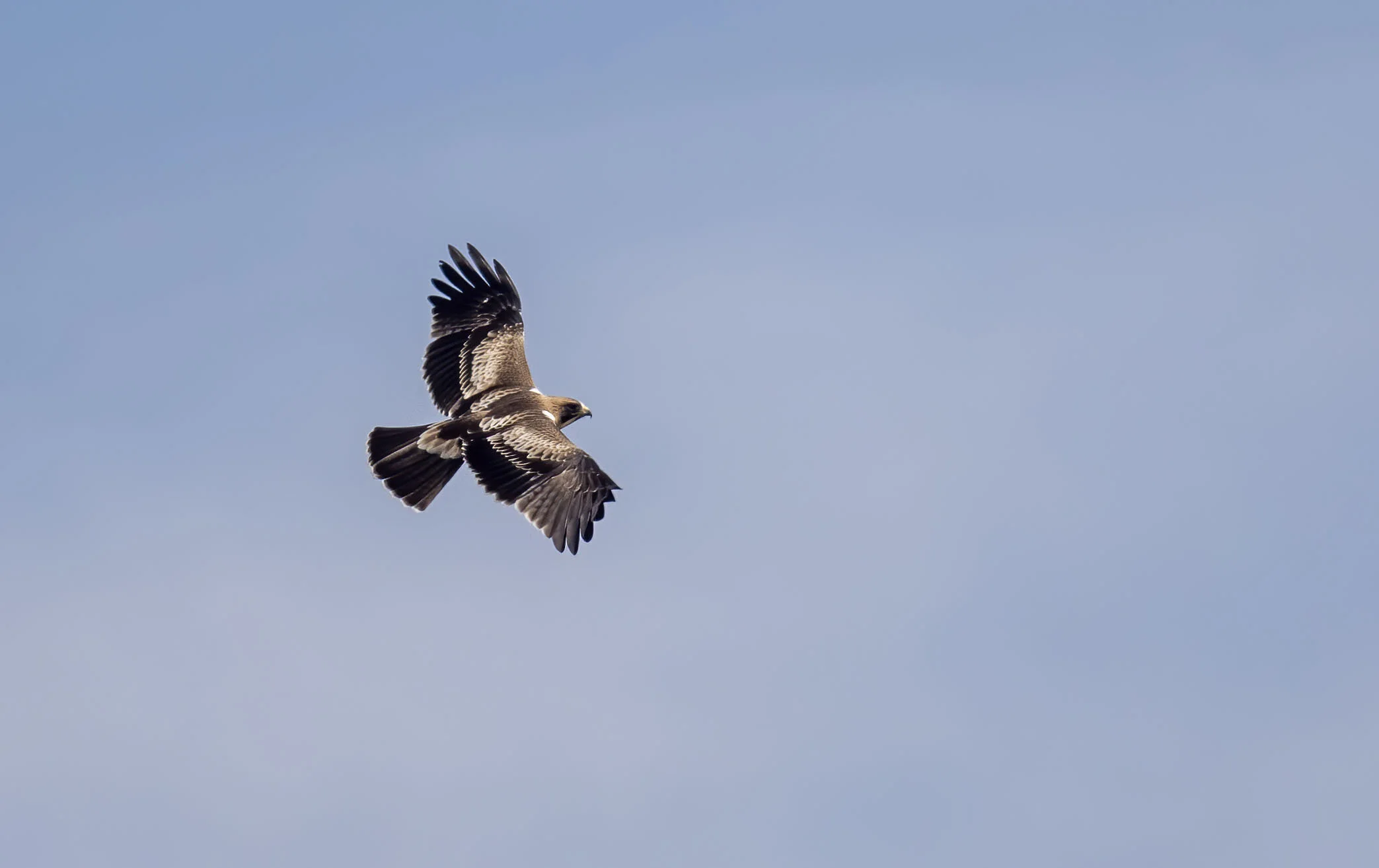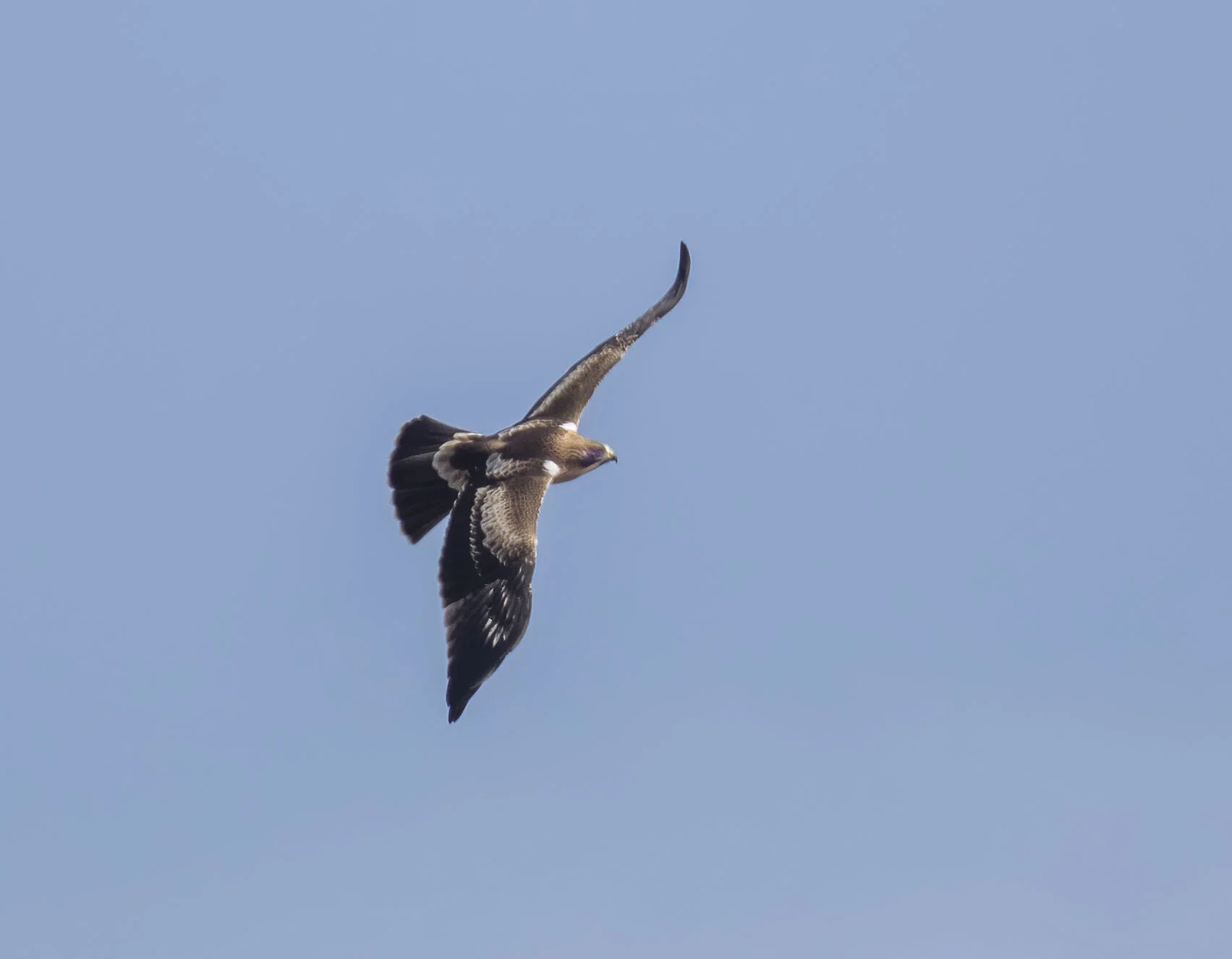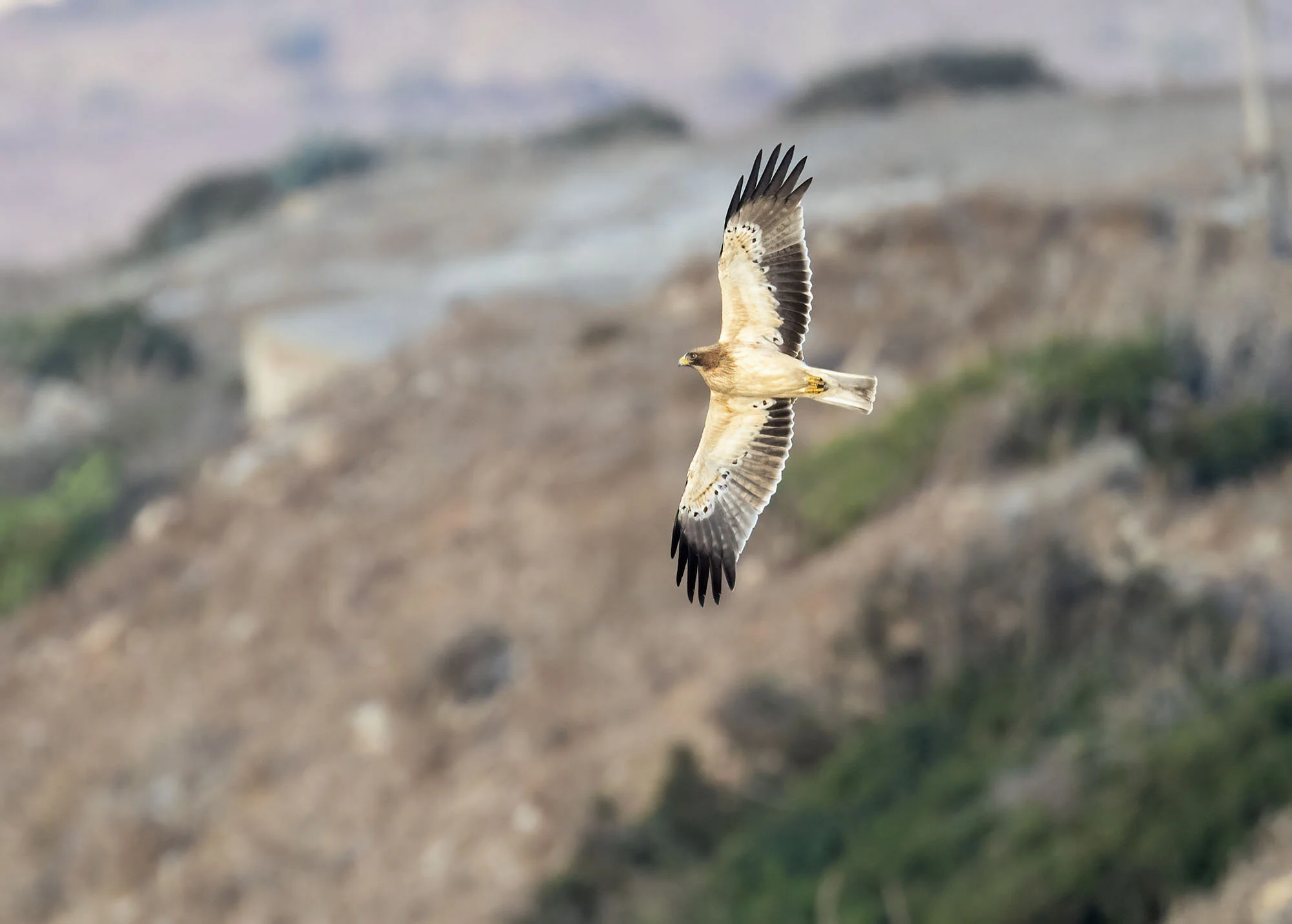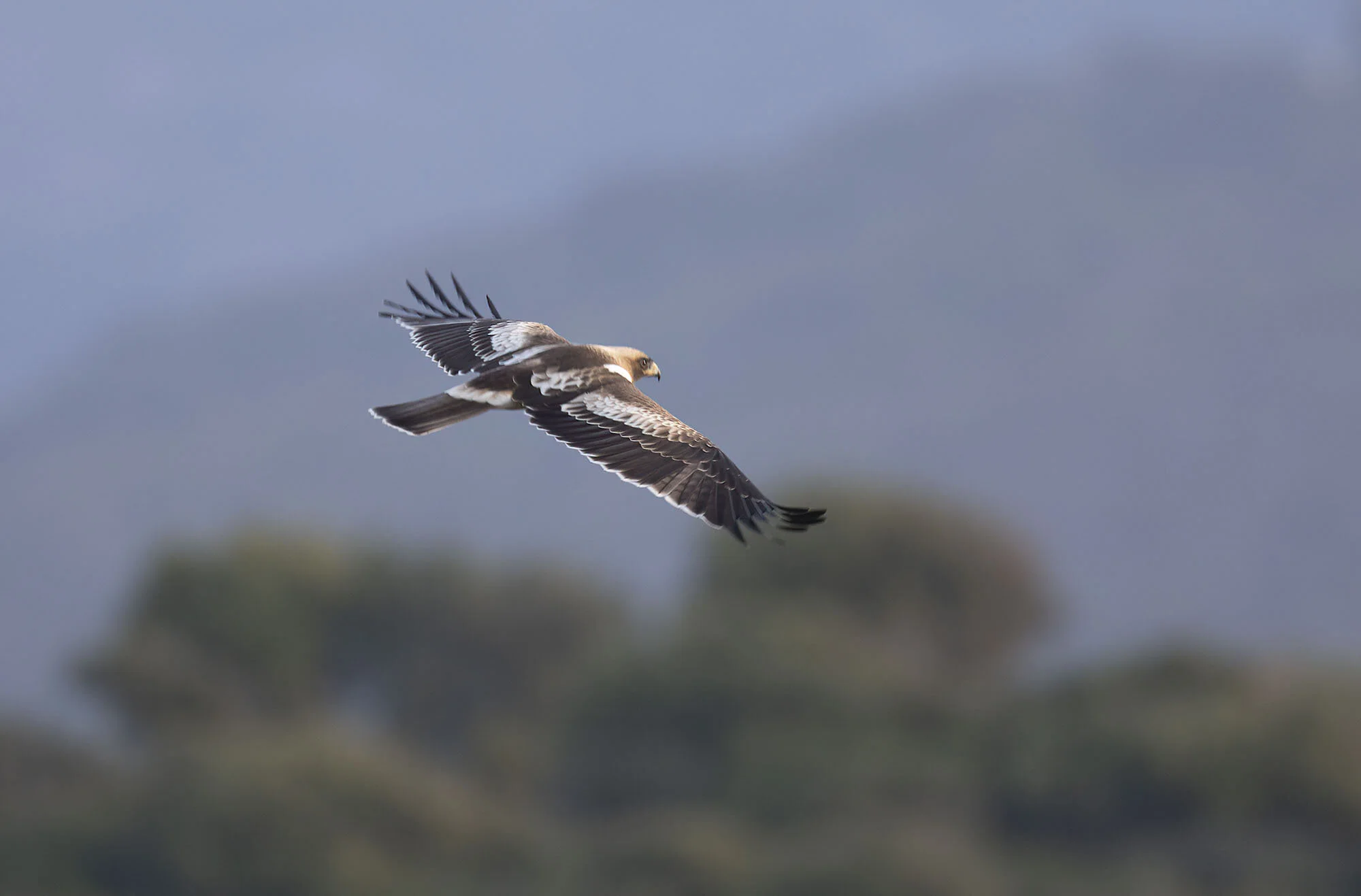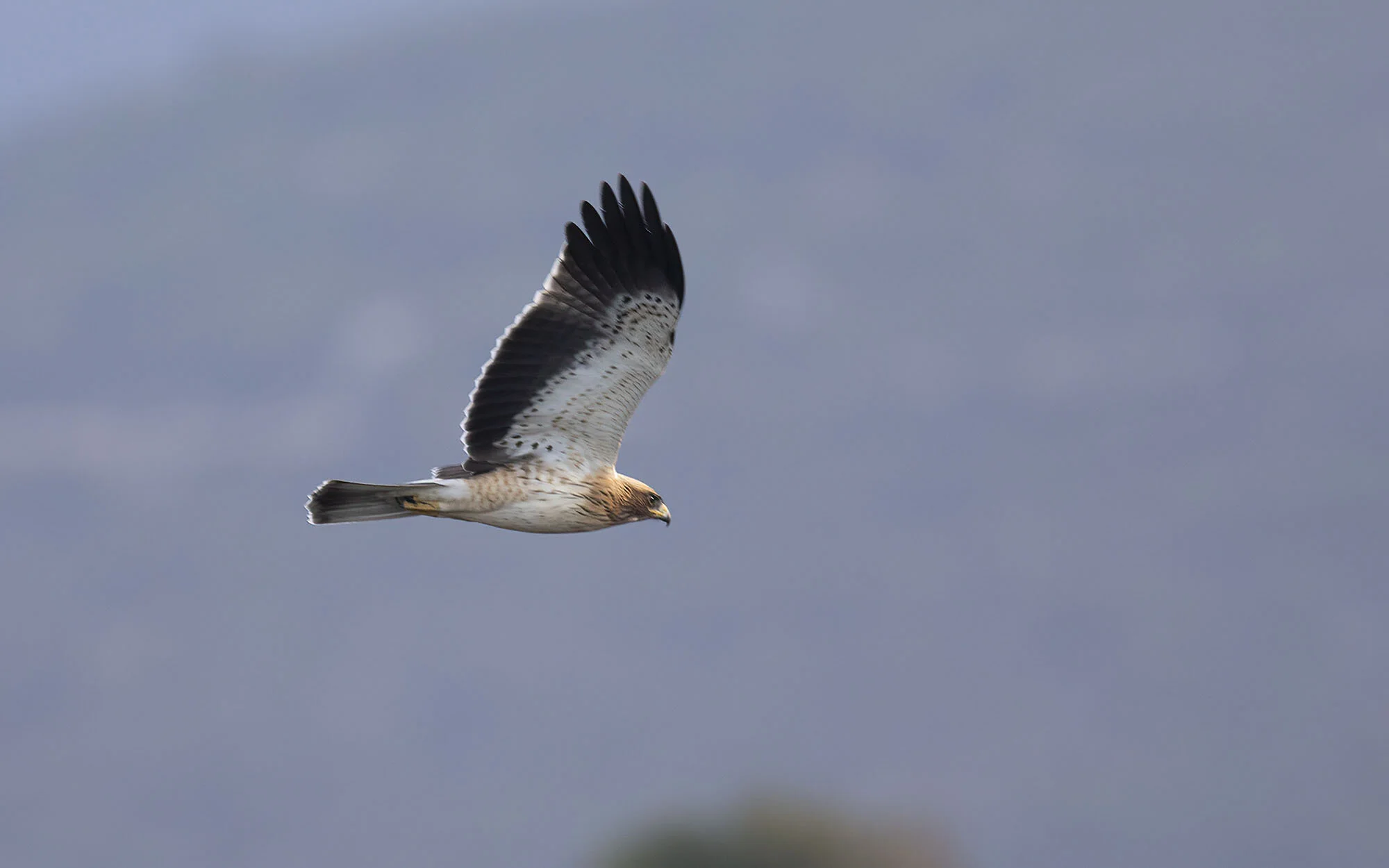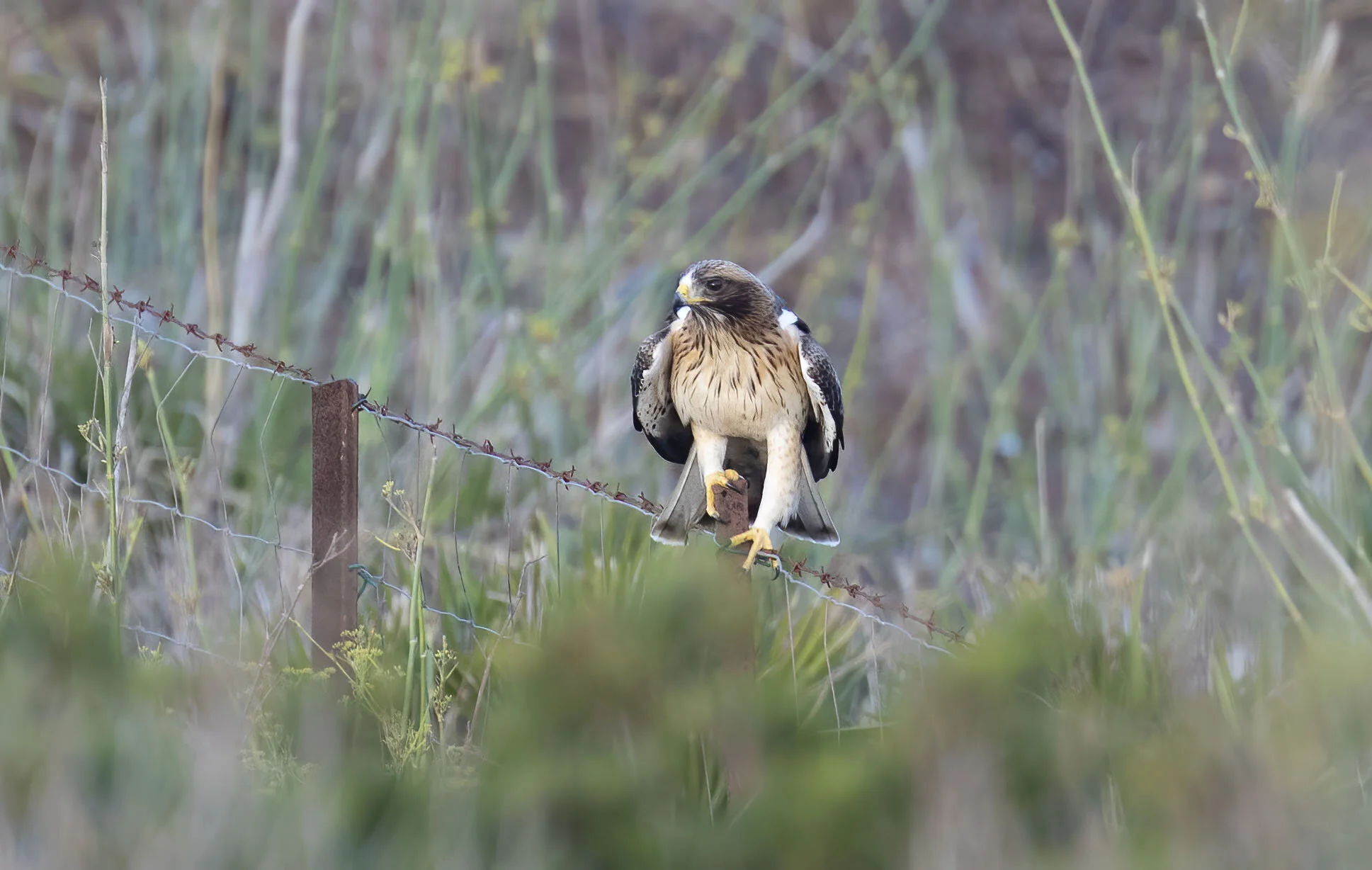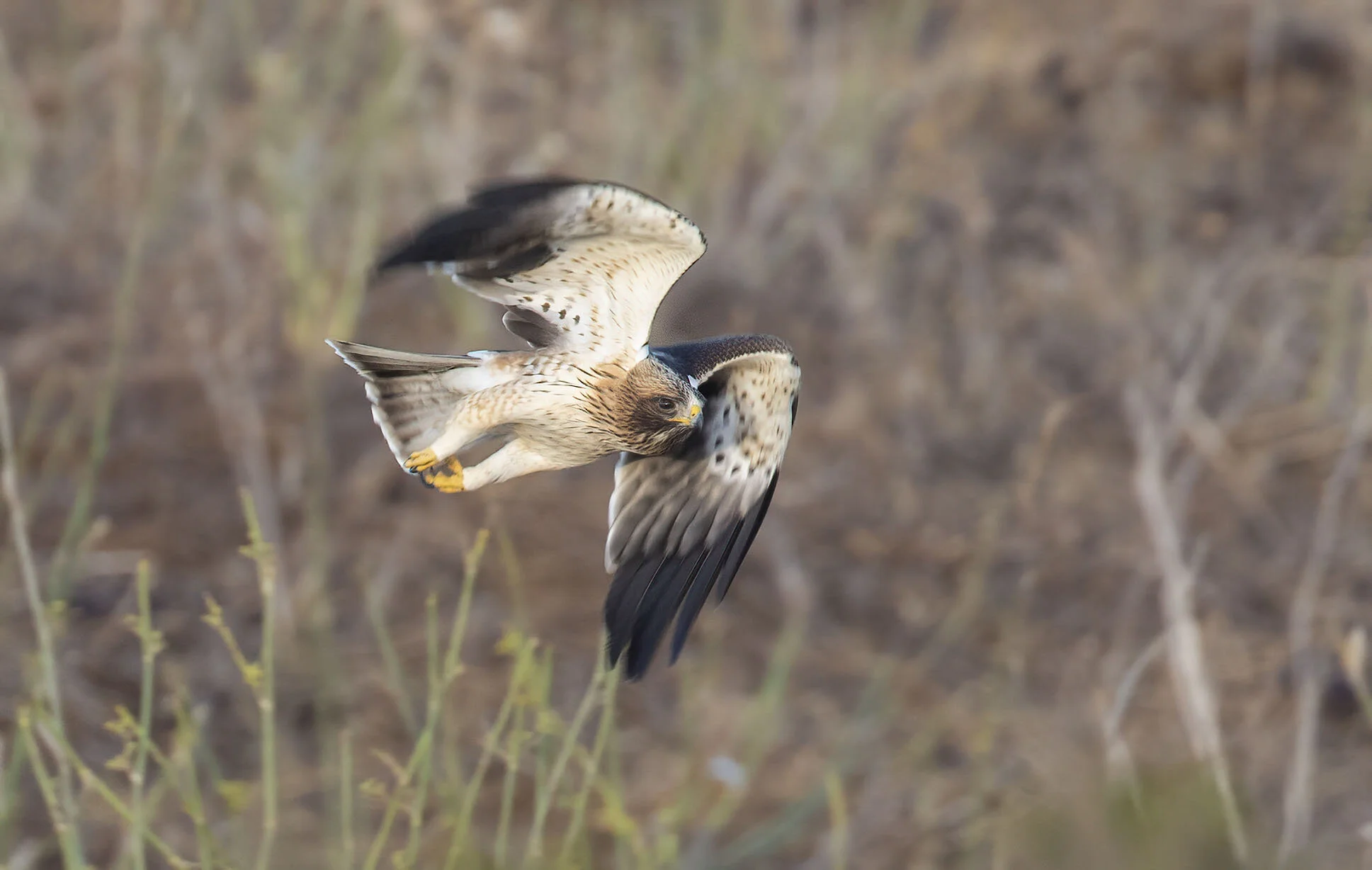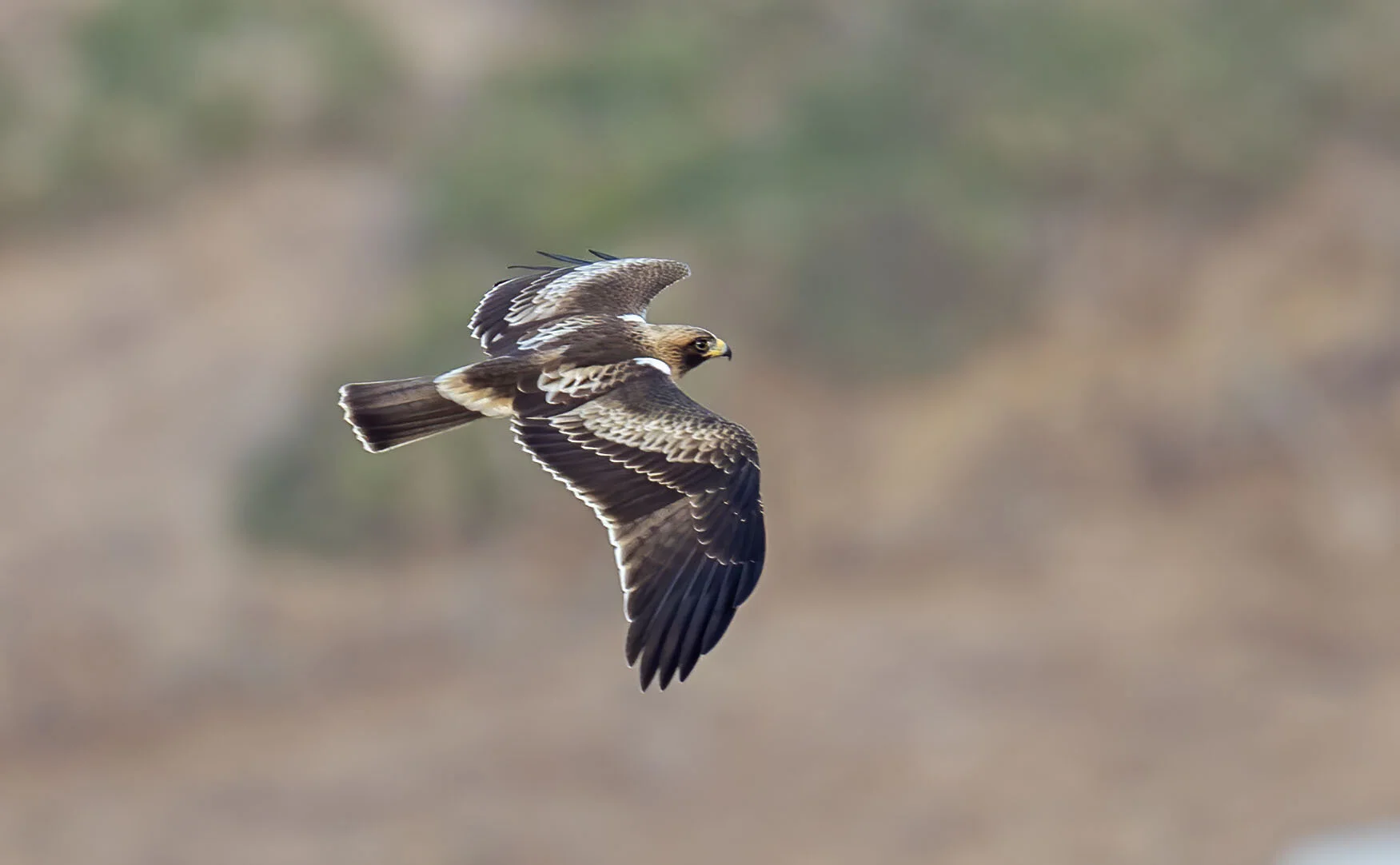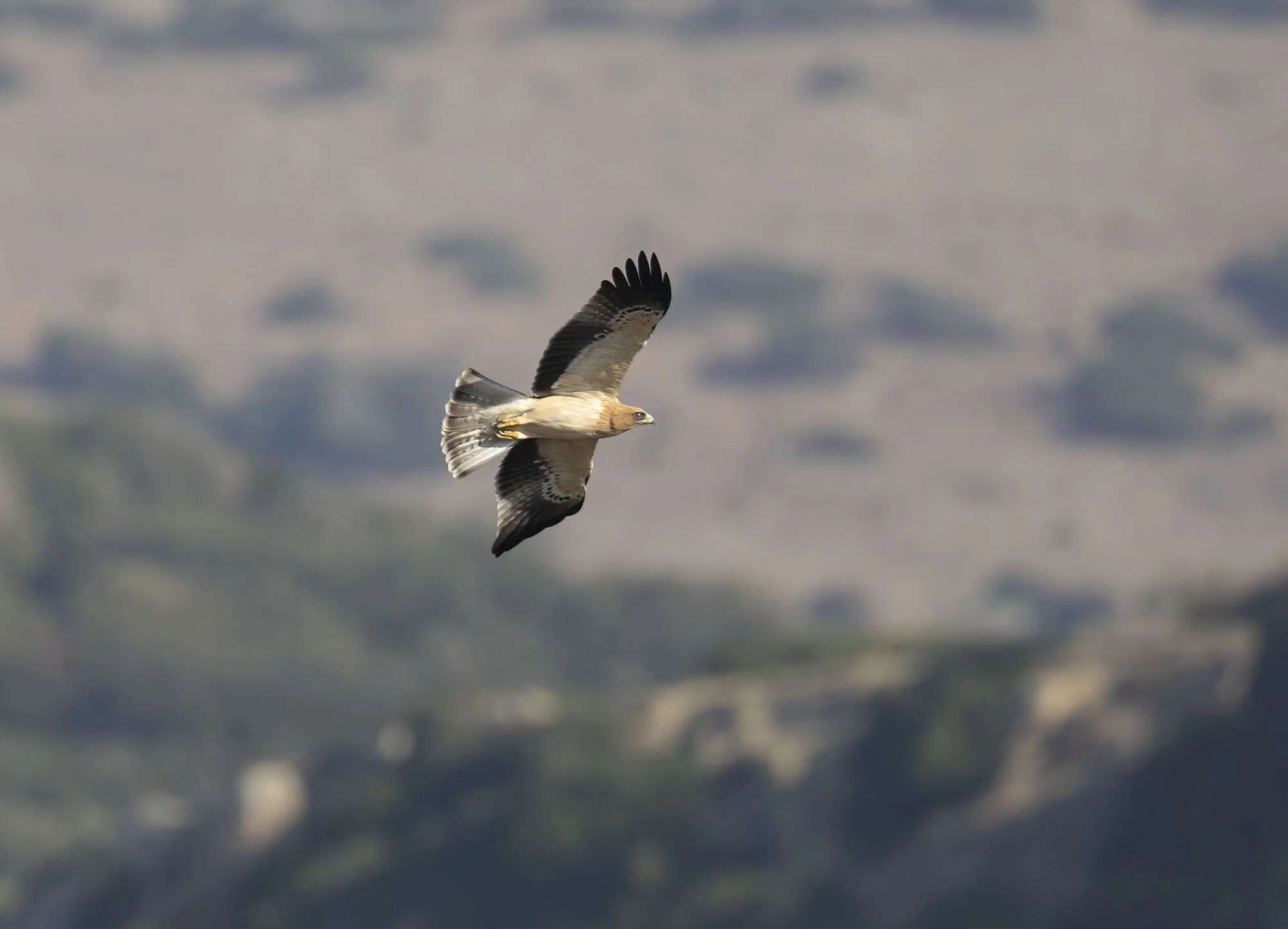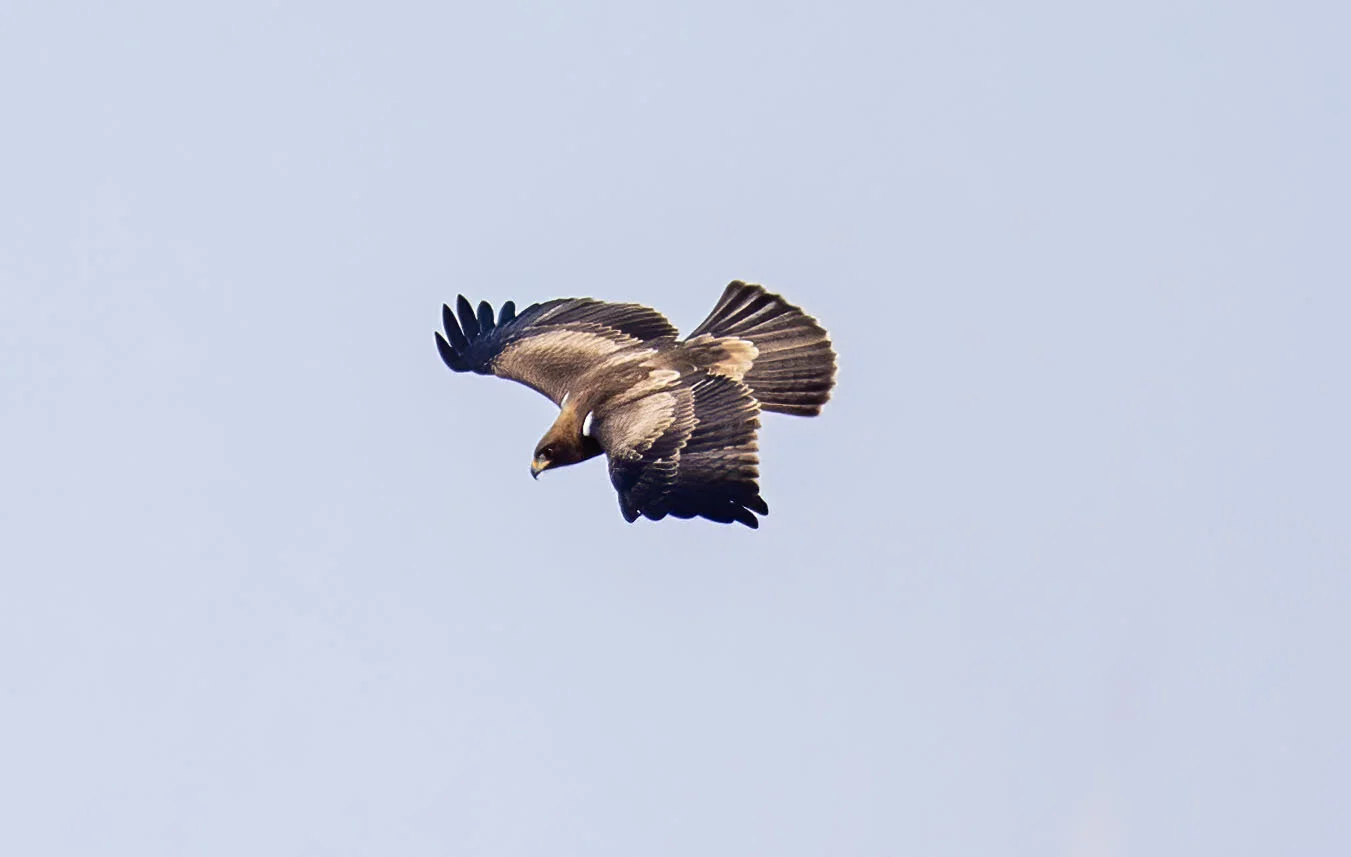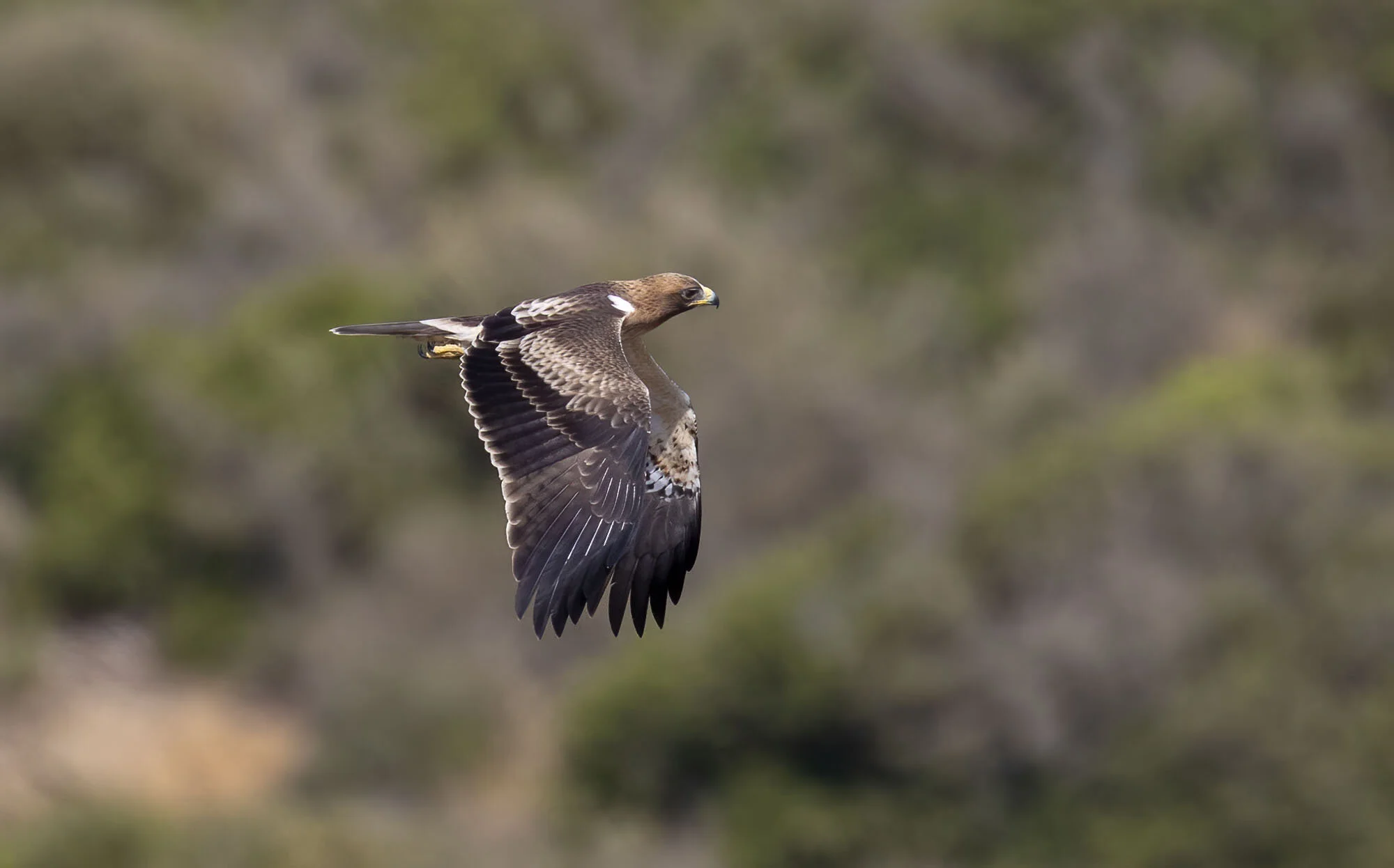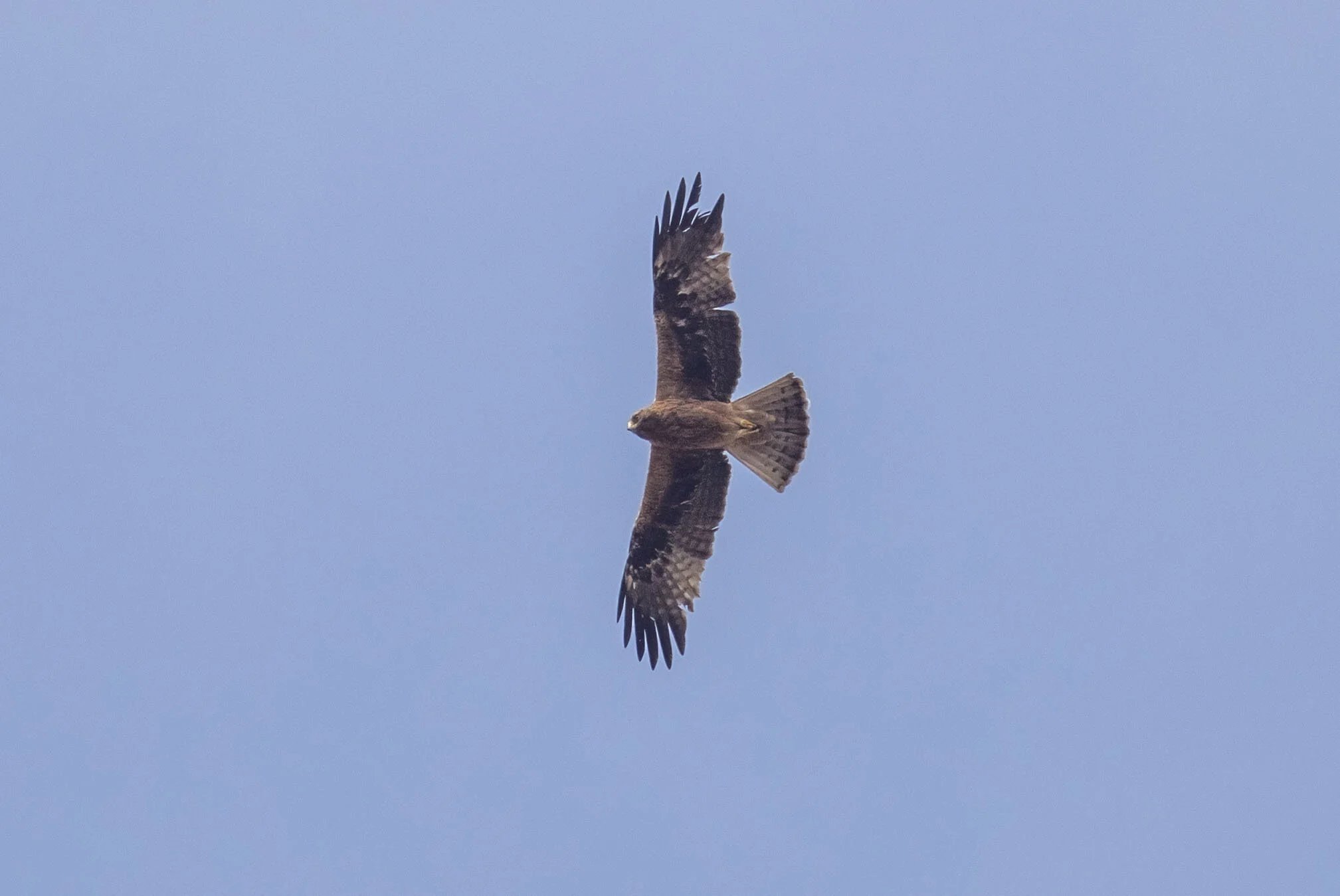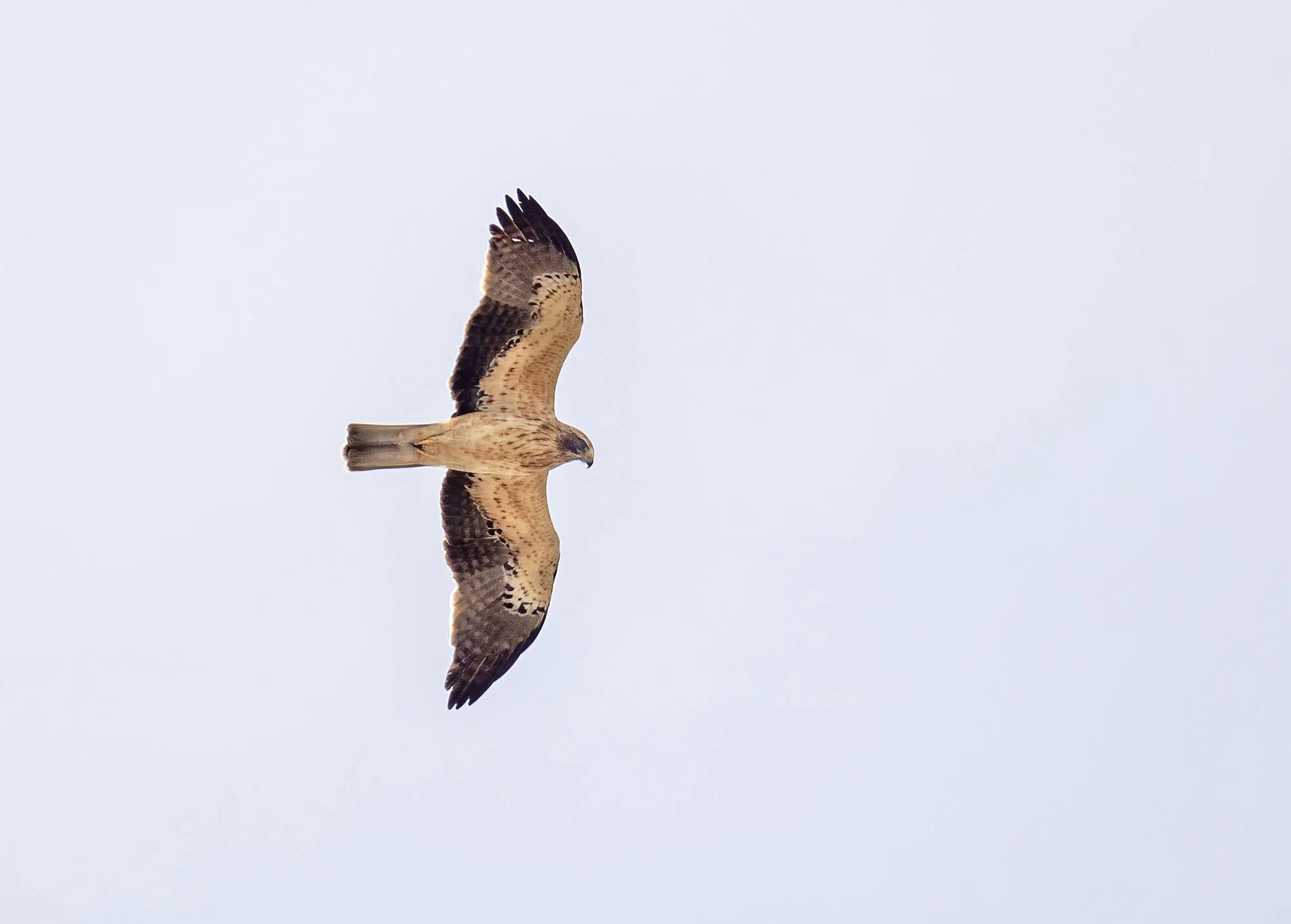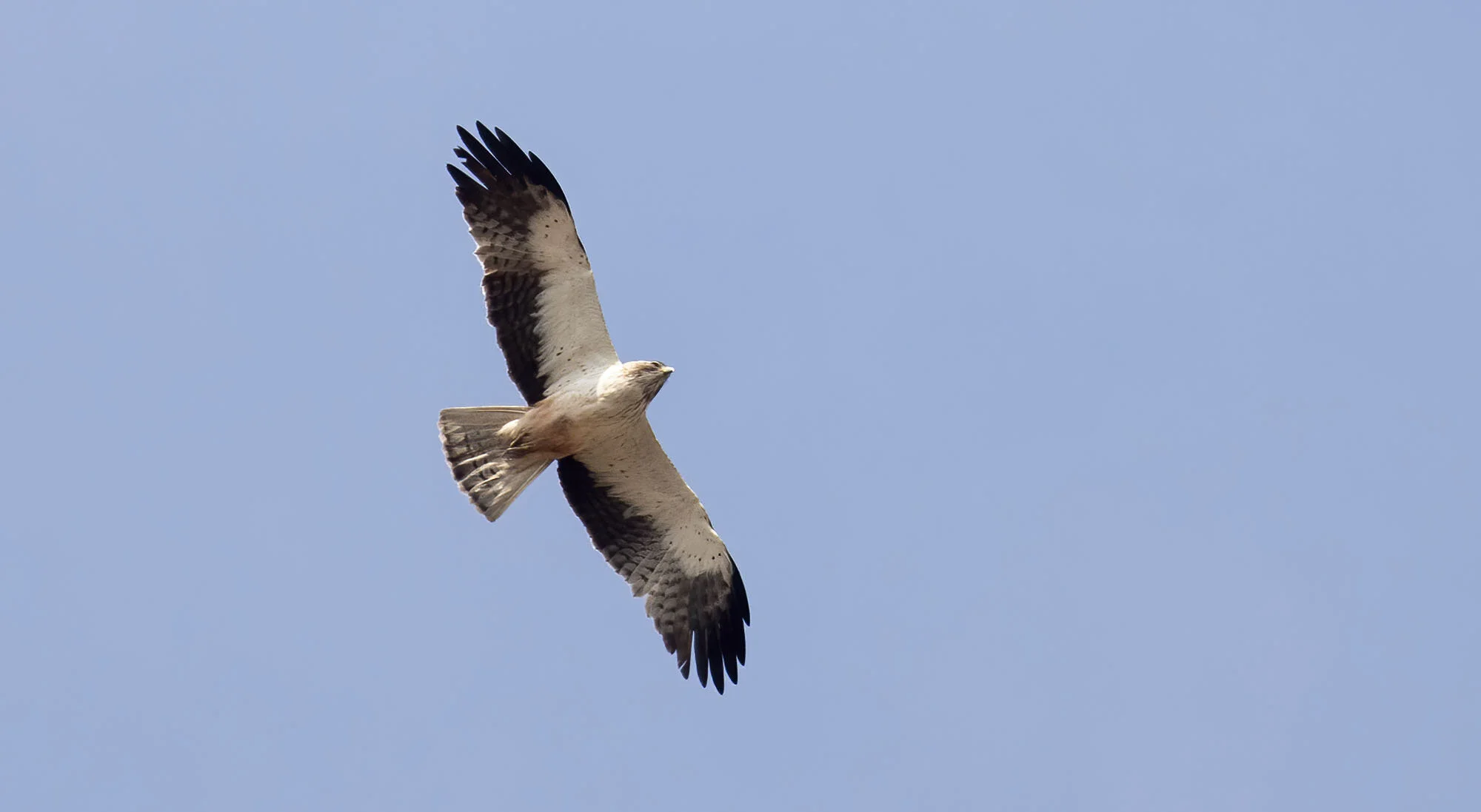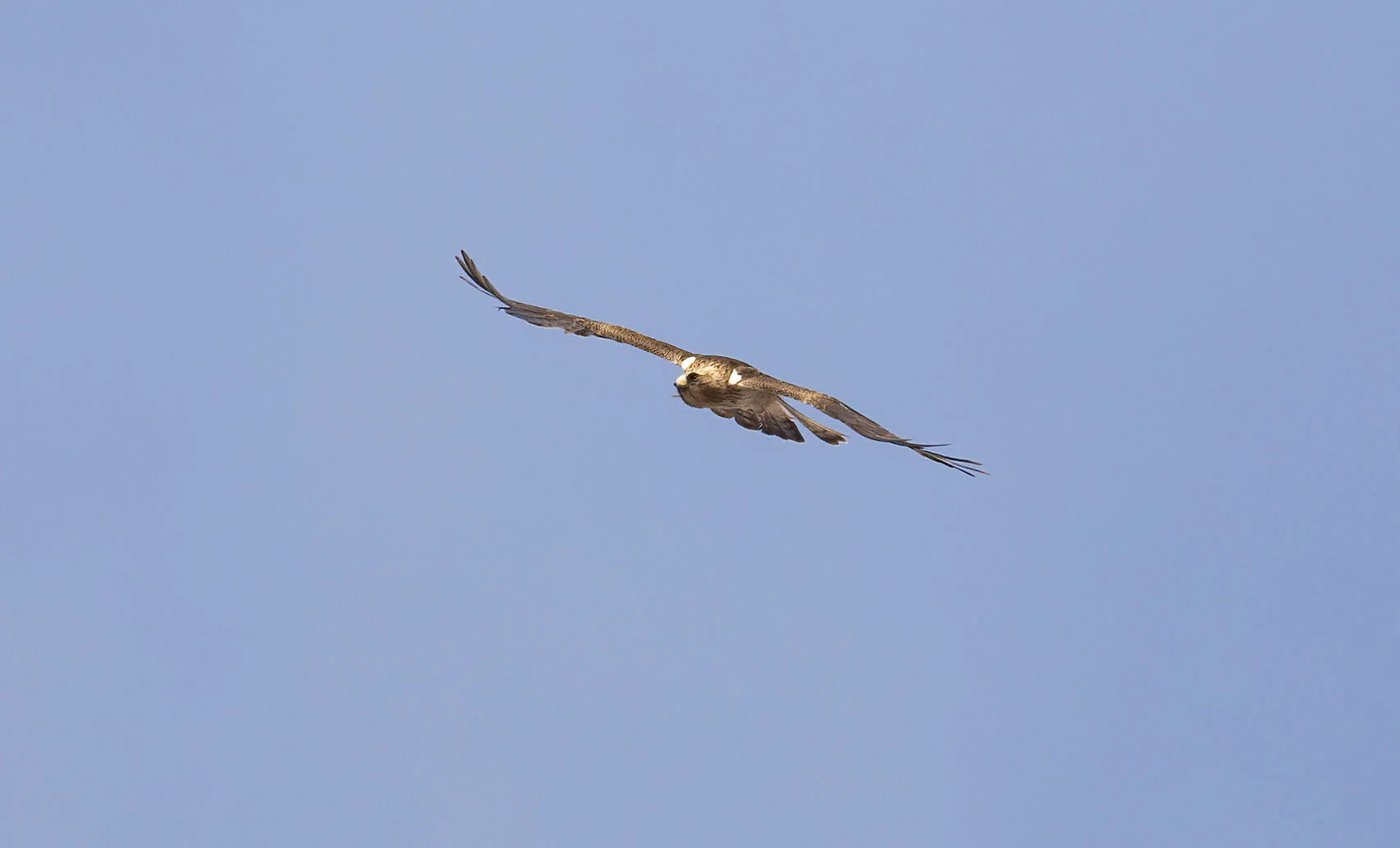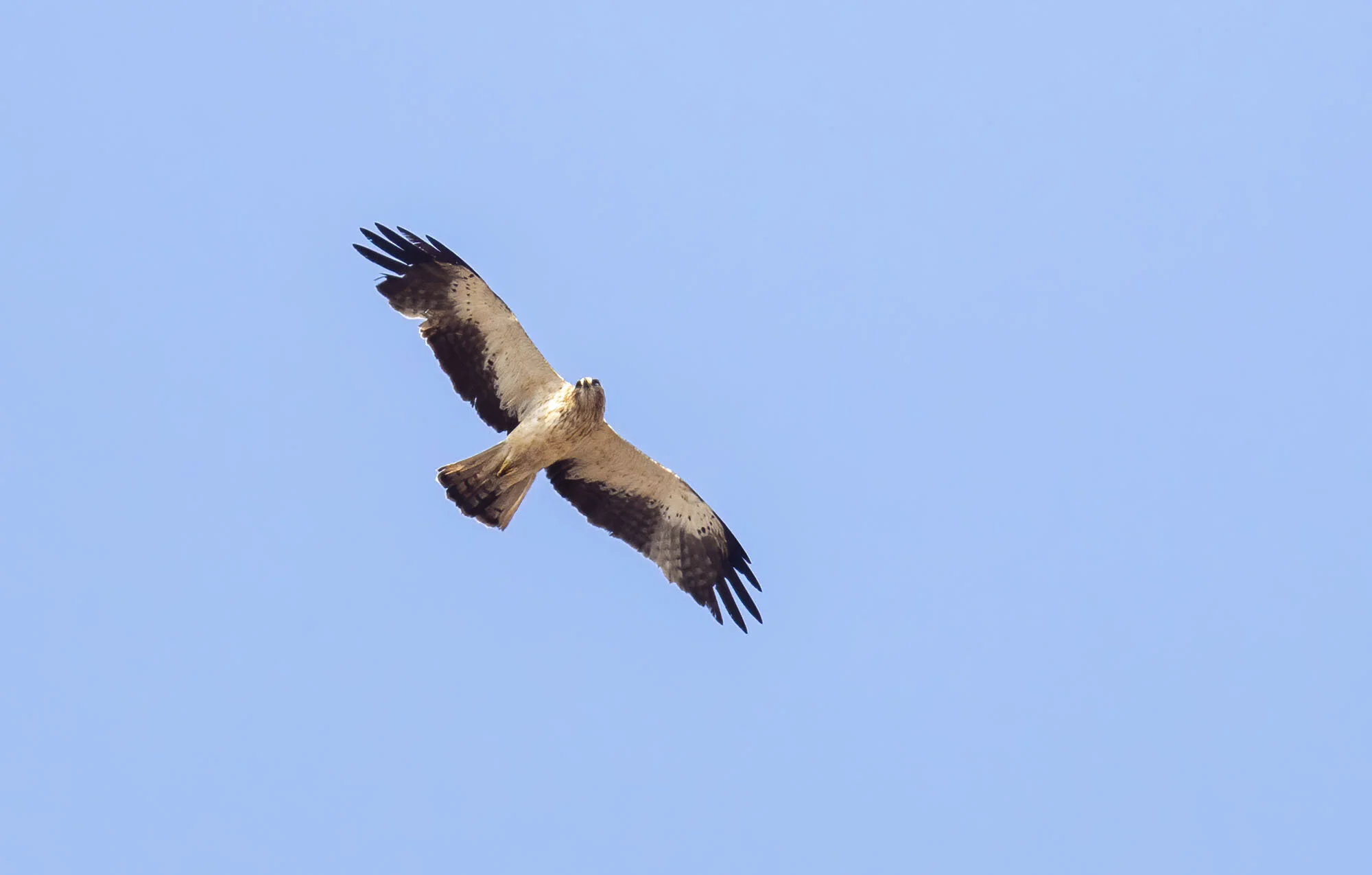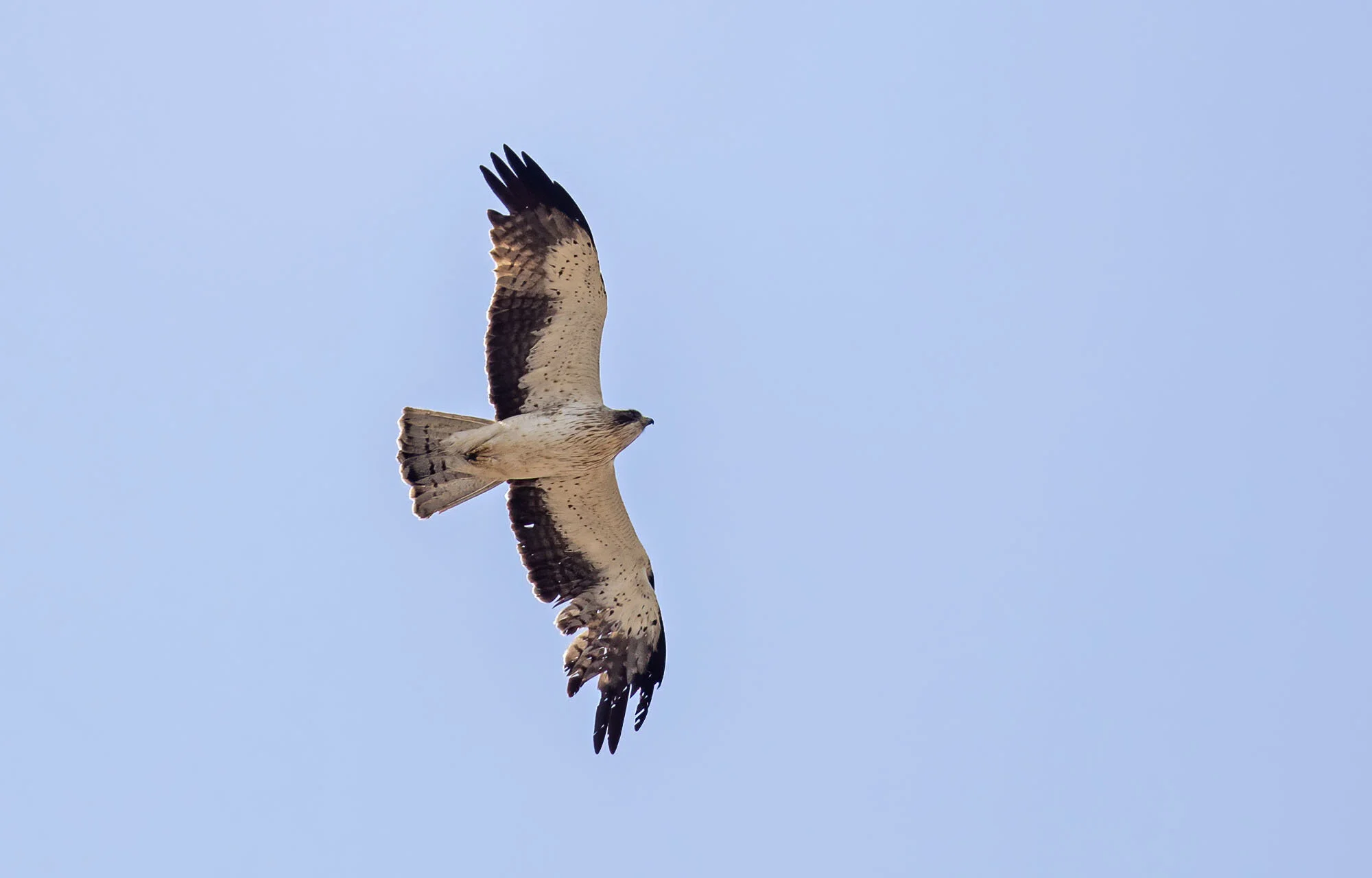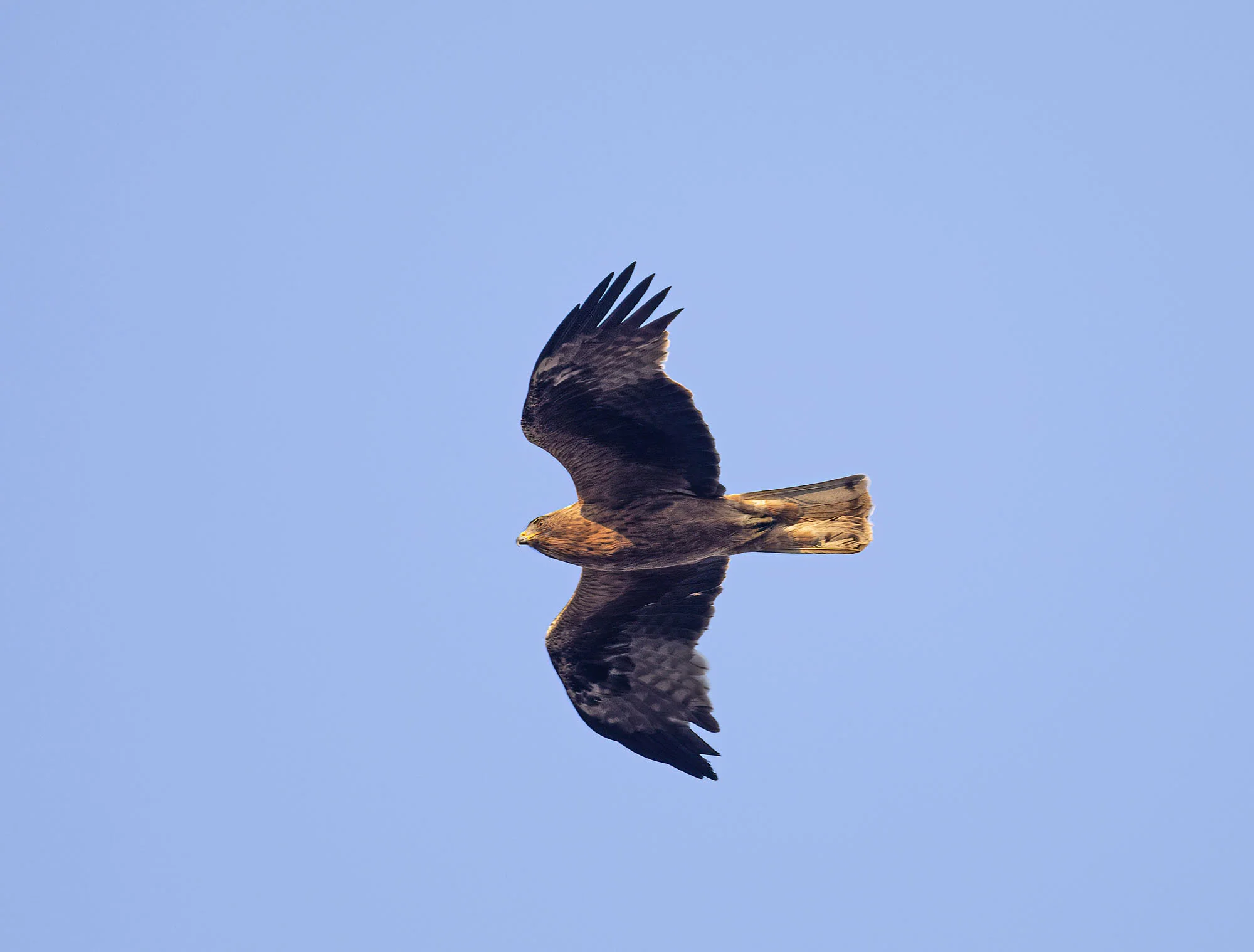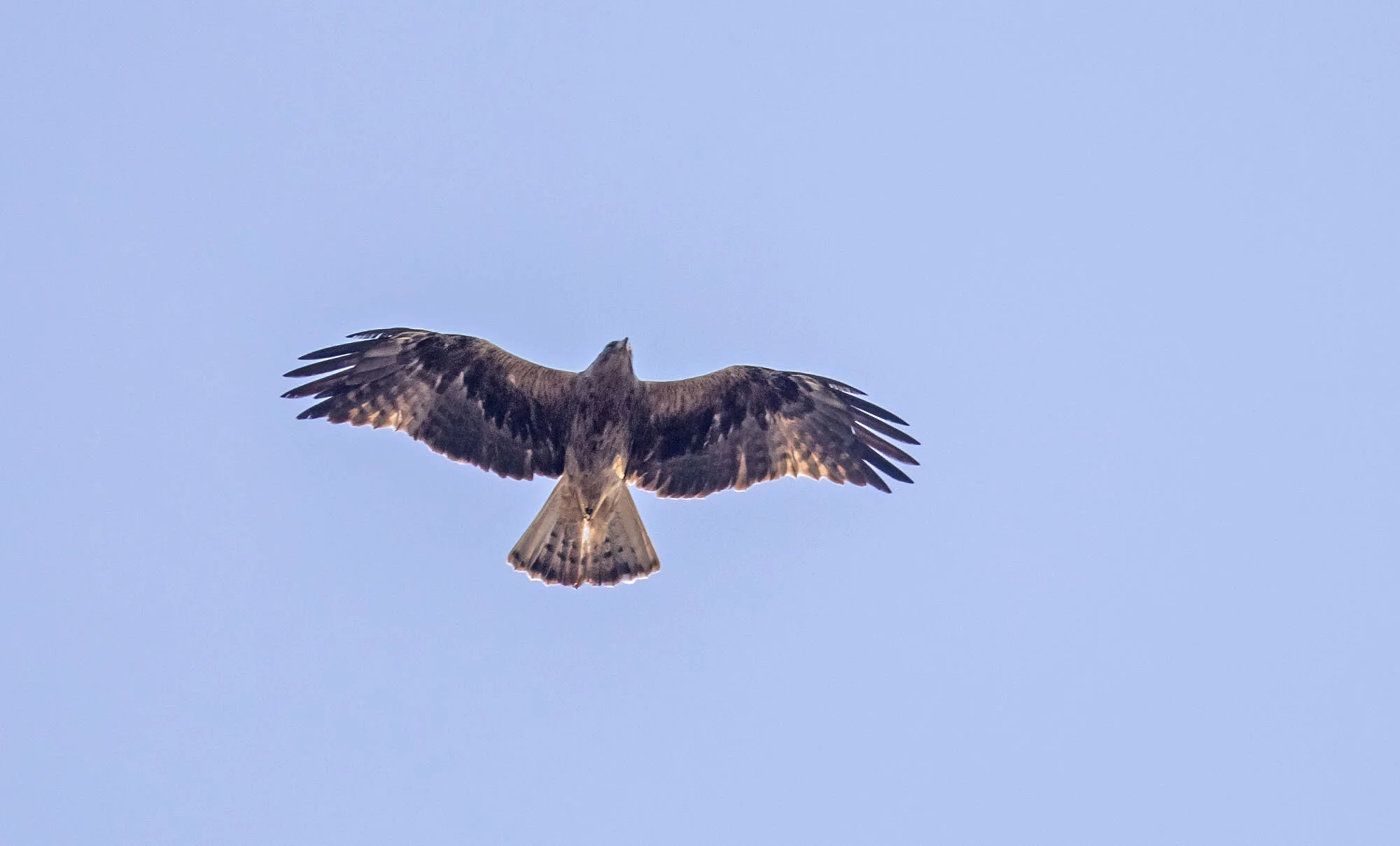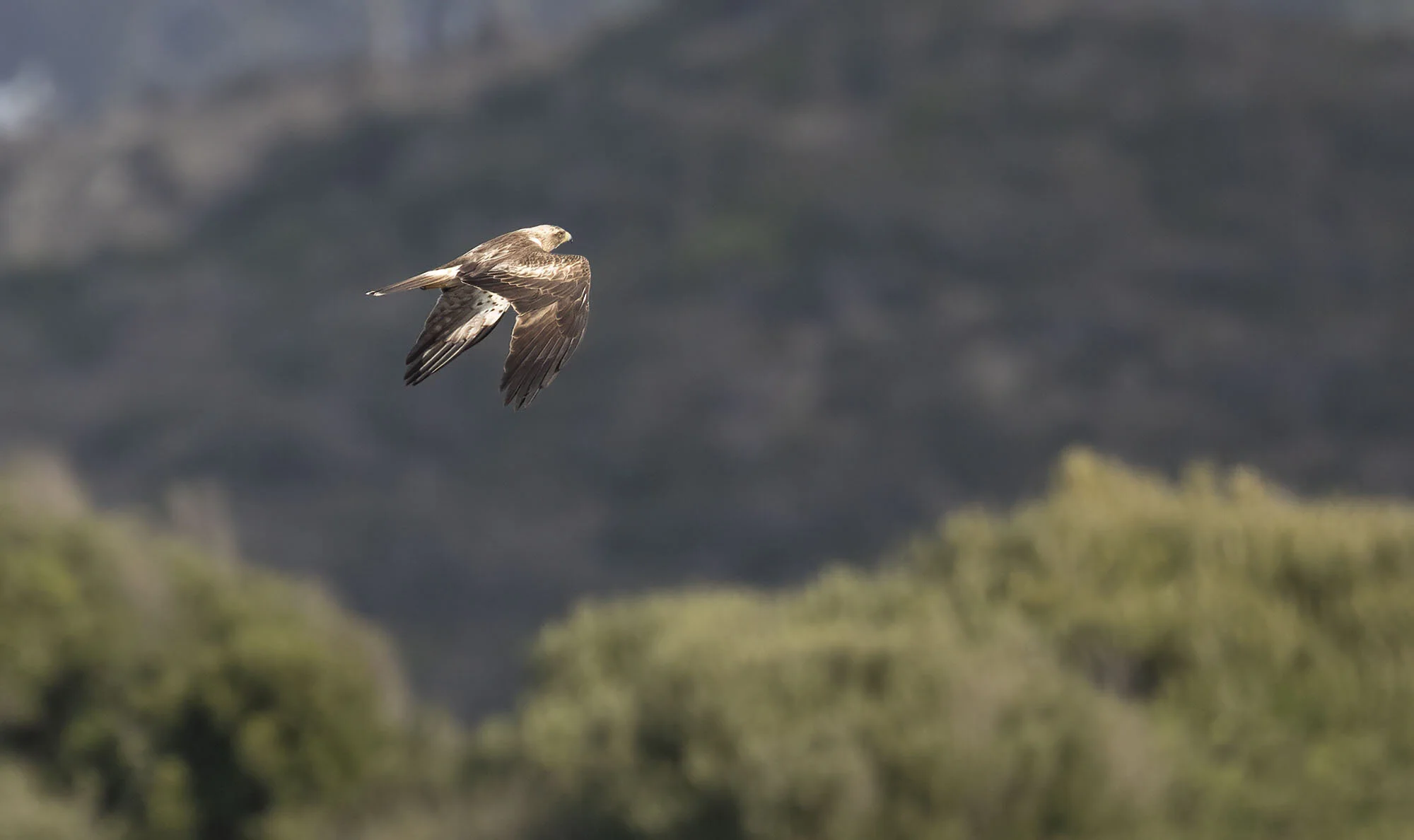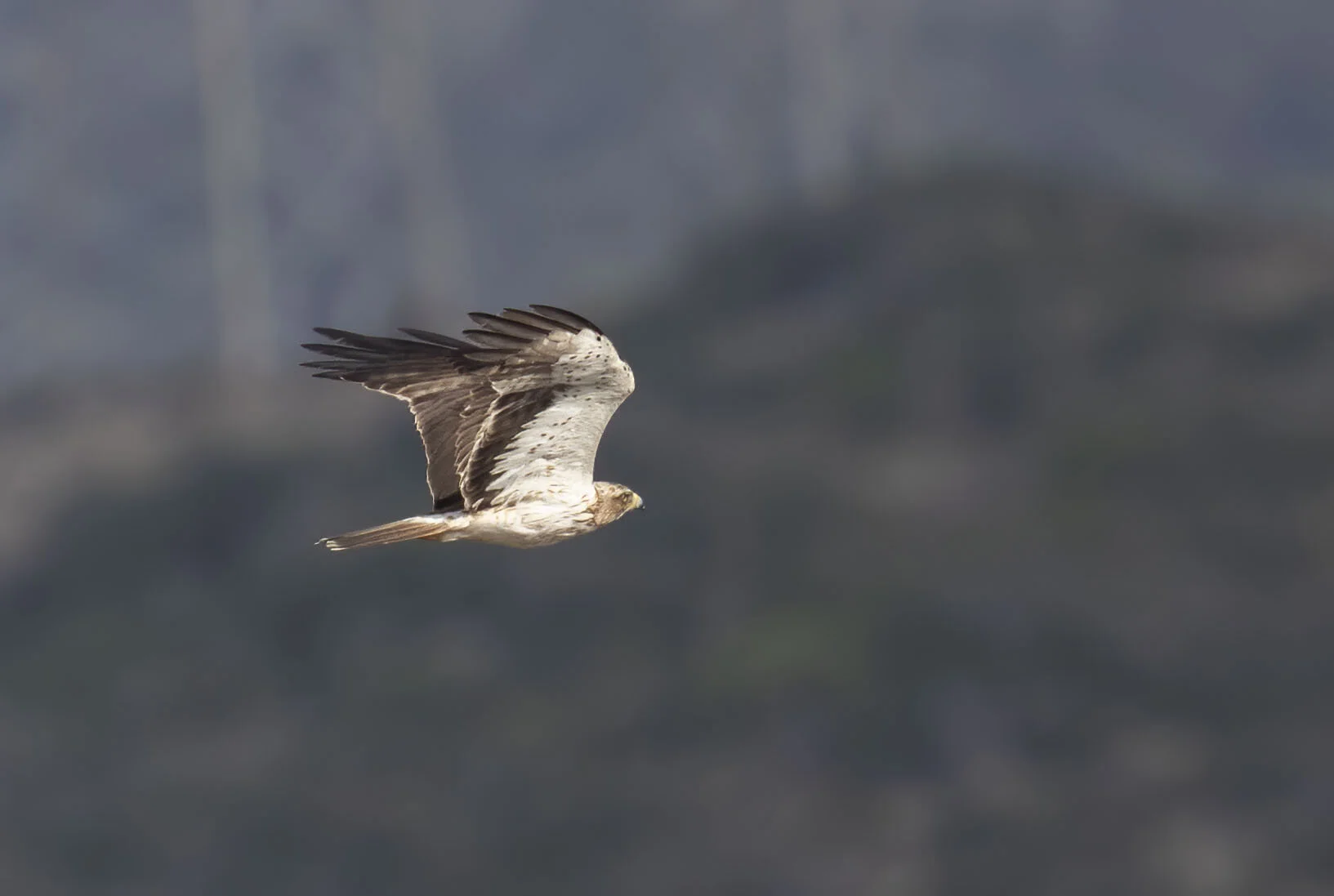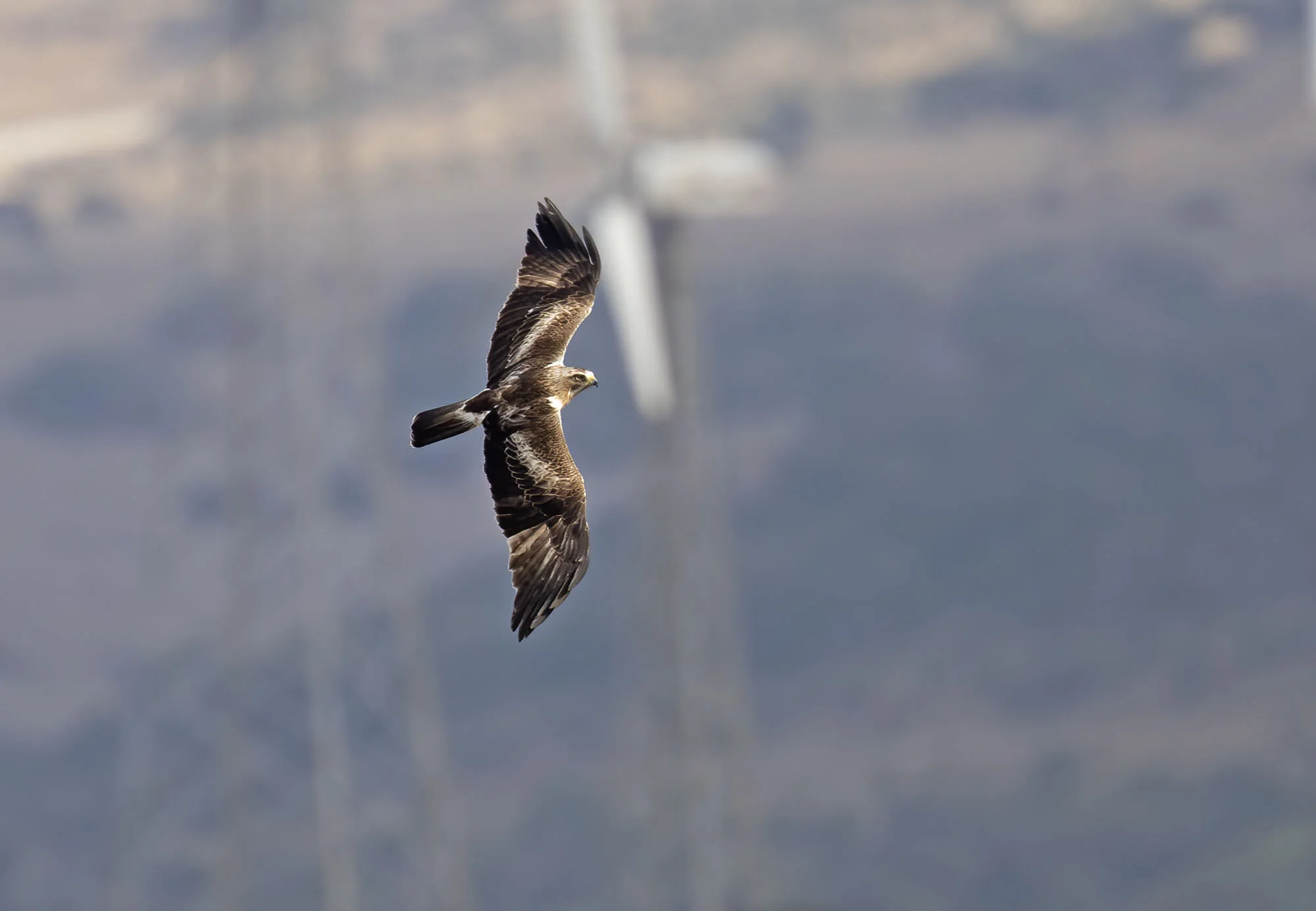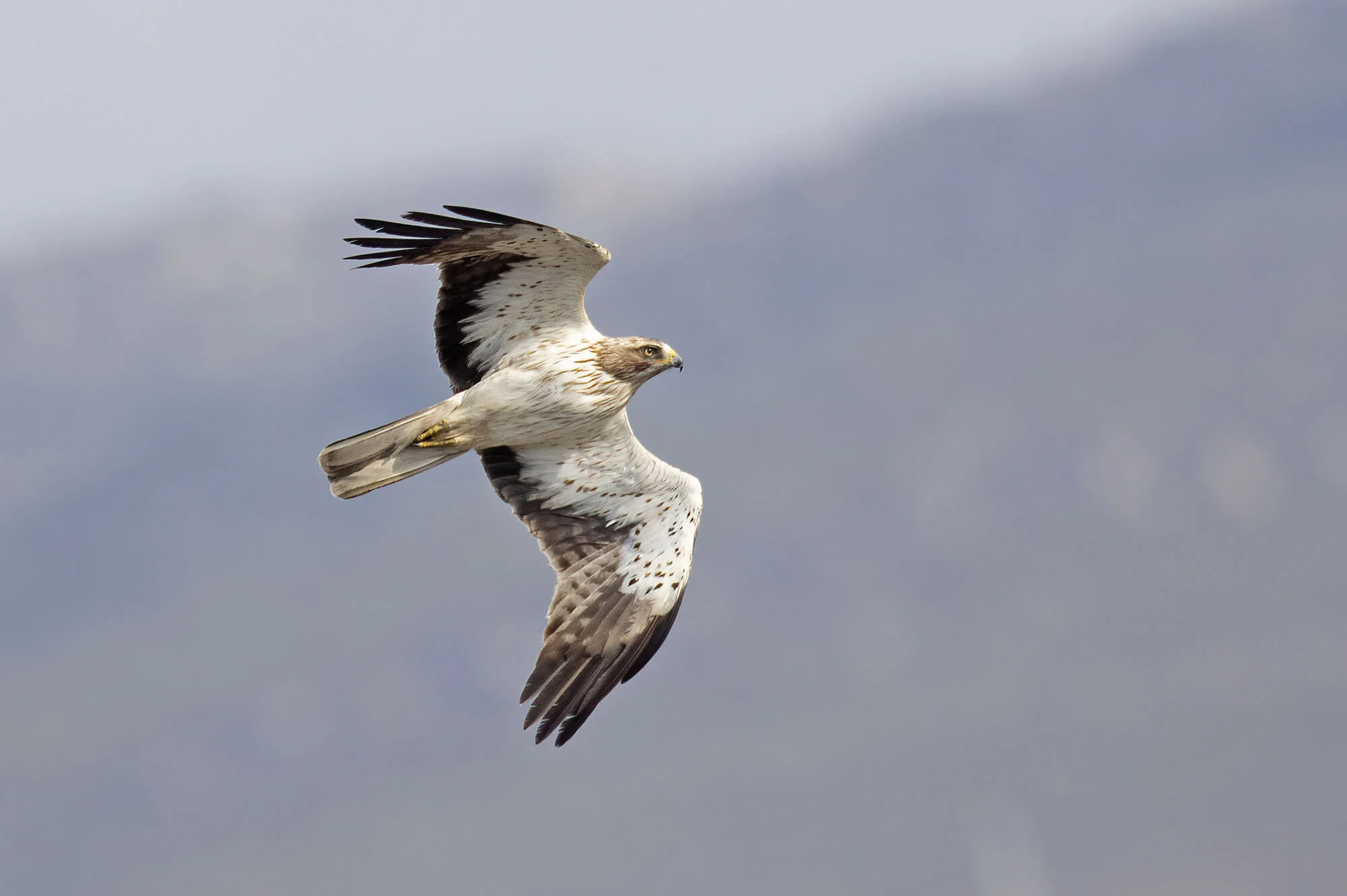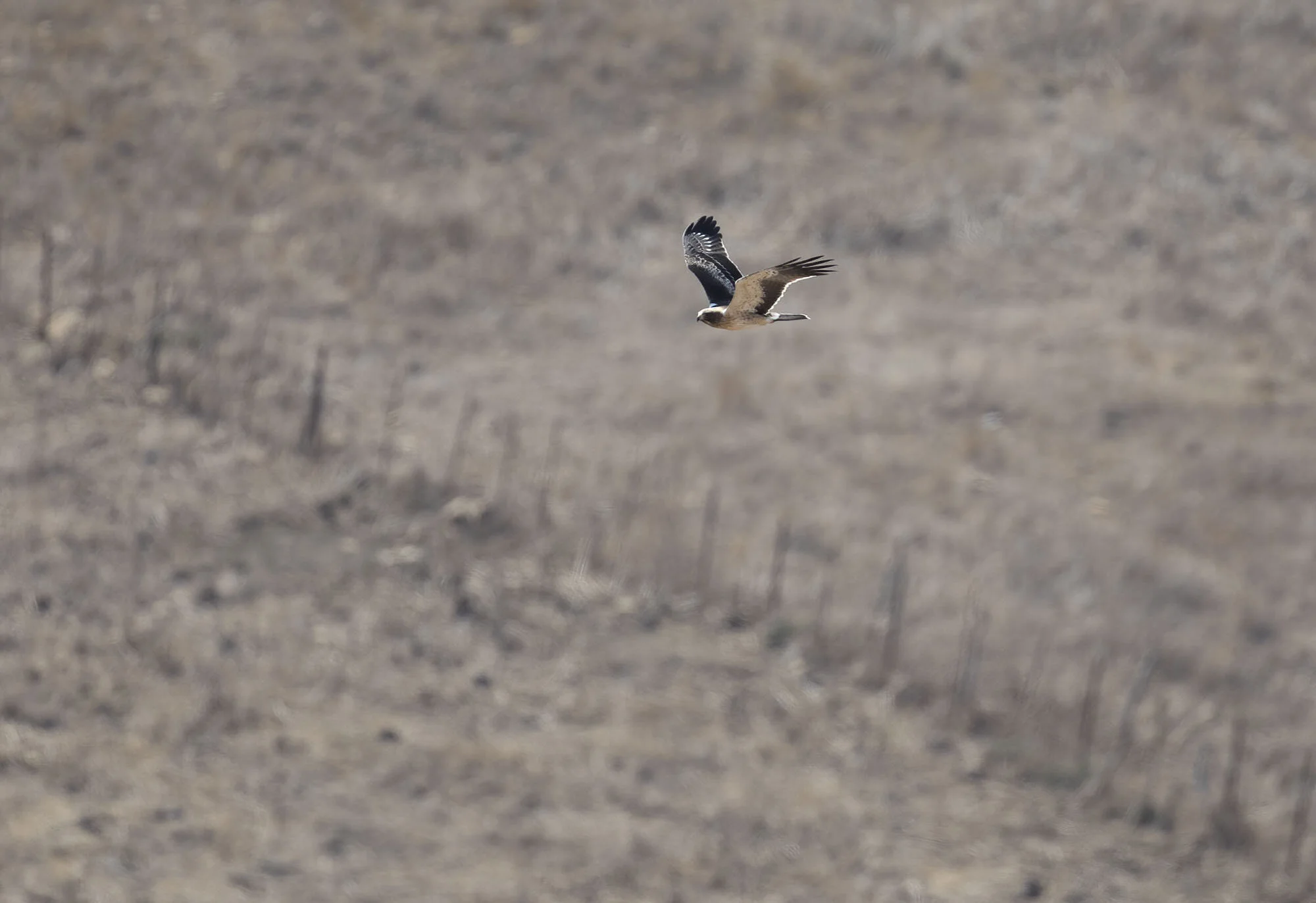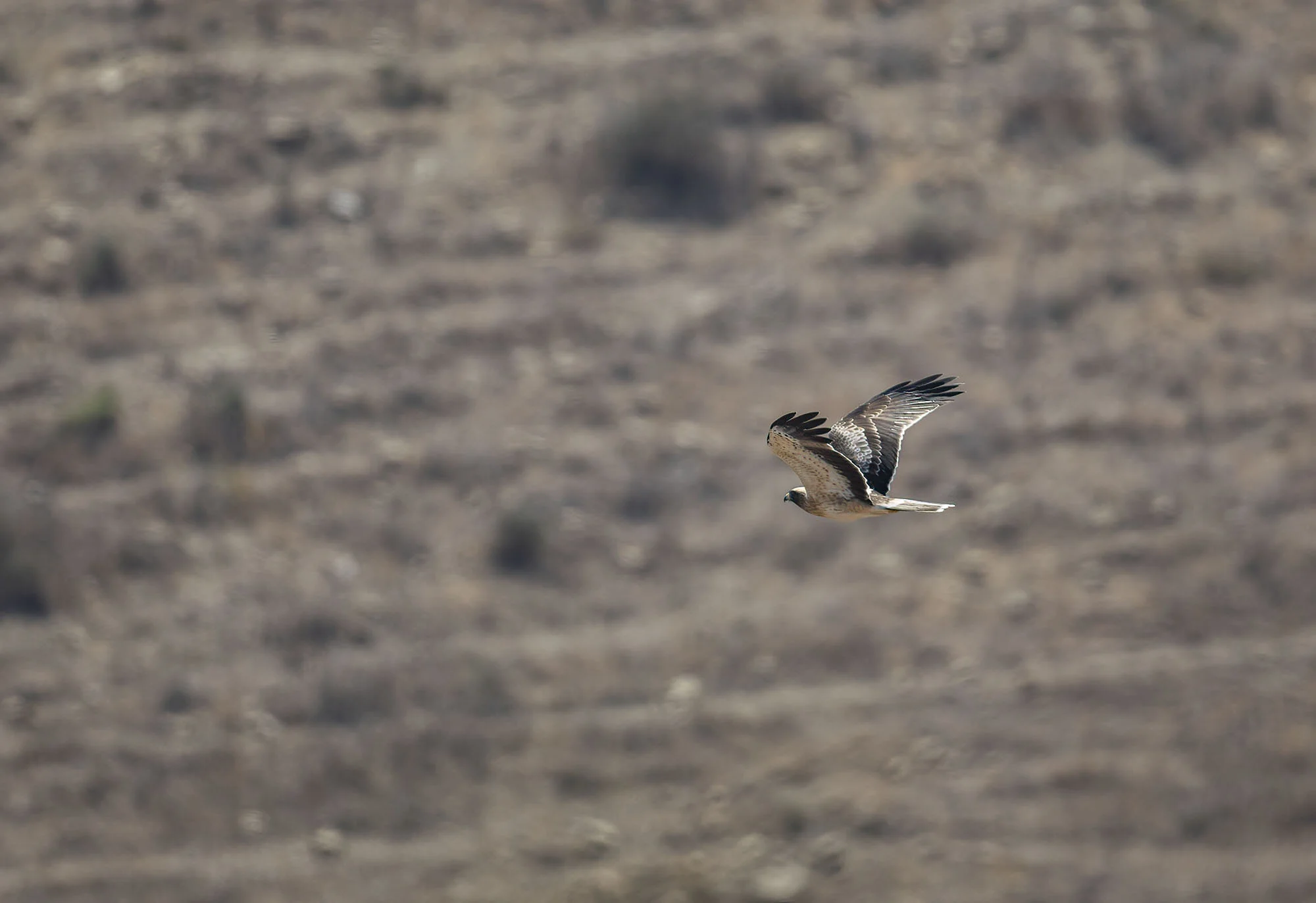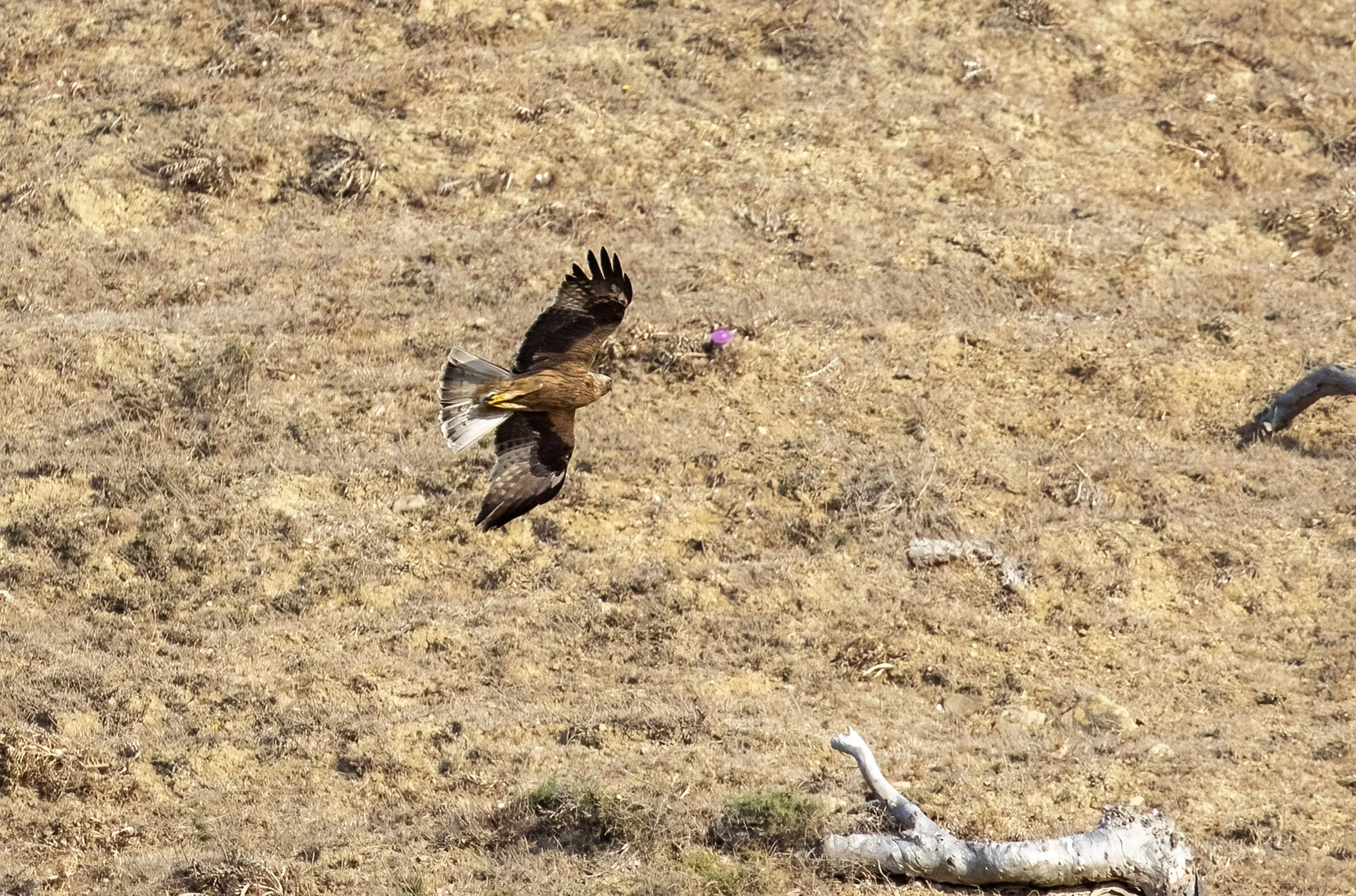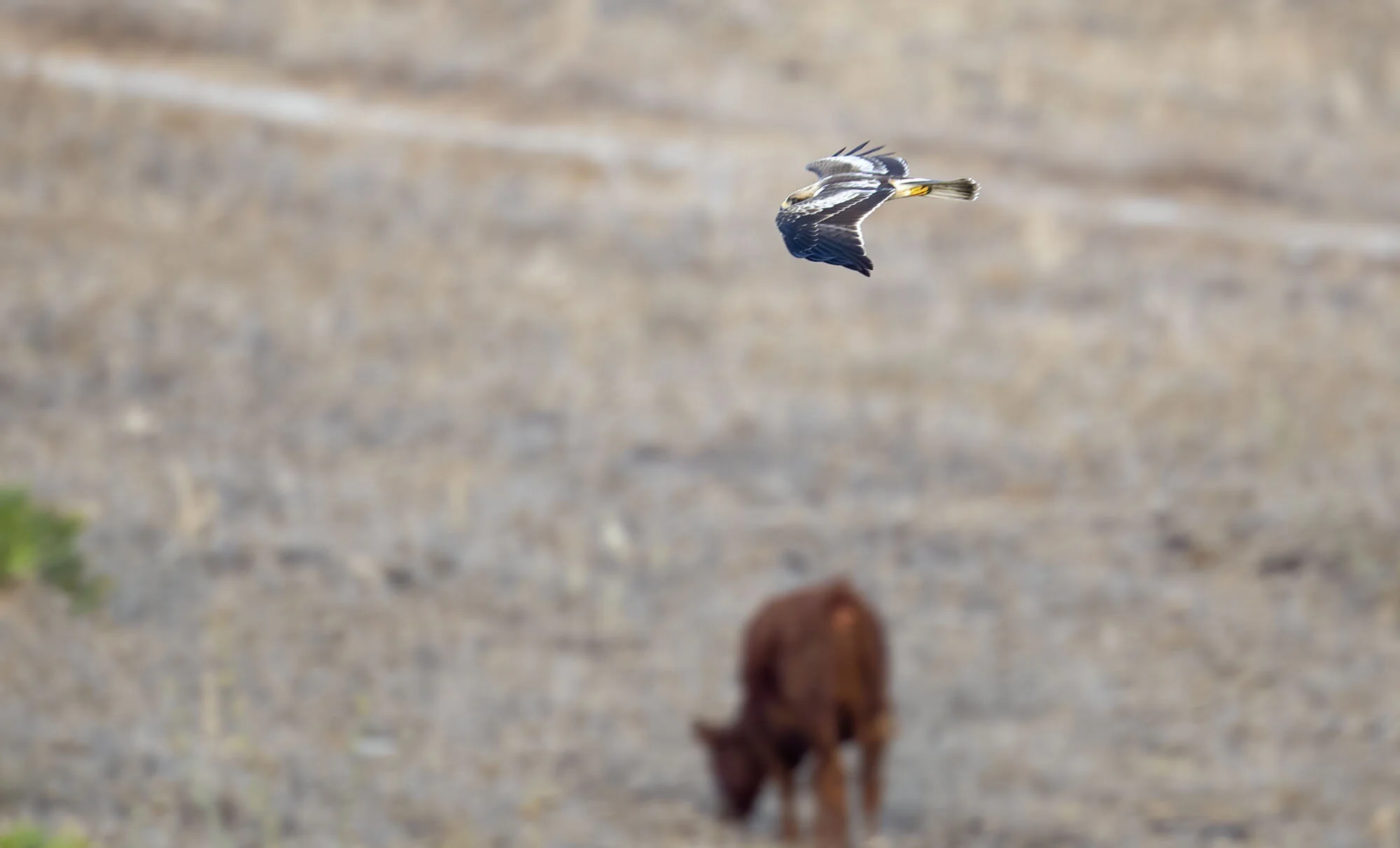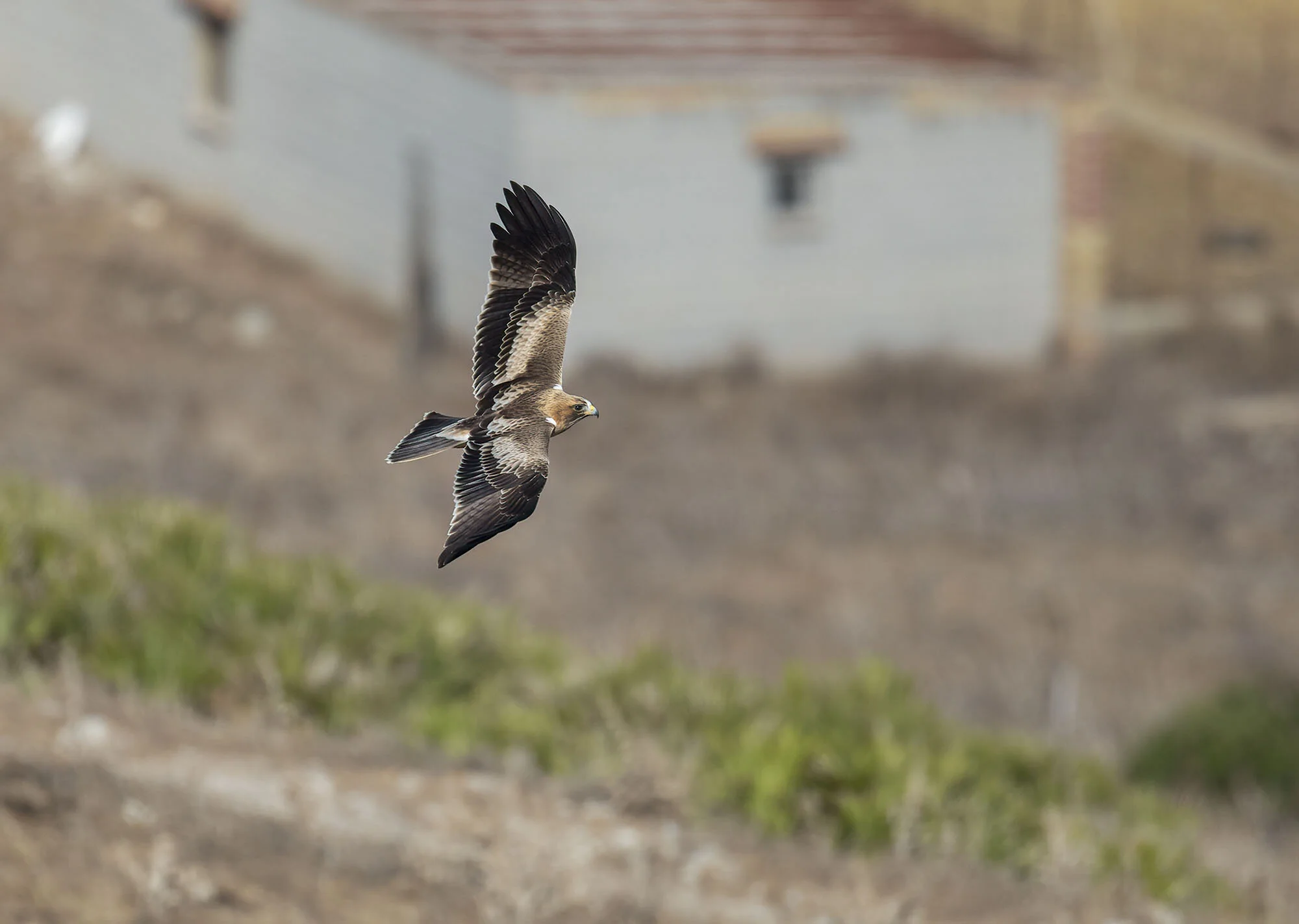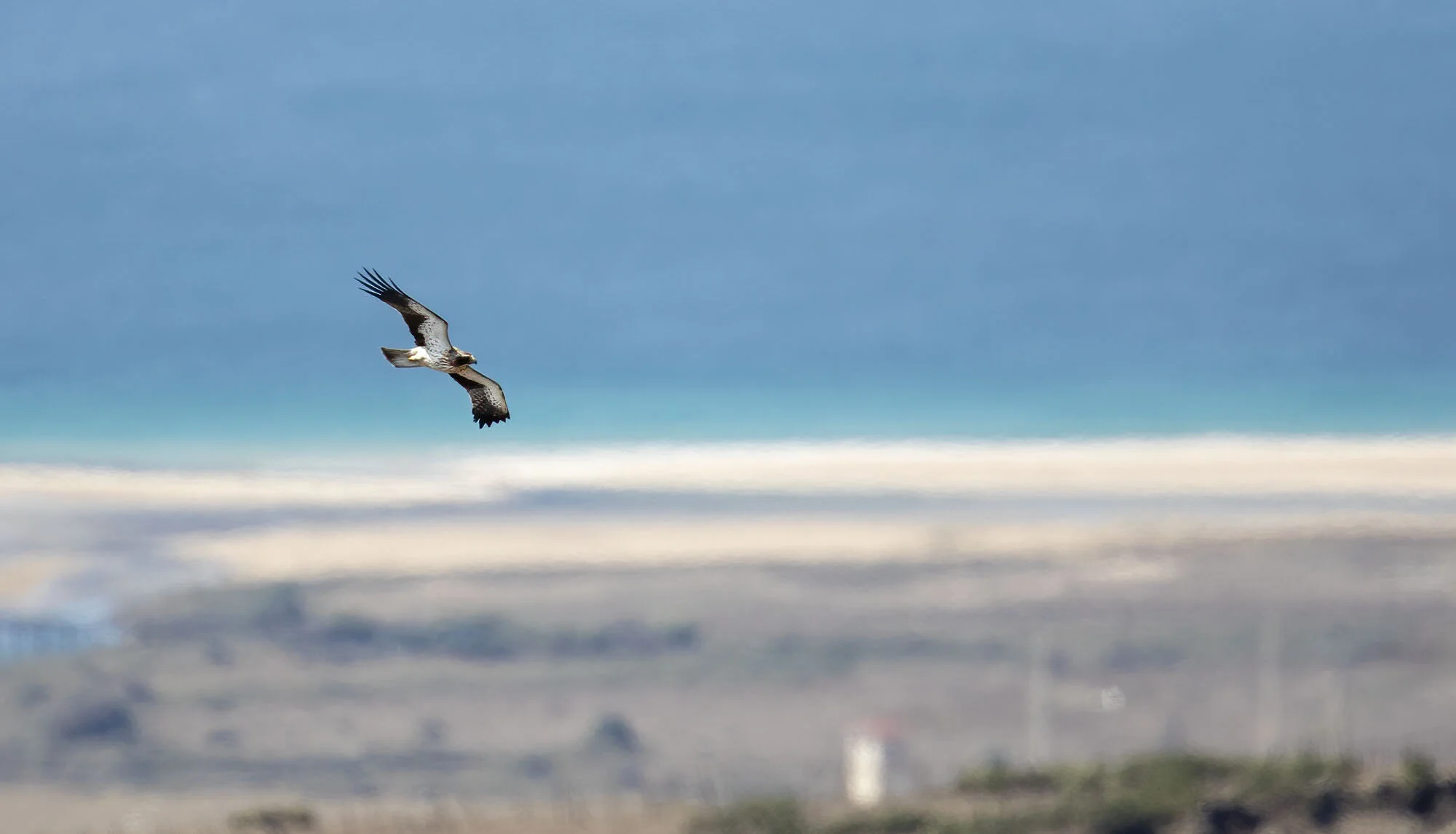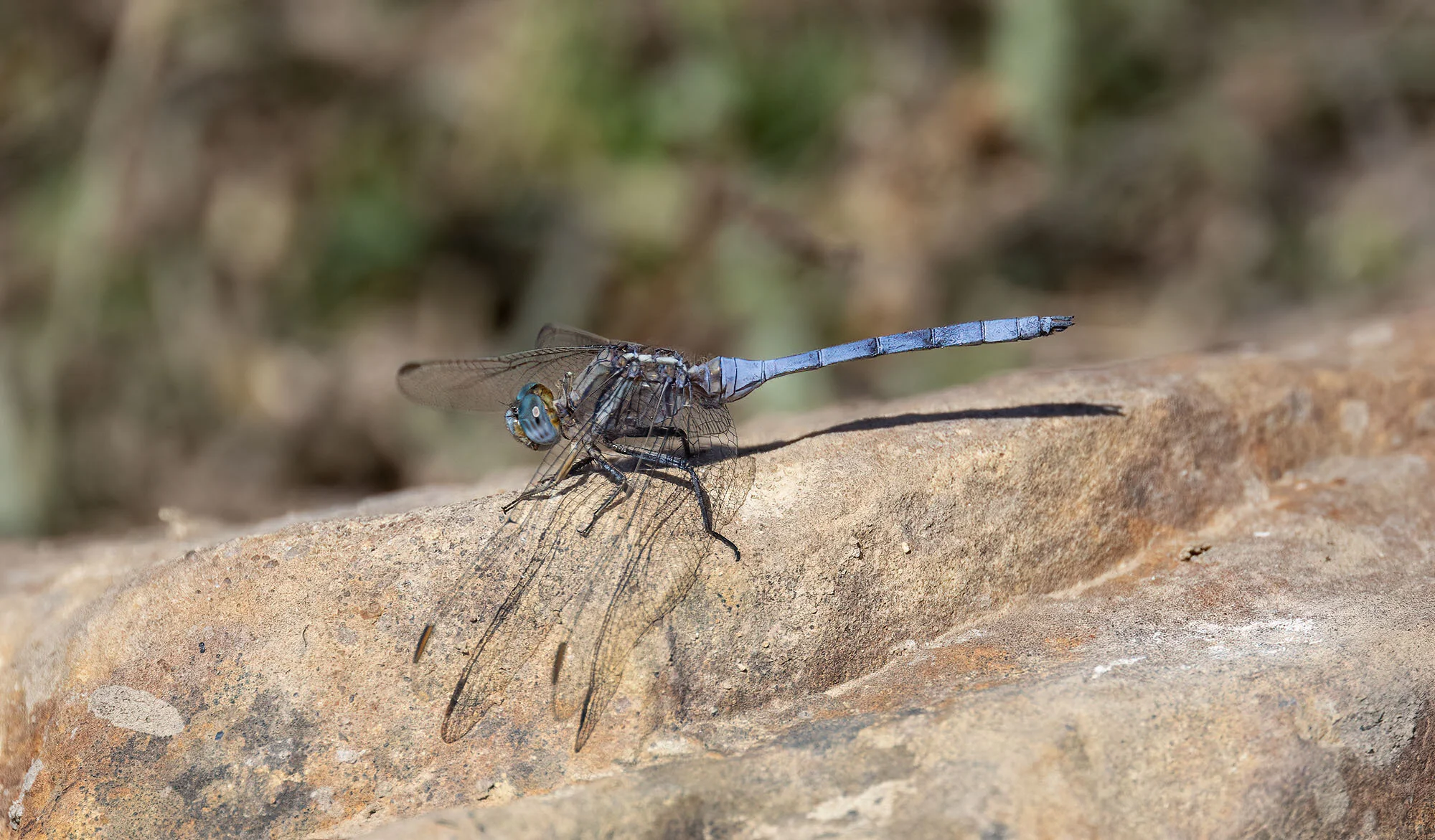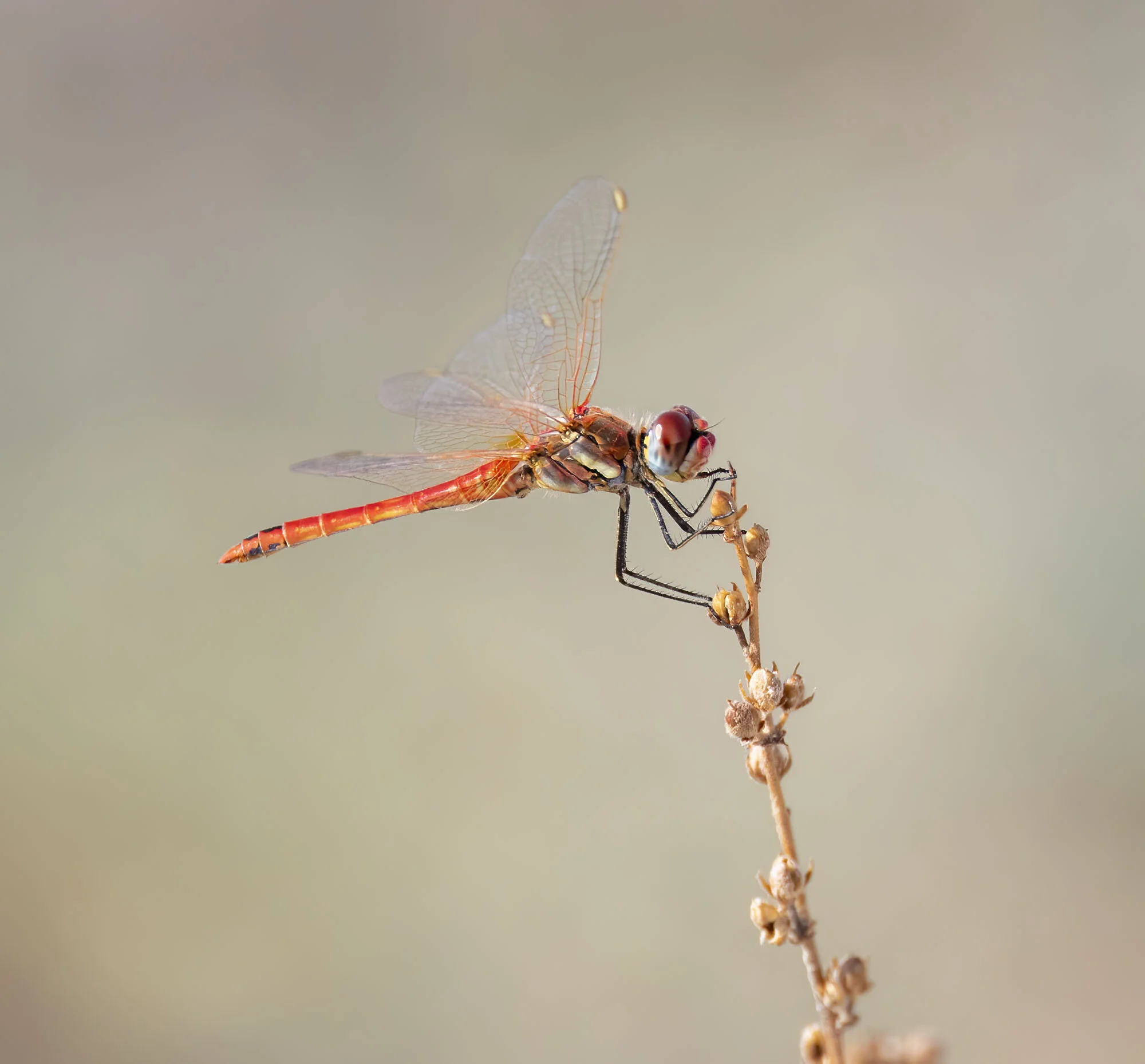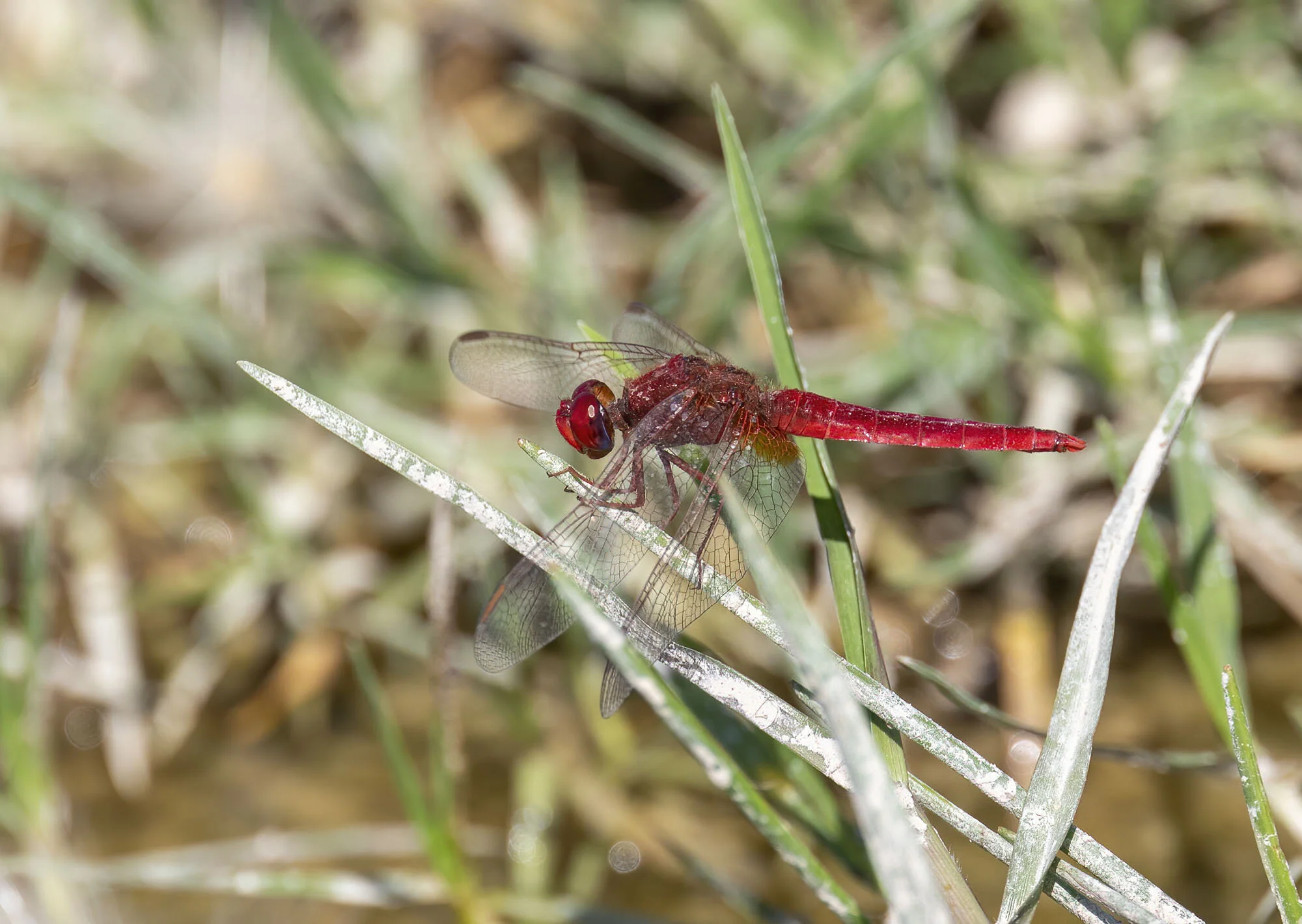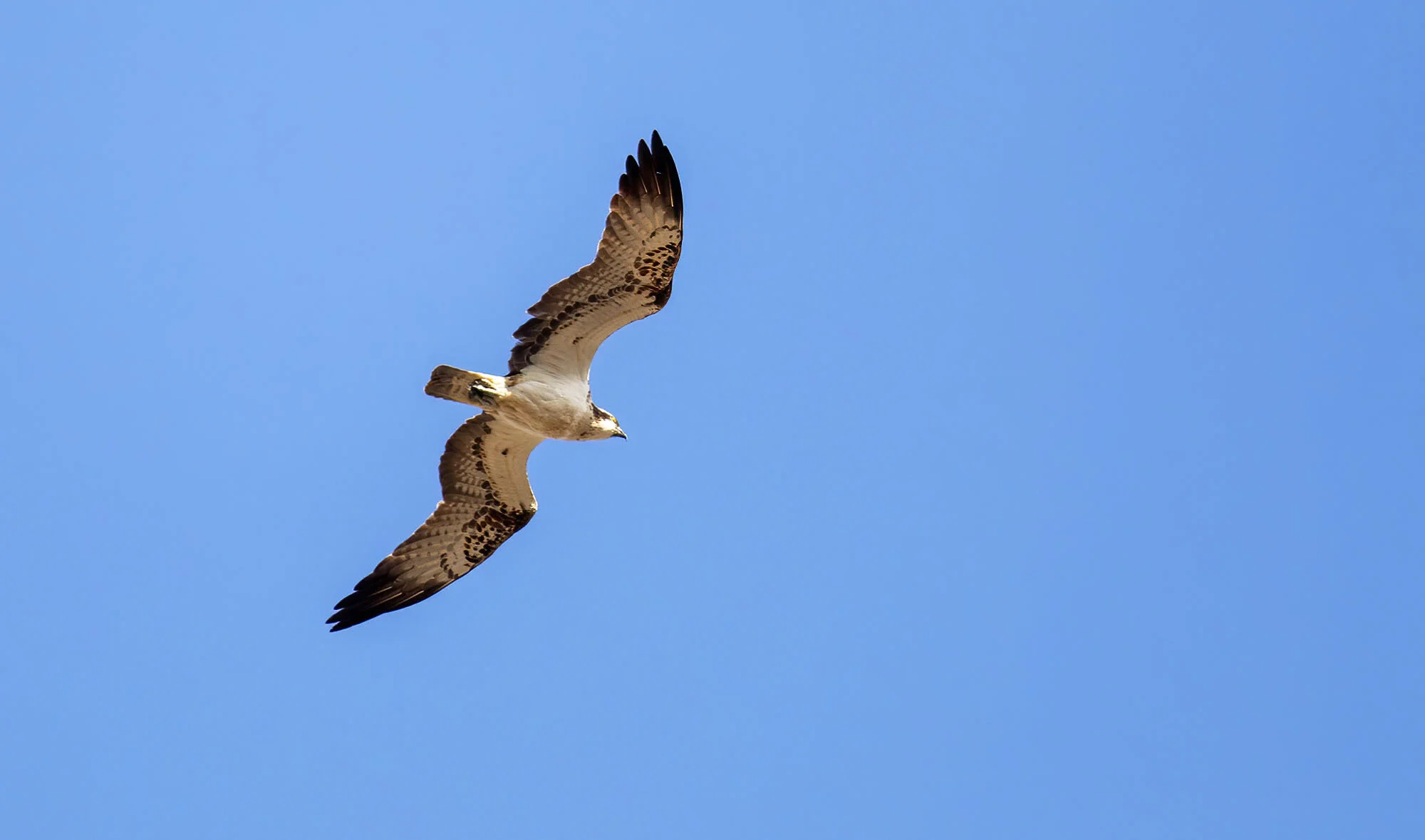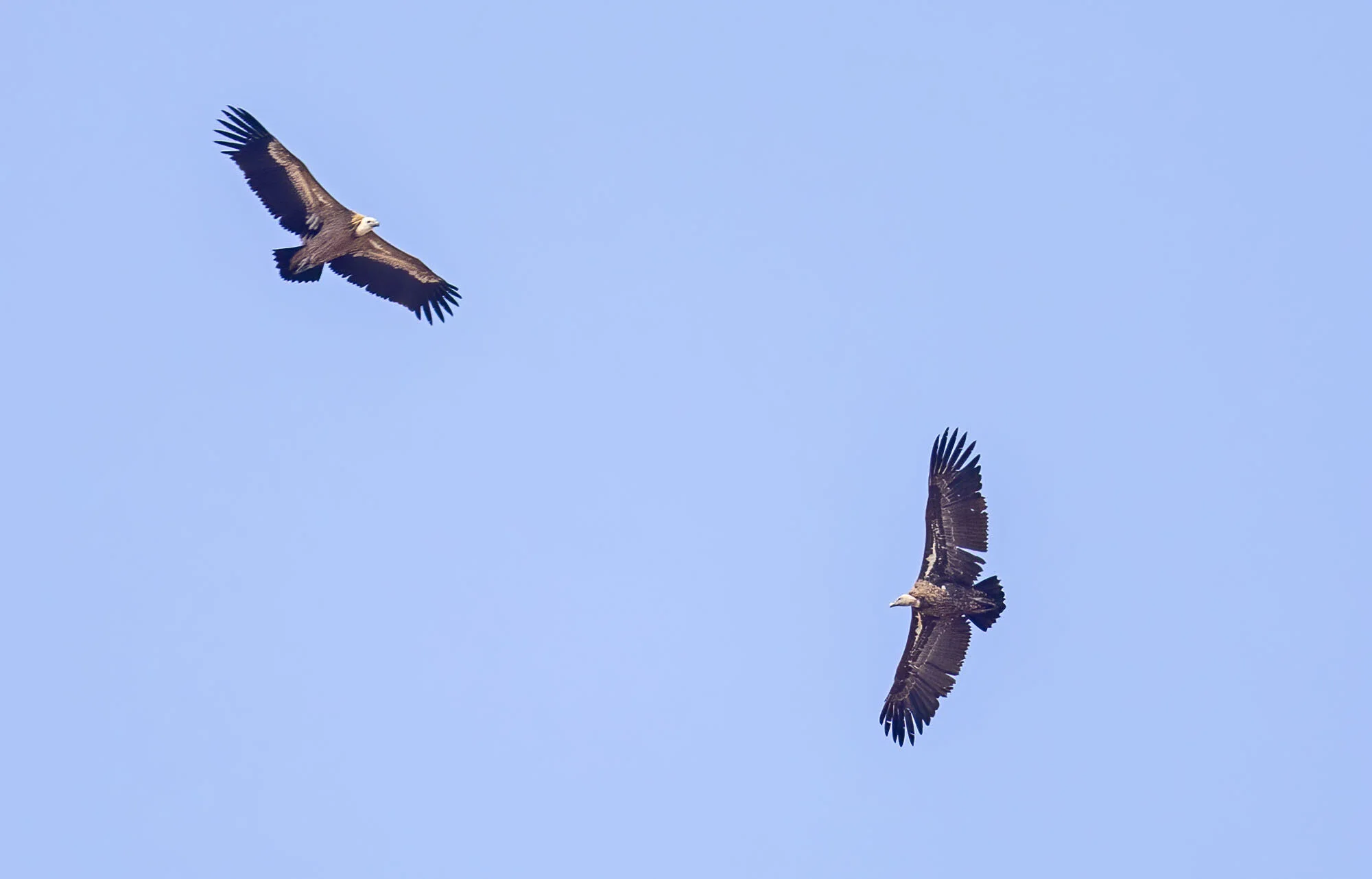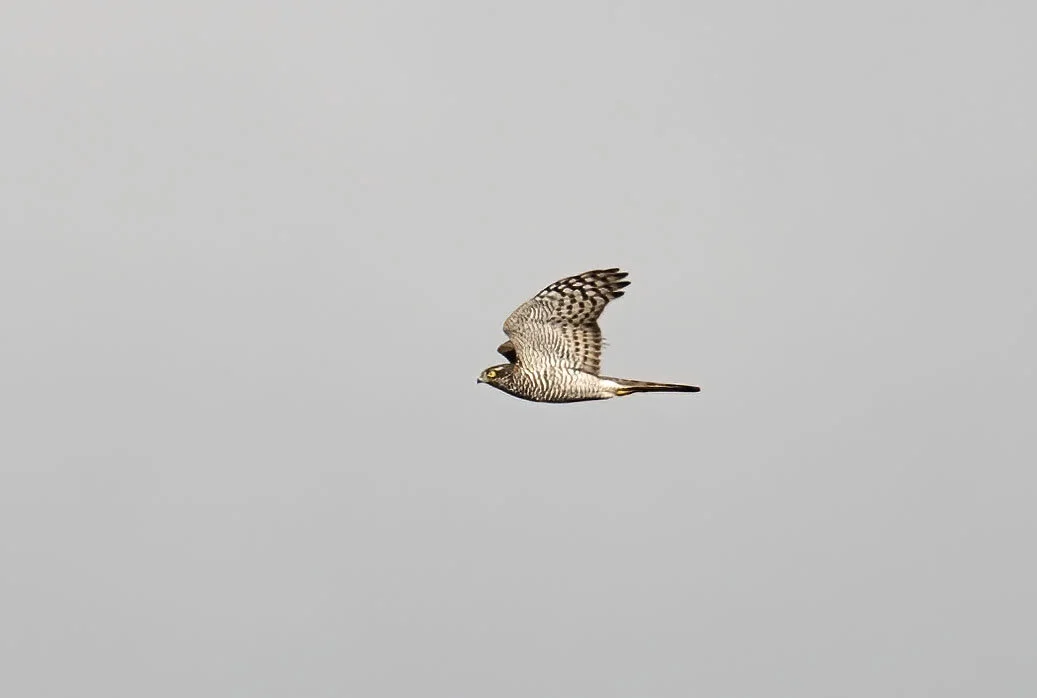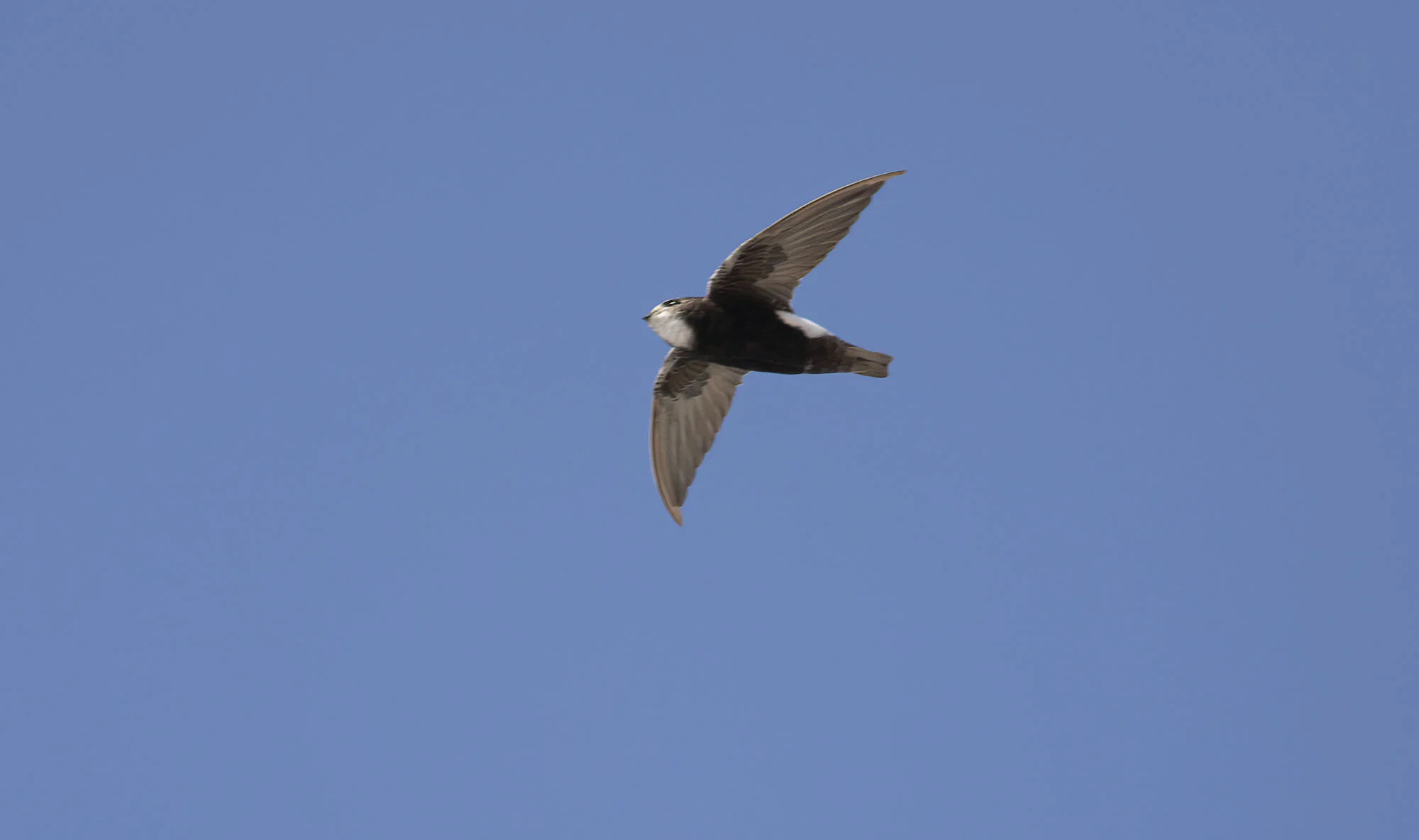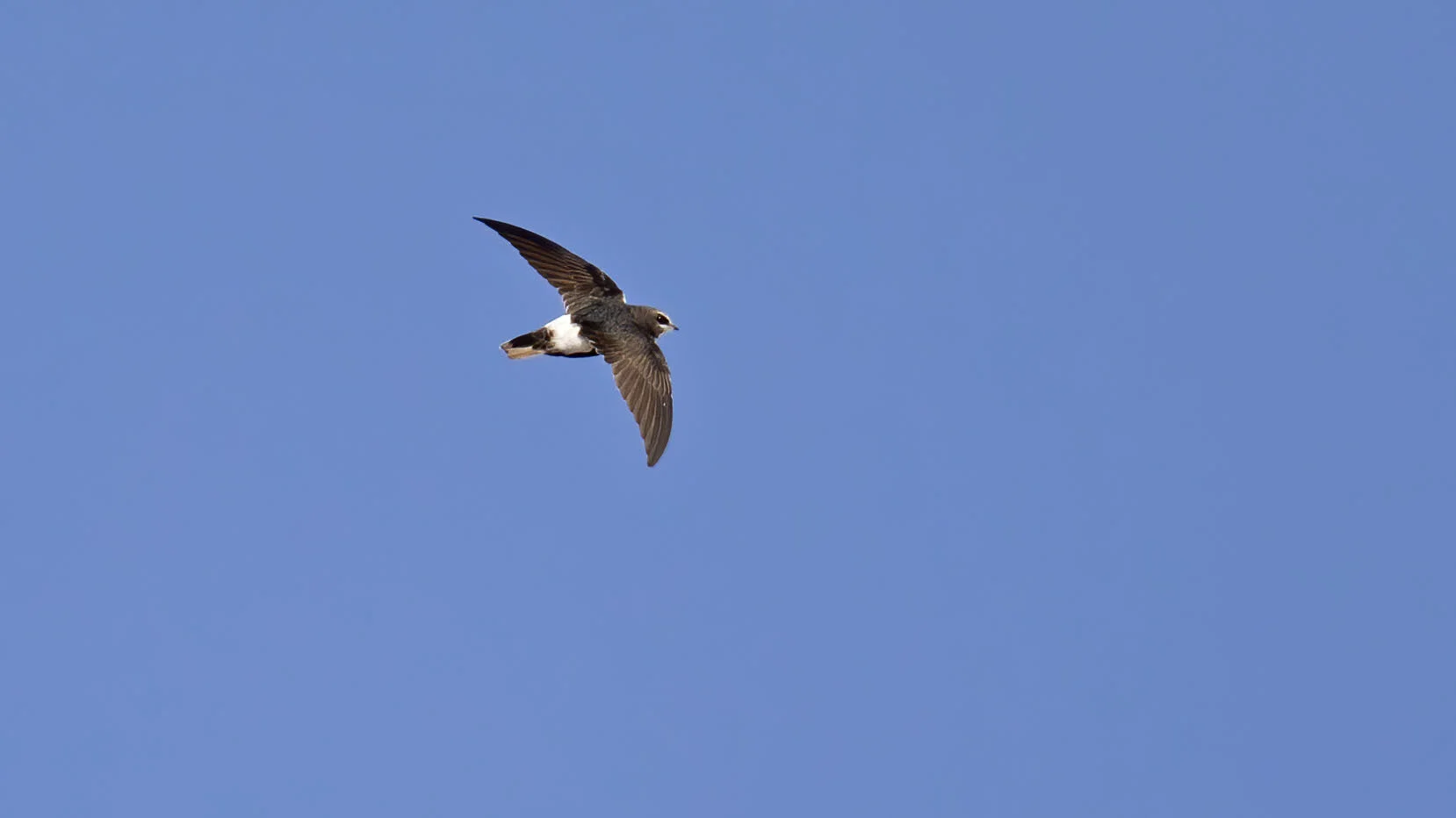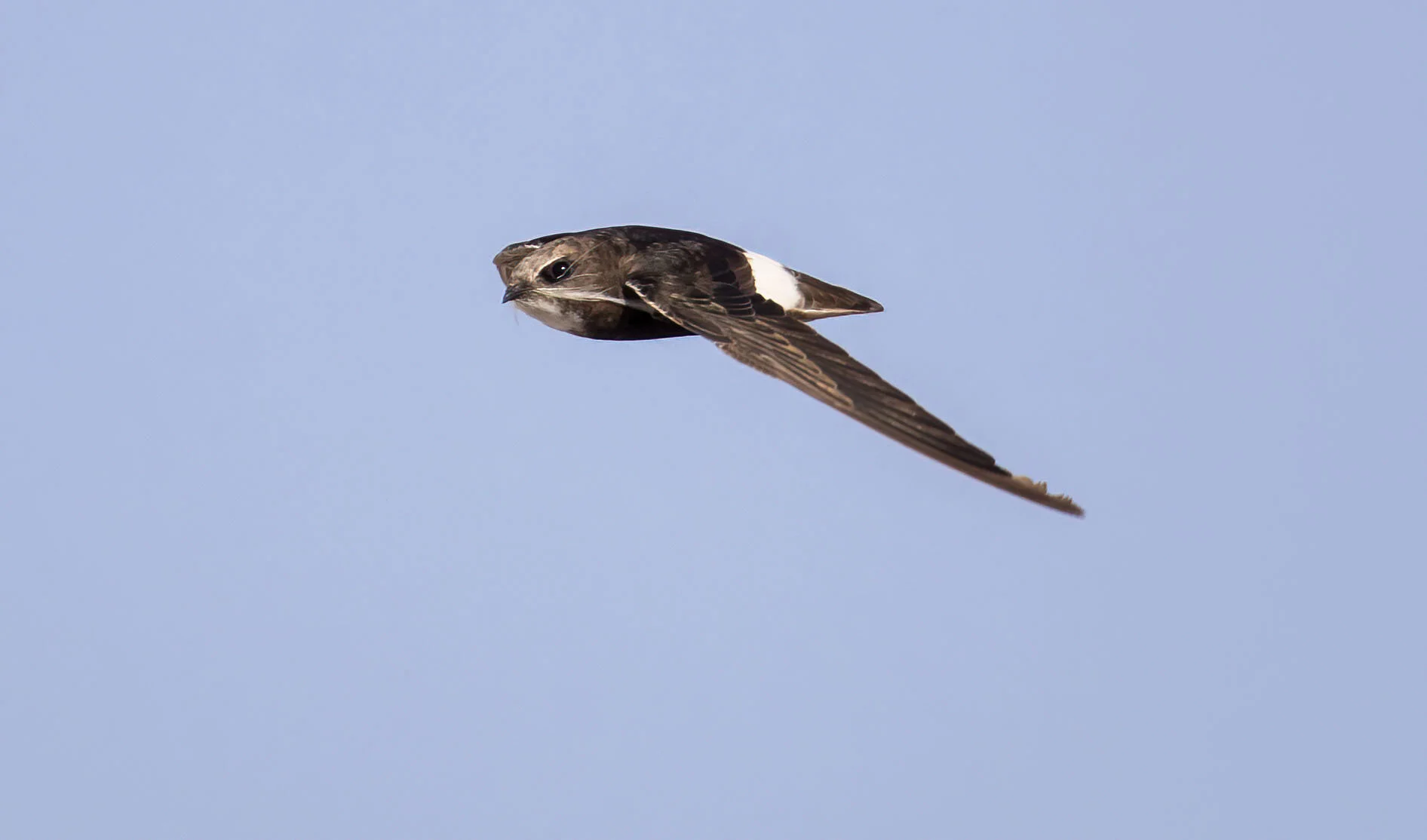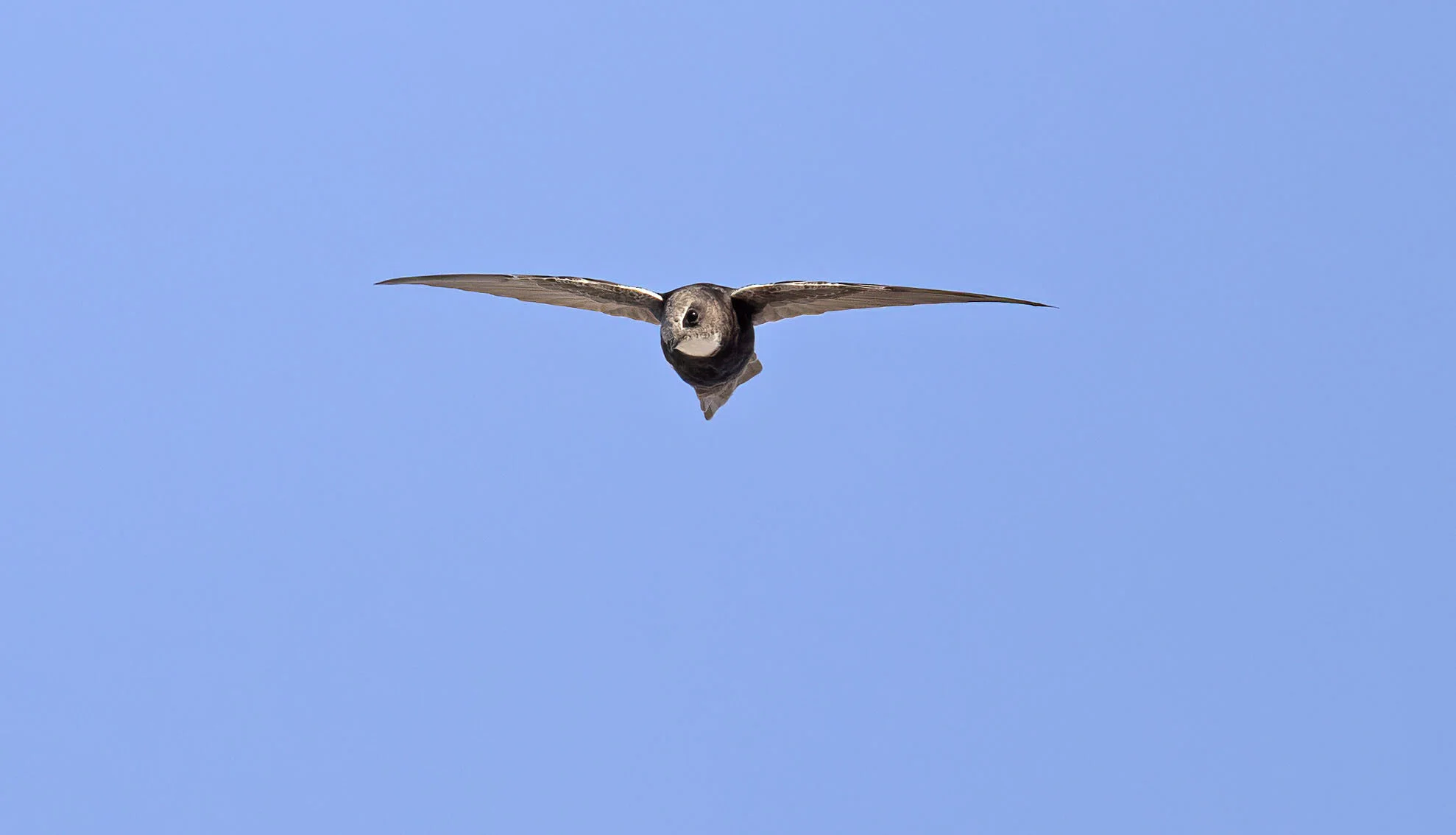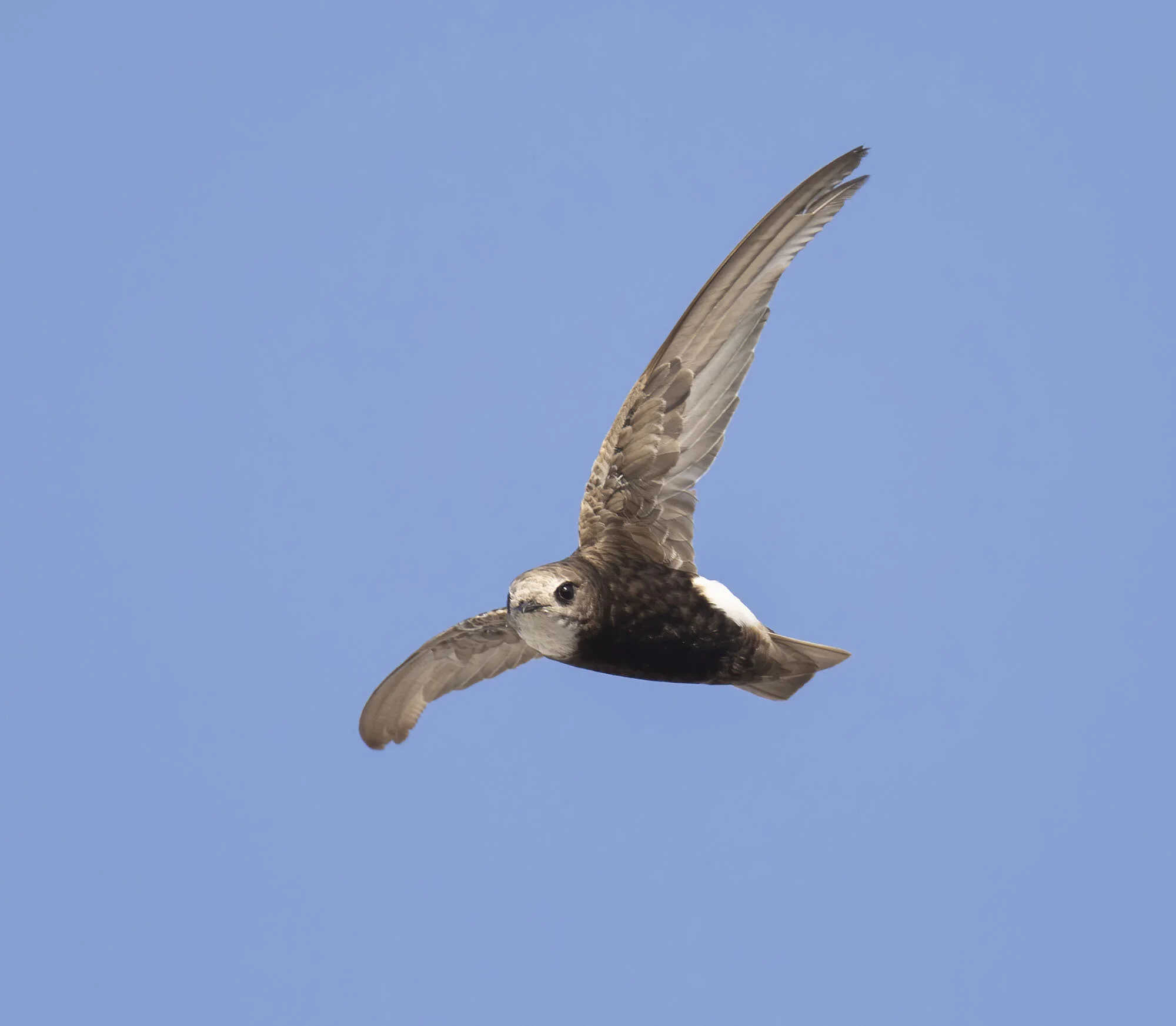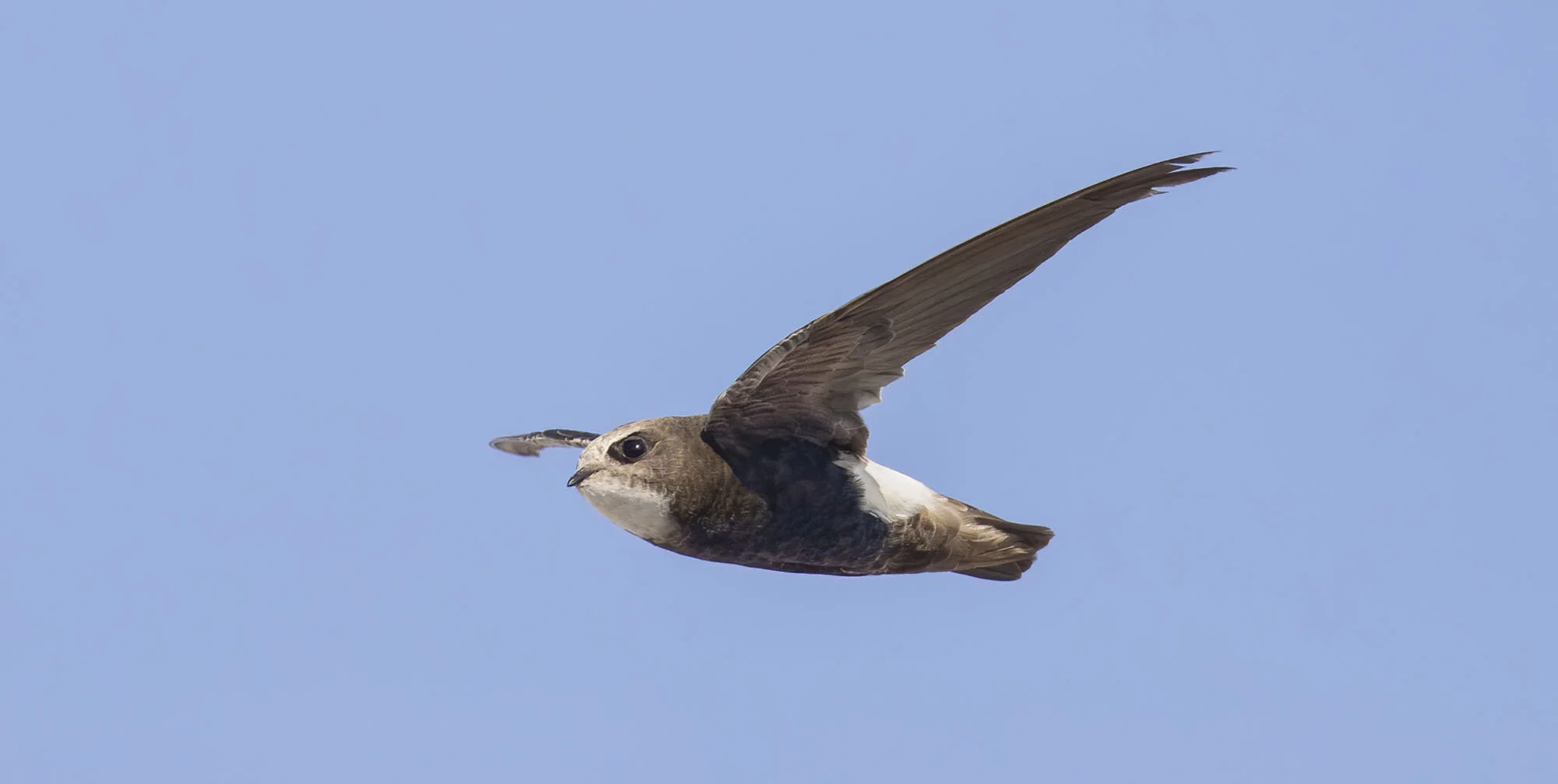Tarifa and local area September 19th - 26th 2017
This visit was a bit late for raptor variety but we did very well with high raptor counts on two days 22nd and 24th with 1500 Short-toed Eagles on the two days plus 870 Booted Eagles and 67 Honey-buzzards, a decent total for the dates. There were also 550 Black Storks over the viewpoint on those two dates. The juvenile Montagu’s Harriers at La Janda were brilliant and it was good to finally catch up with juvenile and 2cy Bonelli’s Eagle. A flock of 330 Calandra Larks and two Dotterel at Los Lances finished off the week but as usual there was some really great birding though the views of passing raptors and the photographic opportunities were superb even if we did miss the perched Red-necked Nightjar that had been in the same spot for a week before we arrived.
Sparrowhawk Accipiter nisus a study in raptor moult. Tarifa is such a great spot to see raptors at eye level and even from above something you rarely get the chance of in Britain and the light is generally superb.
The view looking east from Cazalla raptor viewpoint over Tarifa town. Many of the raptors pass between the town and the viewpoint depending on wind conditions.
Looking down to Los Lances beach from Cazalla in strong easterly winds raptors are often drifted out over the beach and the bay
Looking across the Straights to Jebel Musa in Northern Morocco from Cazalla; first landfall for a lot of raptors
Honey-buzzards Pernis apivorus
One of my favourite raptors and it was great to get some decent images of both a variety of adults and several juveniles of which the dark phase predominated but there were a few of the striking panda faced pale phase juveniles and some intern=mediate birds.
Adult Honey-buzzards
juvenile Honey-buzzards
Egyptian Vultures Neophron percnopterus
Black and White Storks
Short-toed Eagles Circaetus gallicus
A few images of some of the 1500 Short-toed Eagles we saw in the week

Montagu’s Harrier
Another of the highlights of the trip was seeing regular Montagu’s Harriers particularly at La Janda where a number of juveniles were feeding daily; unfortunately they were often into the light which made photography tricky. Left is a typical juvenile male sexed by the pale iris and underwing pattern. Below are a selection of images mainly of juveniles but more shots of adults and 2cy birds will be added to the Cyprus file in the near future.
Below a juvenile male

Below a selection of juvenile / 1cy females
and some other images of juveniles
serious inner primary damage on this bird’s left wing
all about the light
a stunning 2cy male taken in September he is a moult lovers dream
Adult and juvenile Black Kite Milvus migrans
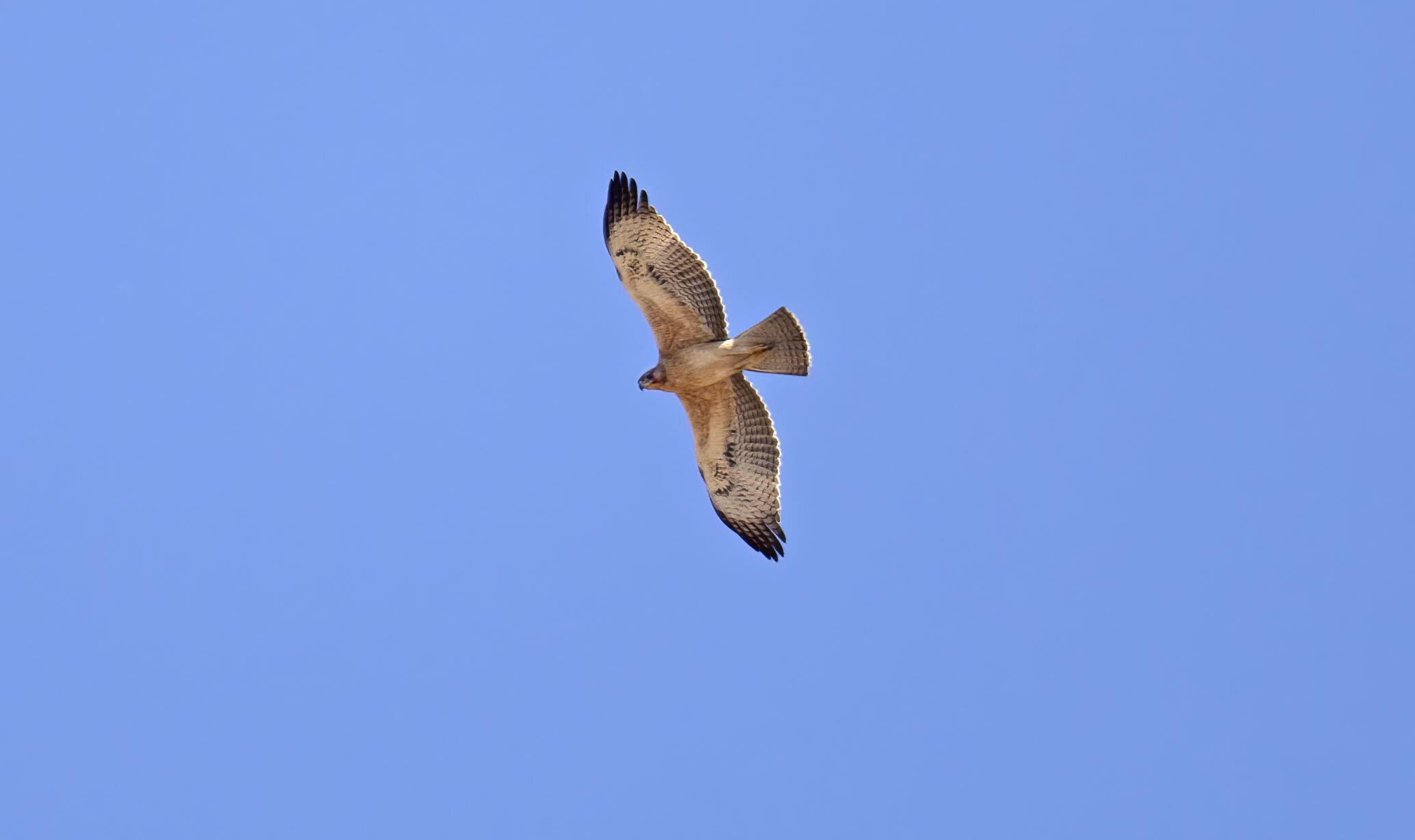
Bonelli’s Eagle Aquila fasciata
this was my first juvenile Bonelli’s and what a smart bird but a pity it did not come a bit closer - over La Janda

Booted Eagles Hieraaetus pennatus
A section on Booted Eagles split into juveniles and adults with some more landscape type images of birds passing the Cazalla watch point. Two colour forms, pale and dark, occur with considerable variation in the dark form which includes some rather rufous birds and even within the pale morph there is a lot of minor variation in both adult and juvenile plumages.
Adults of pale and dark morphs below
Booted Eagles on migration from Cazalla
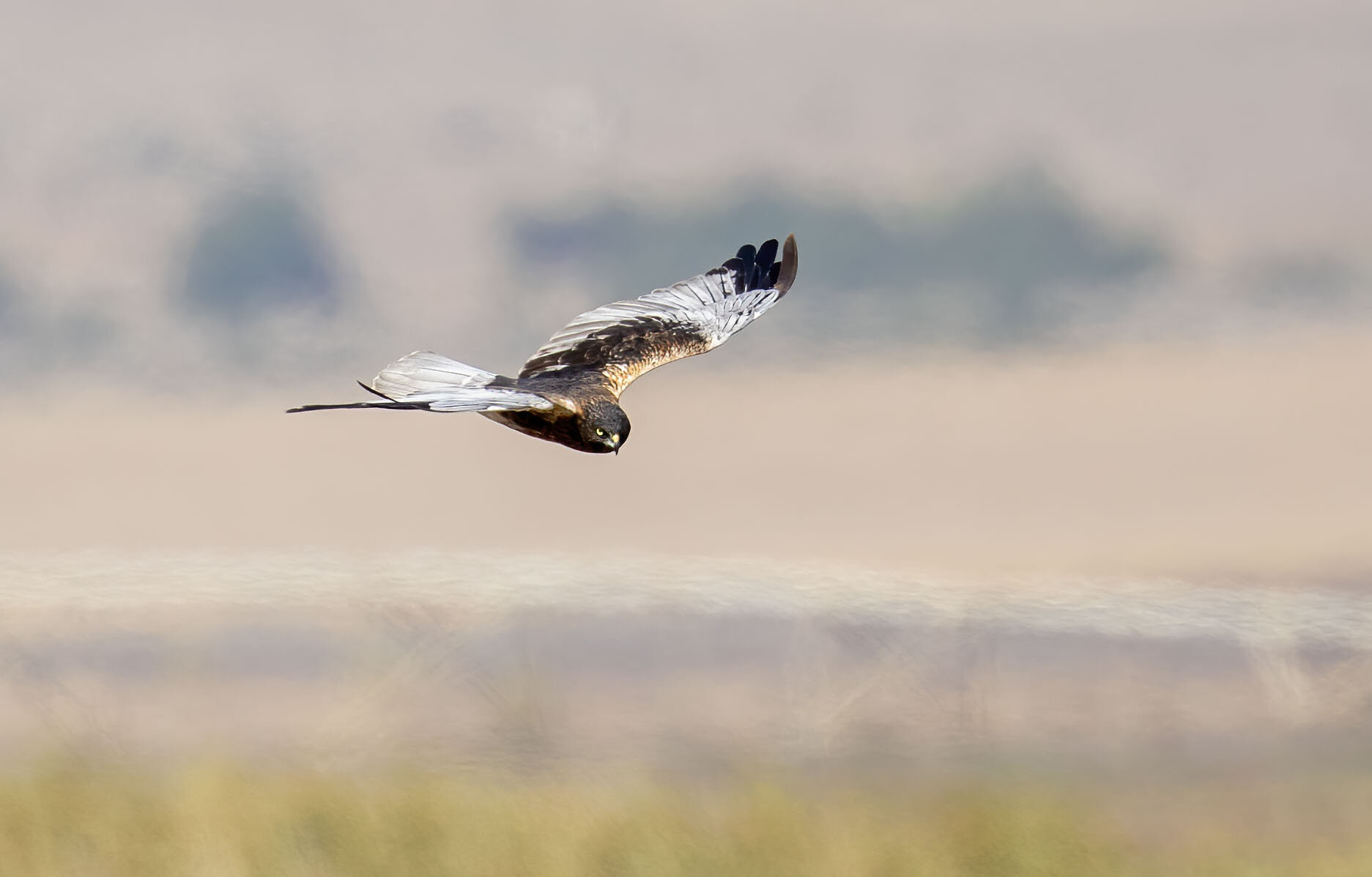
Marsh Harrier
This striking adult male Marsh Harrier Circus aeruginosus was over La Janda during the trip; I have never seen an adult male with a head pattern like this - other images of the same bird below - wonder about its origins?
this striking adult male Marsh Harrier Circus aeruginosus was over La Janda during the trip; I have never seen an adult male with a head pattern like this - other images of the same bird below - wonder about its origins?
Adult male Marsh Harrier Circus aeruginosus
Marsh Harrier Circus aeruginosus appears to be a juvenile but with just a pale nape patch though I took no images of its upperparts for some reason!
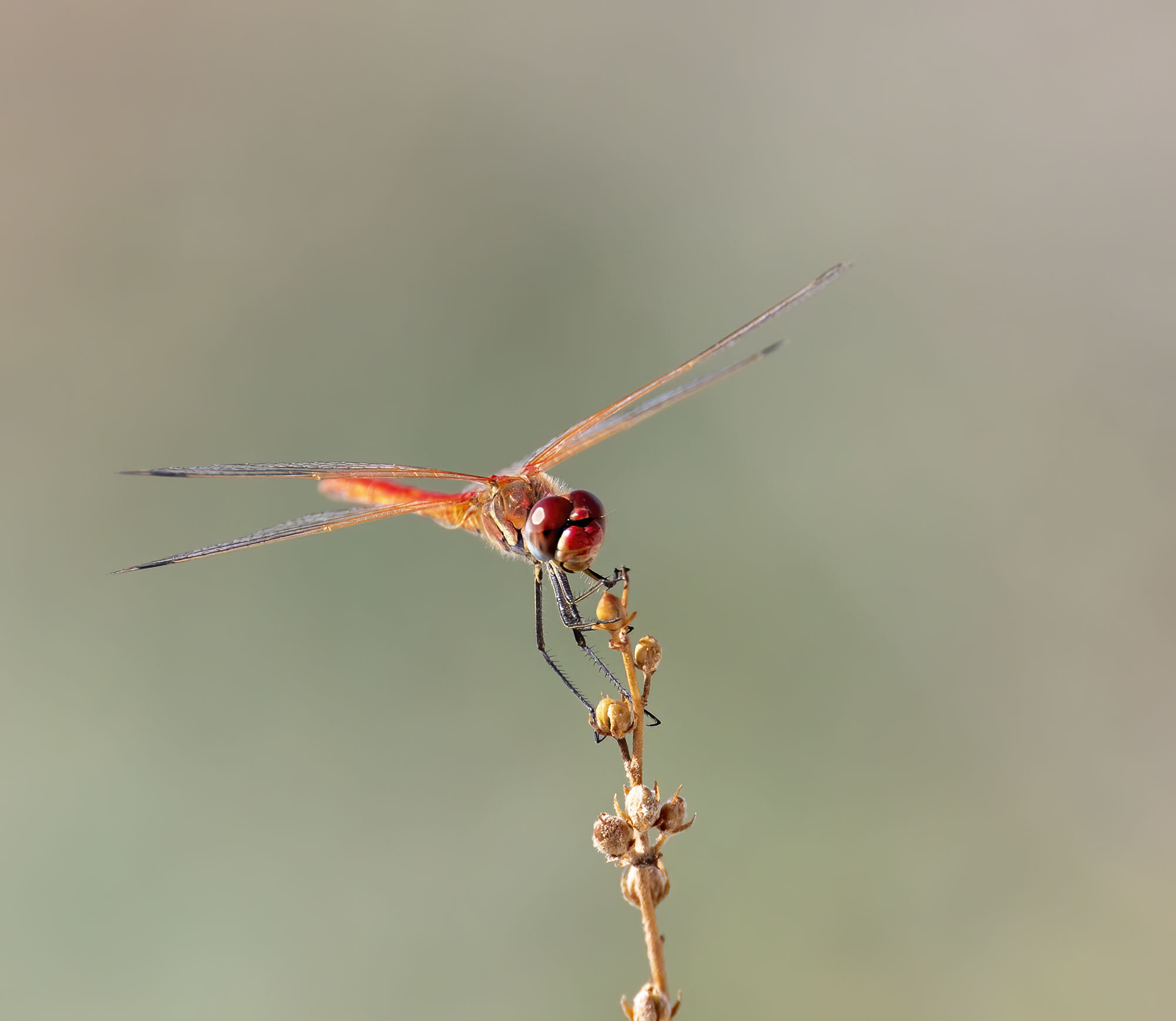
Odonata
Banded Groundling Brachythemis leucosticta
Banded Groundling Brachythemis leucosticta
Epaulet Skimmer Orthetrum chrysostigma
Epaulet Skimmer Orthetrum chrysostigma
Epaulet Skimmer Orthetrum chrysostigma
Keeled Skimmer Orthetrum coerulescens
Red-veined Darter Sympetrum fonscolombii
Red-veined Darter Sympetrum fonscolombii
Scarlet Darter Crocothemis erythraea
Vagrant Emperor Anax ephippiger
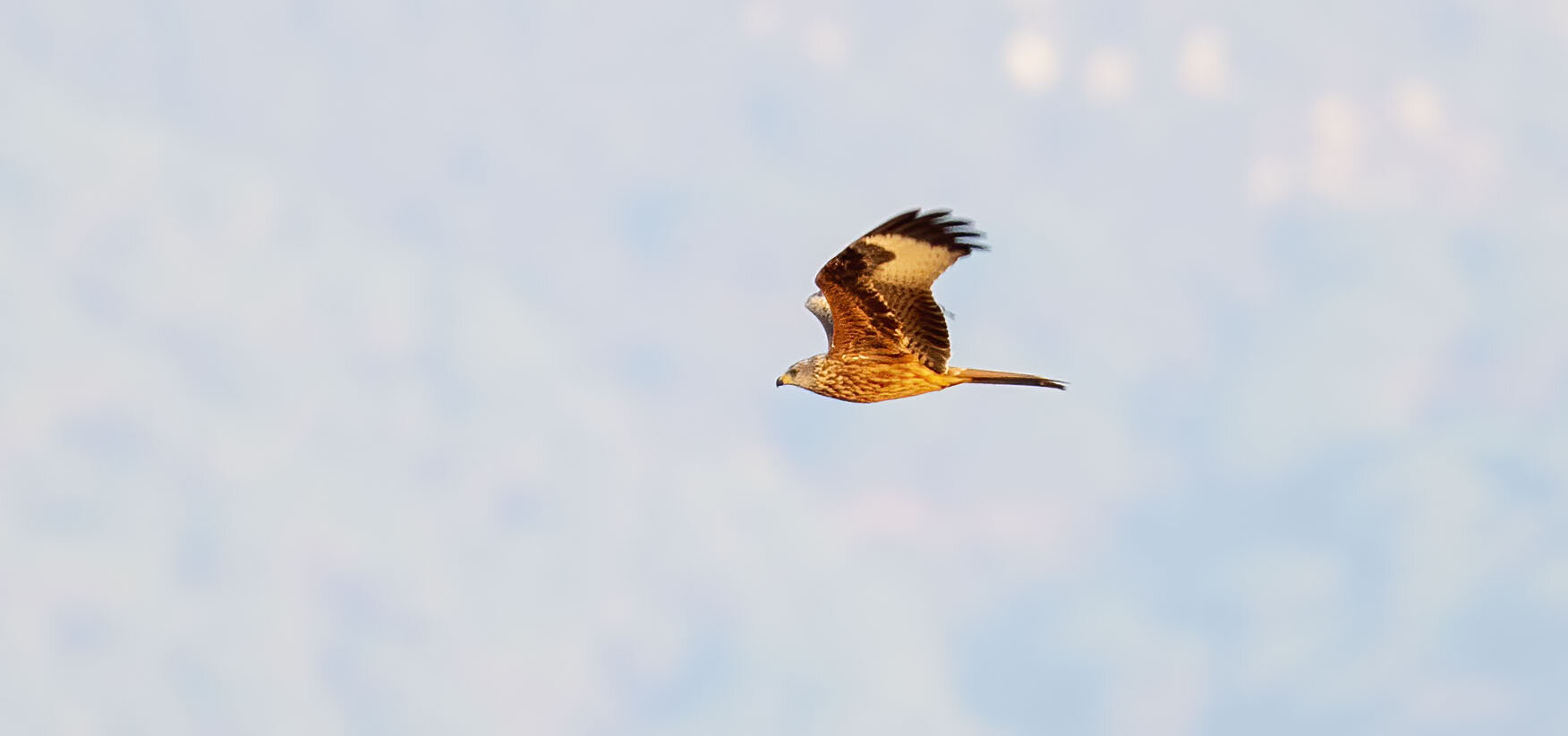
Other raptors from the week
Red Kite (backdrop) Ruppell’s Vulture (with Griffon in one image) and two Ruppell’s with a Honey-buzzard
Sparrowhawk, Lesser Kestrel and Osprey and a flock of Booted and Short-toed Eagles
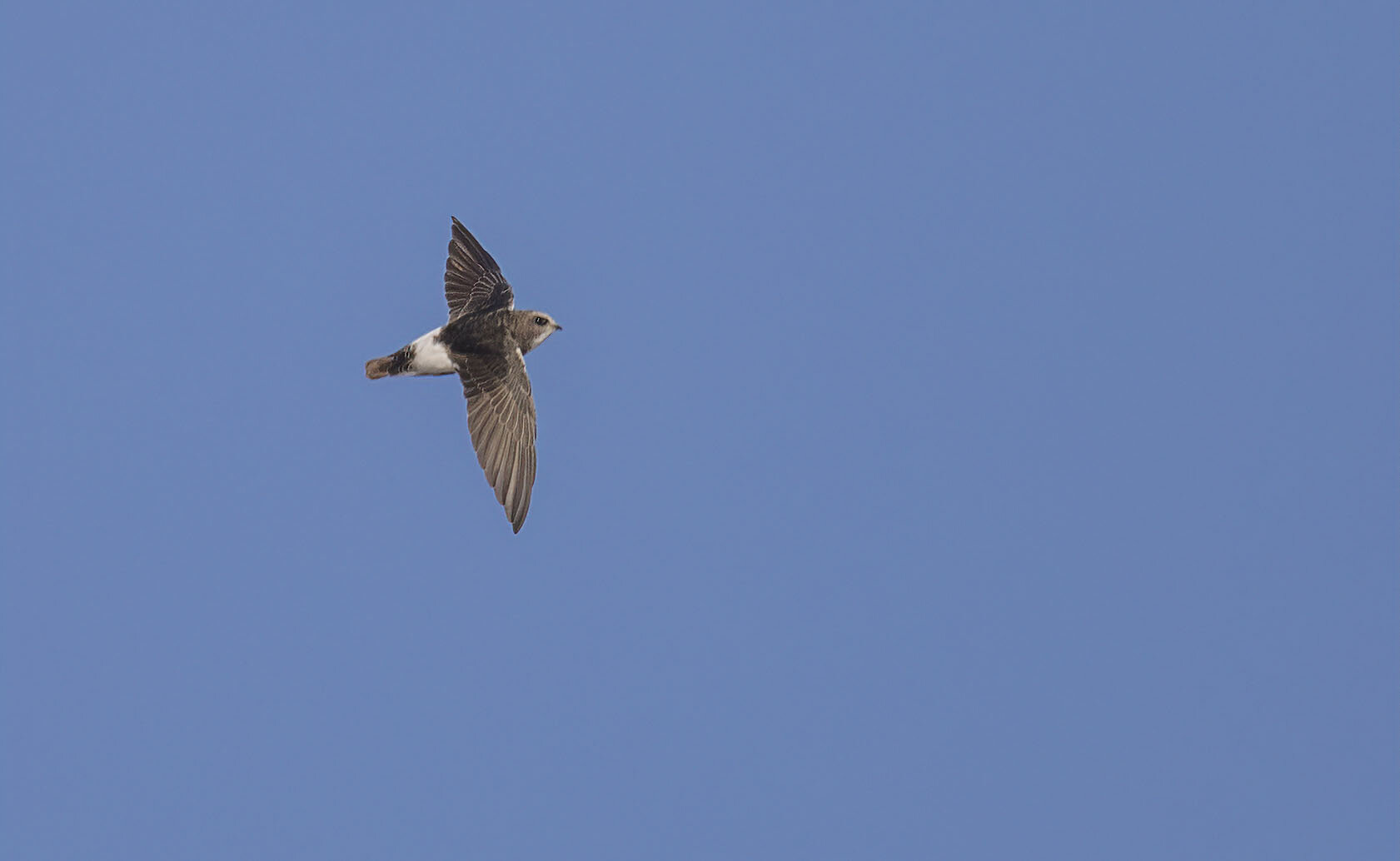
Little Swifts Apus affinis
While in the Tarifa area we went up to the Little Swift colony and had some great views of the birds. I managed some decent images just using the straight 400 DO lens and the Canon 5D4 as the light was so good









